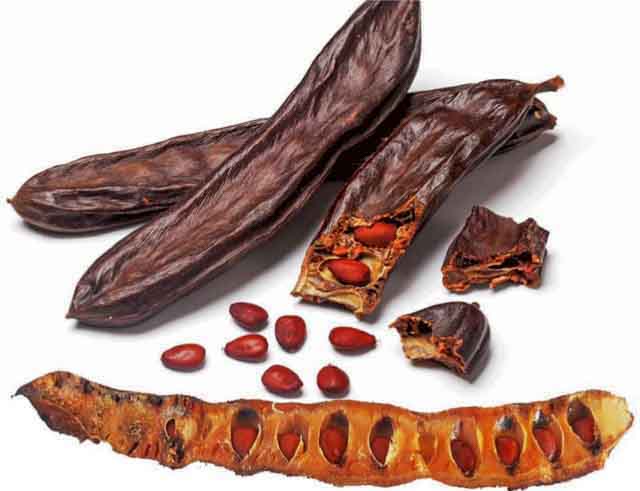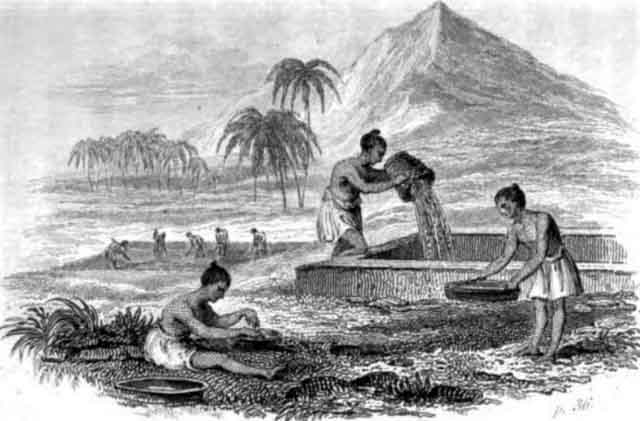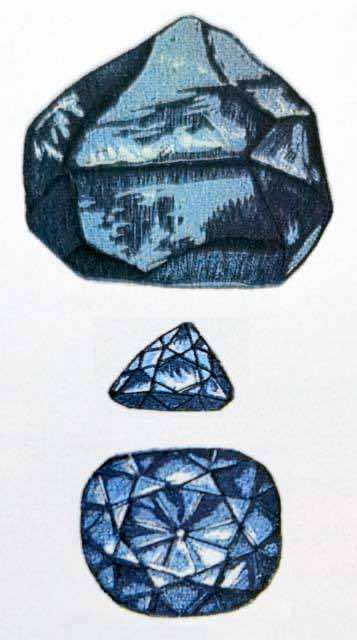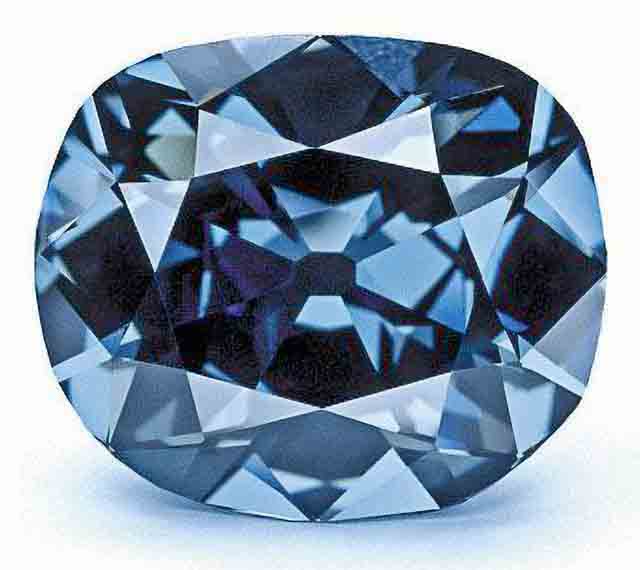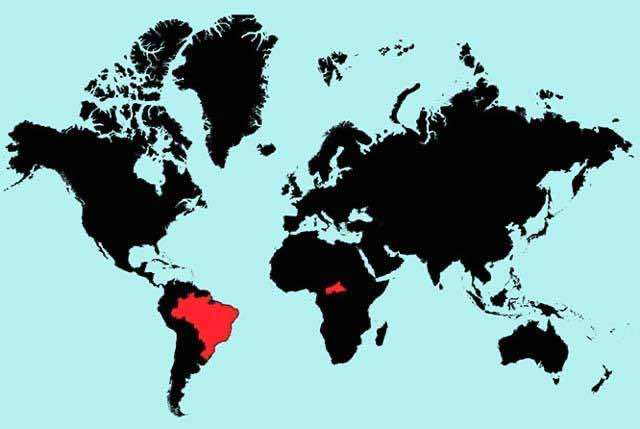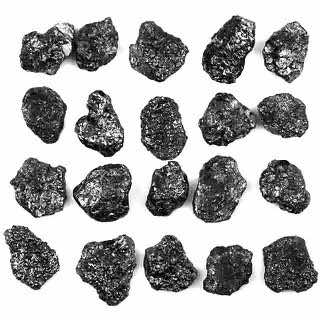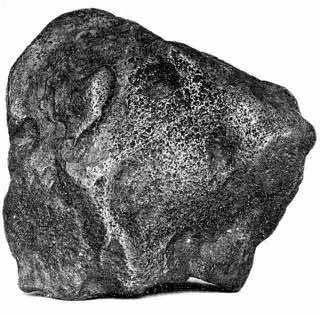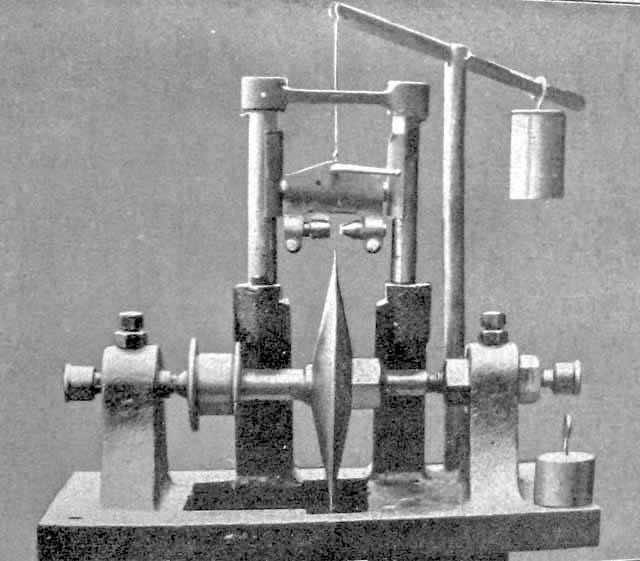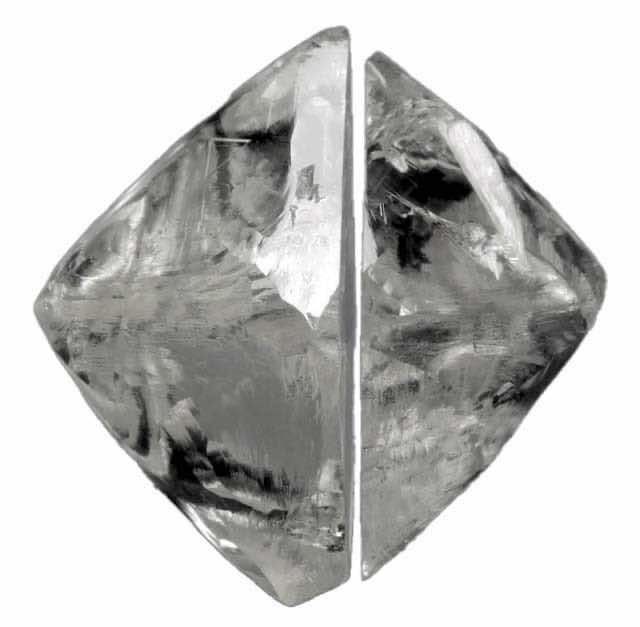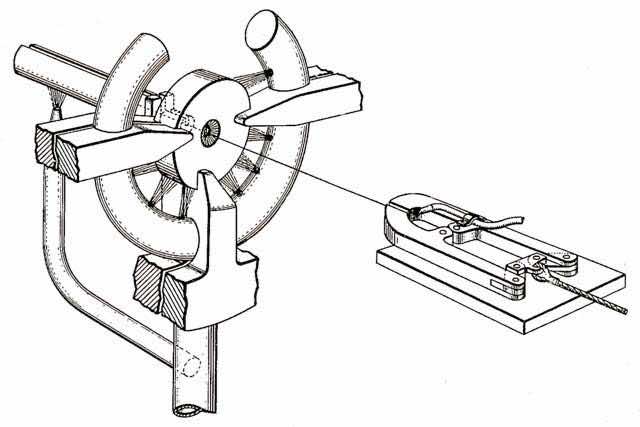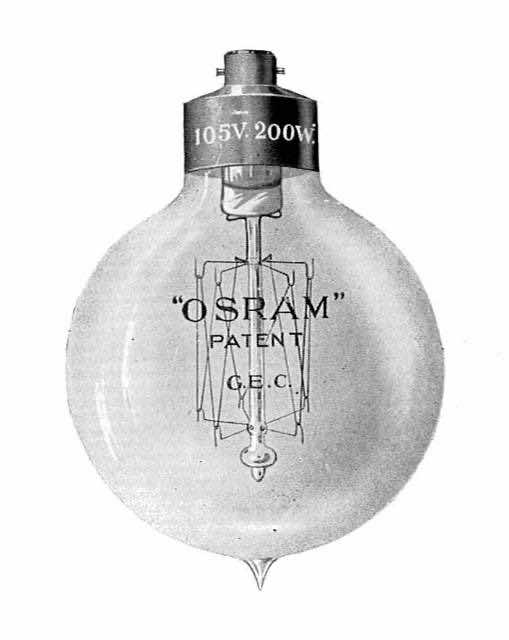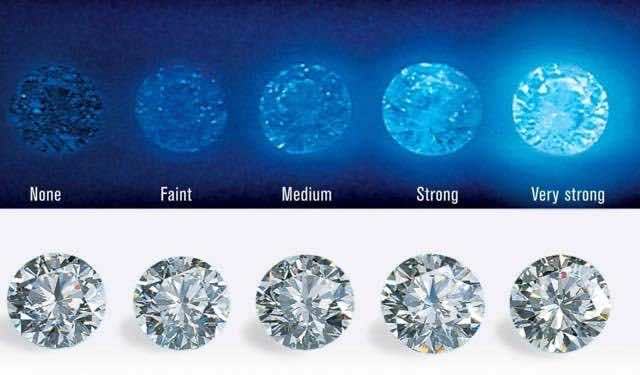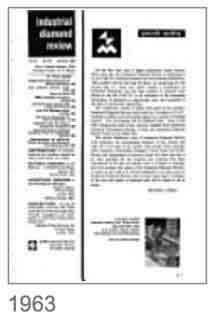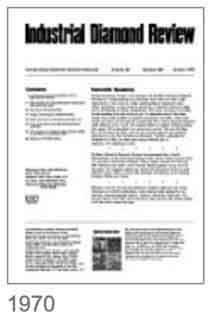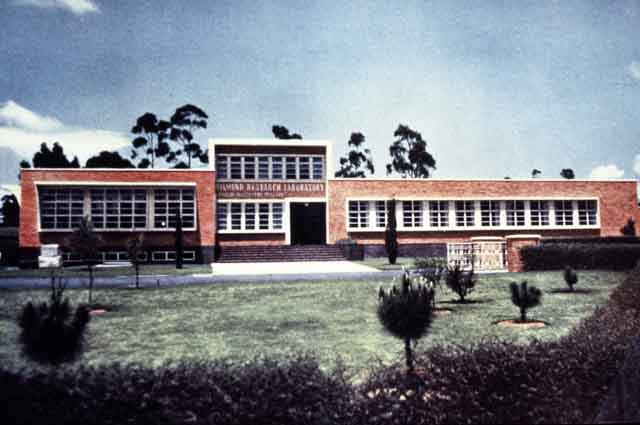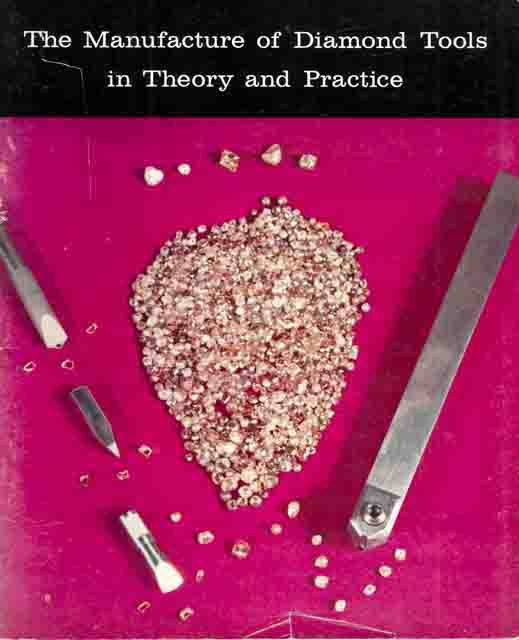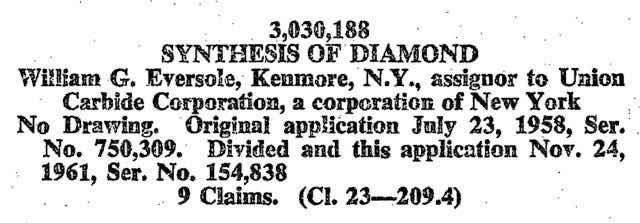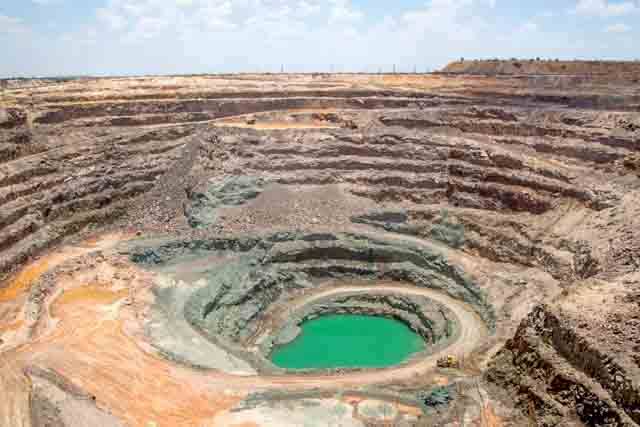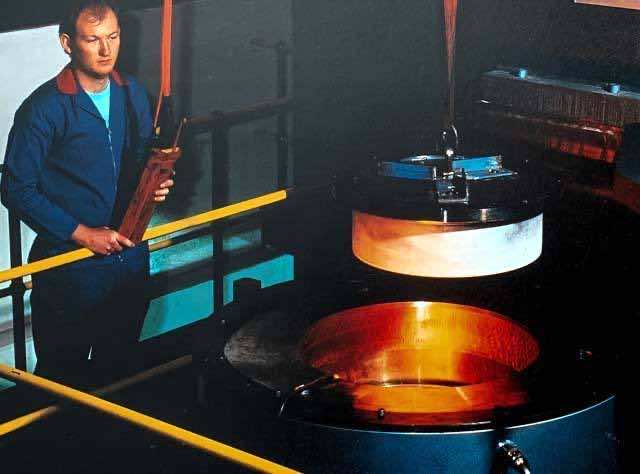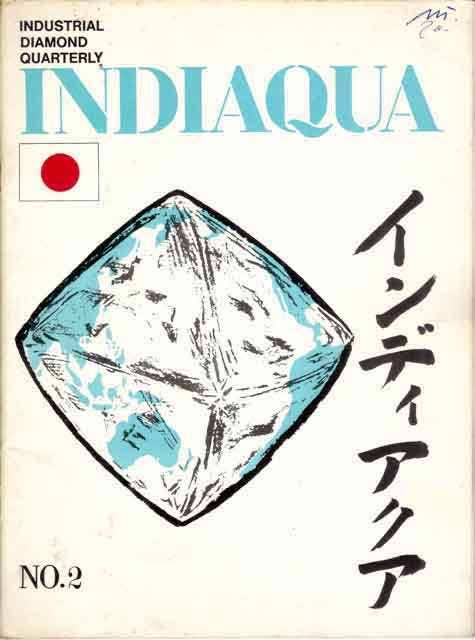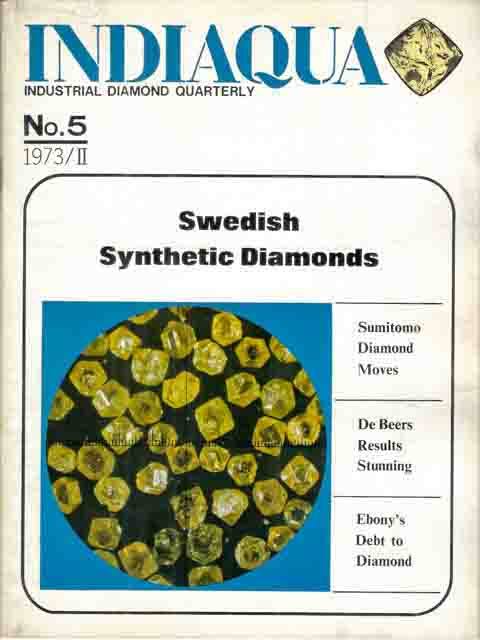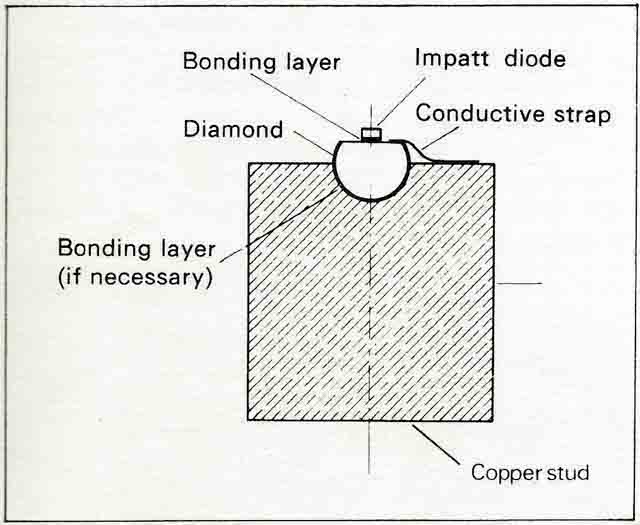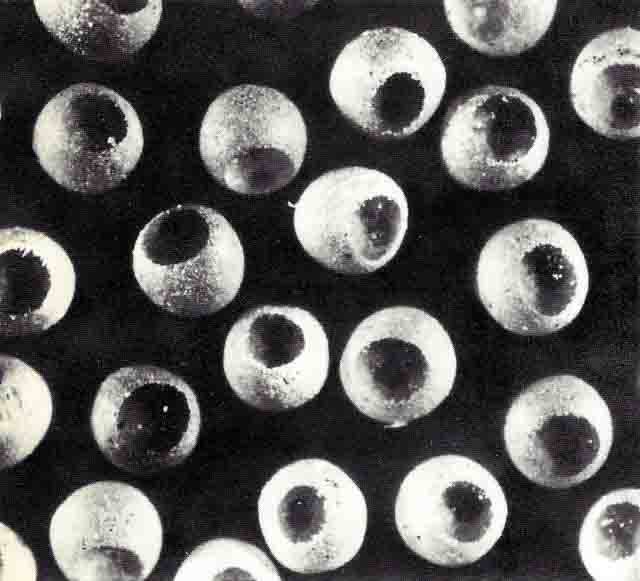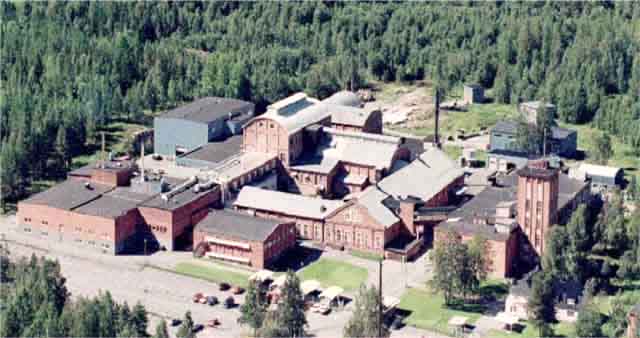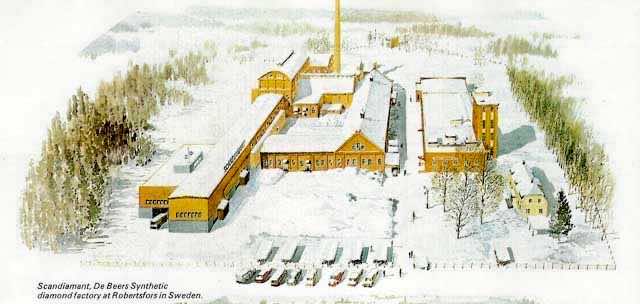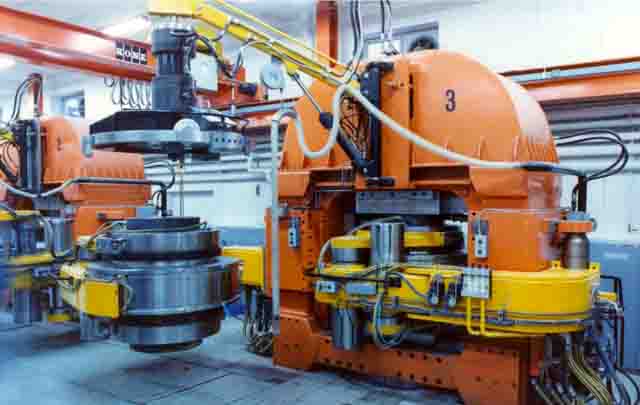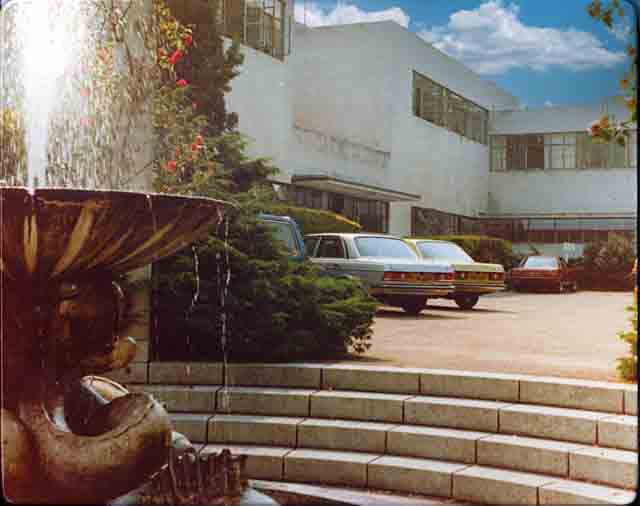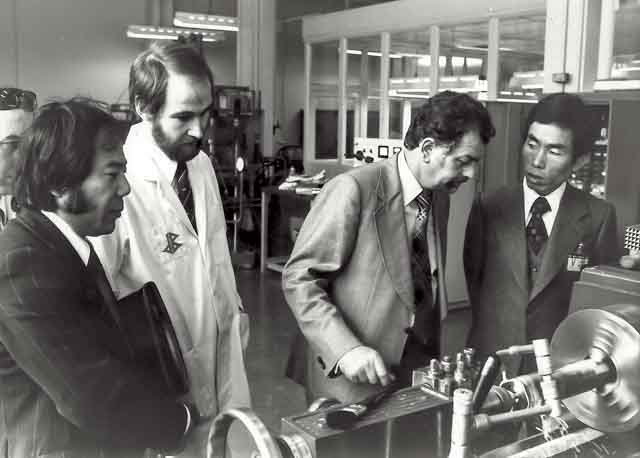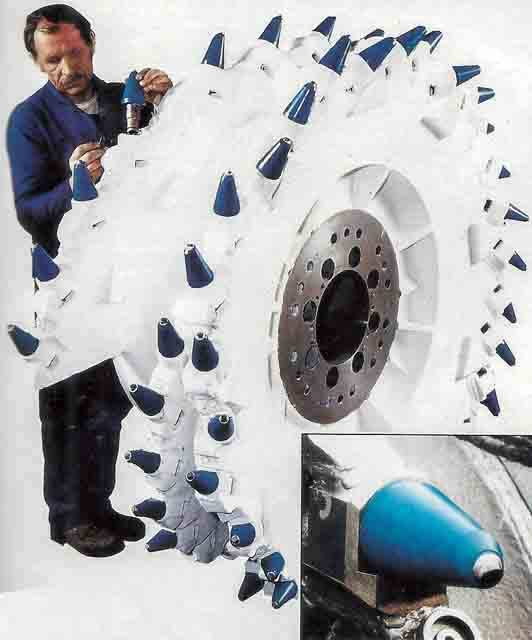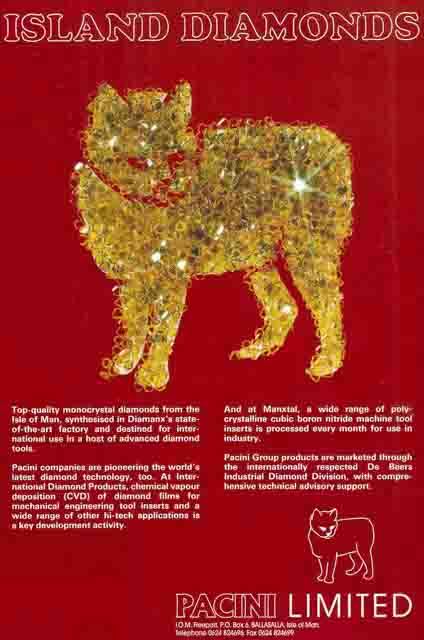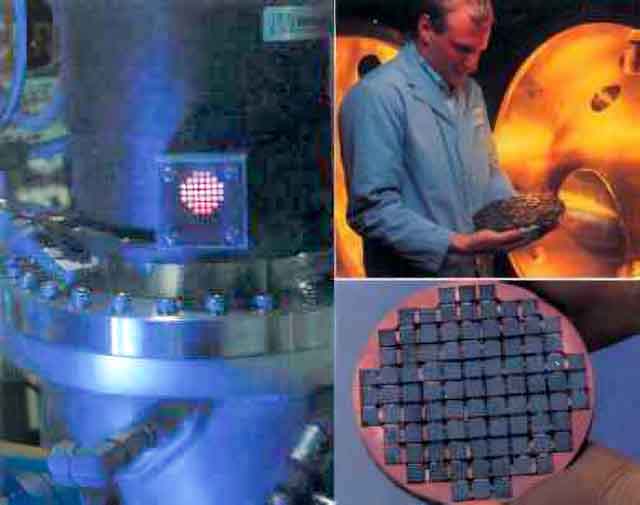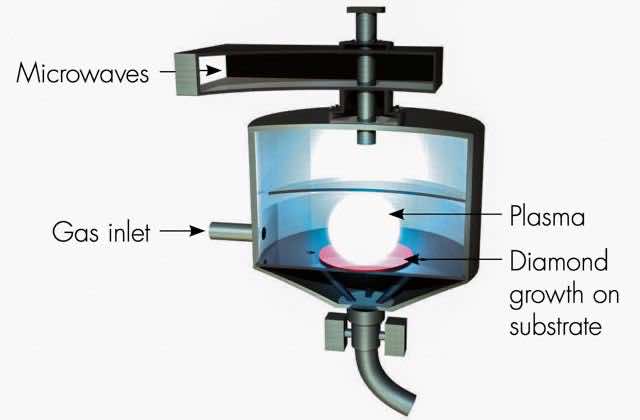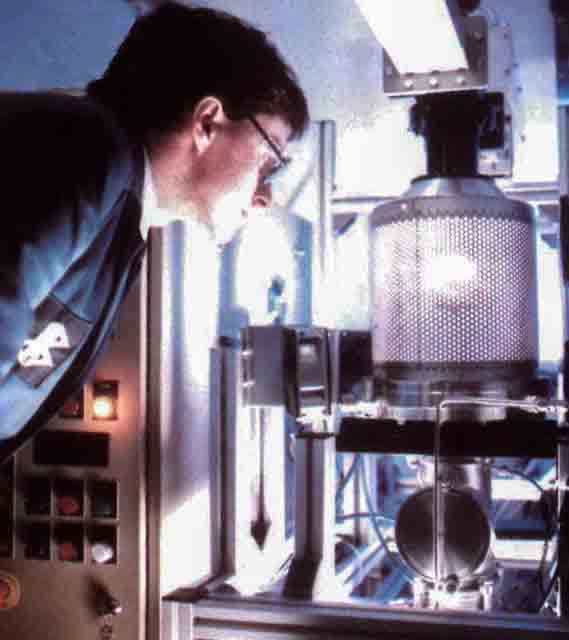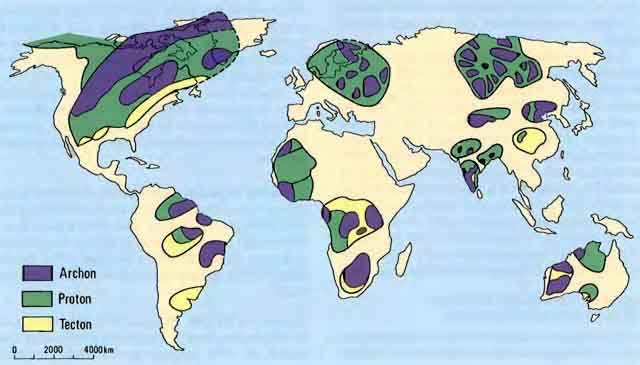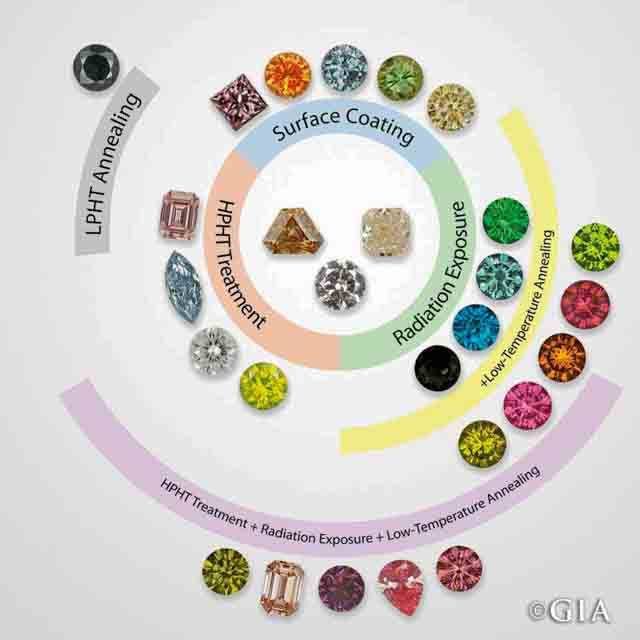We use cookies to enhance your browsing experience. If you are OK with this please click Opt-In. You can always remove your permission by clicking Opt-Out on the Privacy Policy page.
History of Diamond and CBN
This timeline has 350 images, so a fast internet connection is recommended.
Diamonds are highly prized for their qualities but also for their rarity. The necessary conditions to form diamond at great depths in the Earth’s mantle are only met in a few places. The geographic distribution of diamonds is very uneven, with notable concentrations in Africa, Brazil, Canada, India and Siberia. All of these places are characterised by ancient continental crust between 2.5 and 3.5 billion years old.
This crust is underlain by deep solid 'roots' made of mantle which has become highly chemically depleted through intense melting over time. It’s here in this depleted mantle, which extends as deep as 250 km into the hotter, stirring mantle below it, that diamonds have the best opportunity to form.
4000BC
Legend has it that the first diamonds were found in India 6,000 years ago. India was the source of nearly all the world's known diamonds until the discovery of diamonds in Brazil in 1726 and South Africa in 1866. India has not been a major natural diamond producing country since the 1900s.
The most intensive mining was in a 60 km zone along the Krishna River. This area was the source of many legendary gems, including the Koh-i-Noor and Hope Diamond.
Image shows the washing of soil to recover diamonds.
4000BC-2500BC
Chinese artisans used diamonds to grind and polish ceremonial stone burial axes.
Scientists found diamond traces in China, together with tools dating from 4000-2500BC.
The use of diamonds by Liangzhu craftsmen is plausible as diamond sources exist within 240 km of where burial axes were found. The craftsmen may have extracted diamonds from gravel by using a technique where wet diamond-bearing gravels are run over a fatty animal hide - only diamonds stick to the fat.
Photographs show an early corundum axe 4000-3500BC (left) and a diamond polished corundum axe 2500BC (right).
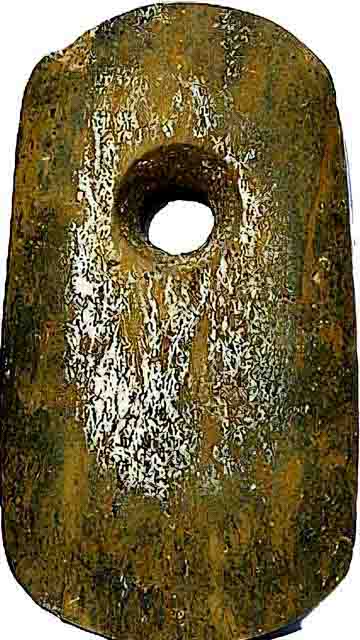
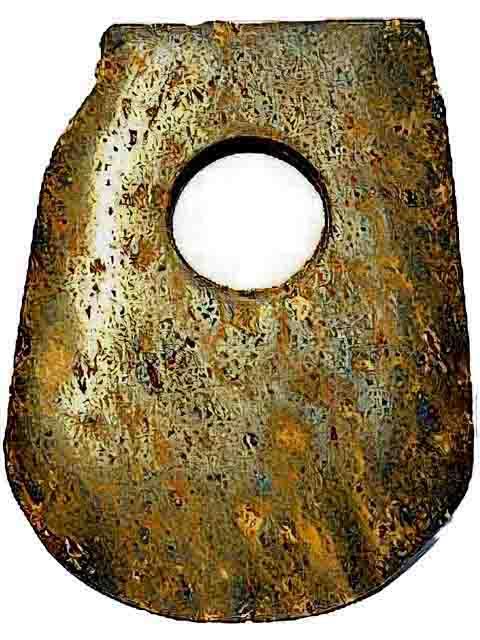
600BC
In India, stone beads and many other varieties of ornaments were important as expressions of social status and cultural identity.
The use of tiny diamond for drilling beads dates to around 600BC. Two forms of diamond drill were used. Single diamond drills were made by crimping a rounded diamond chip at the tip of the drill. The metal used for the drills may have been bronze or iron. The double diamond drill was made by crimping two rounded diamond chips at each edge of the widened metal tip of the drill.
With diamond drills it was possible to drill holes more than 200 times faster and make slimmer, larger beads, due to the smaller bore size.
Photographs show a bow drill plus double and single diamond drills.

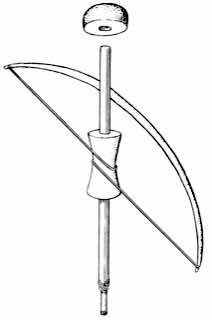

332BC-30BC
During the late Ptolemaic period, diamond (Mohs hardness 10) and corundum (Mohs hardness 9) were almost certainly imported into Egypt from India and used as abrasives, especially for the harder gemstones like emerald (Mohs hardness 7.5-8) and sapphire (blue corundum). Emery from Mediterranean or Eastern sources may also have been employed as an abrasive at this time.
Note: the progression from corundum to diamond (9 to 10 on the Mohs scale), reflects a hardness increase of more than 300%.
Main photograph shows a bead-manufacturing scene (Limestone wall-painting: in two registers, depicting the activities of jewelry-makers and precious-metal workers. Beads are bored with quadruple and triple bow-drills. Elsewhere they are being polished and strung; completed strings are dotted about. At one edge, a craftsman holds a piece of metalwork in a brazier while he fans the flames with a blowpipe. Above are completed precious-metal objects.)
Minor photographs show finished beads and necklaces.


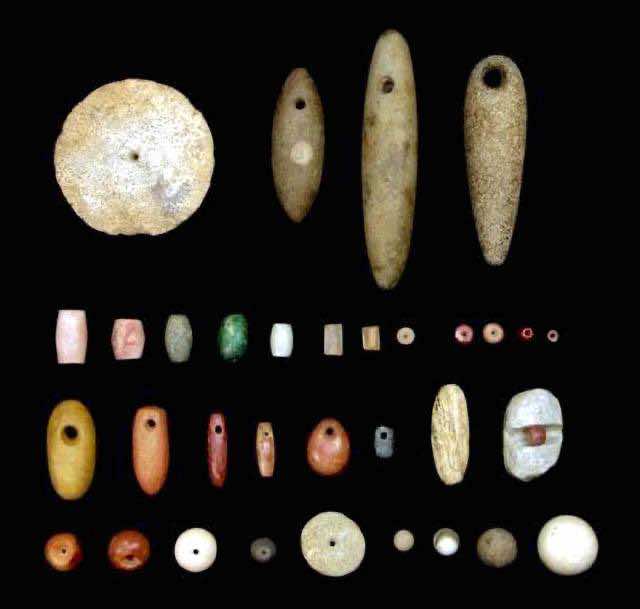
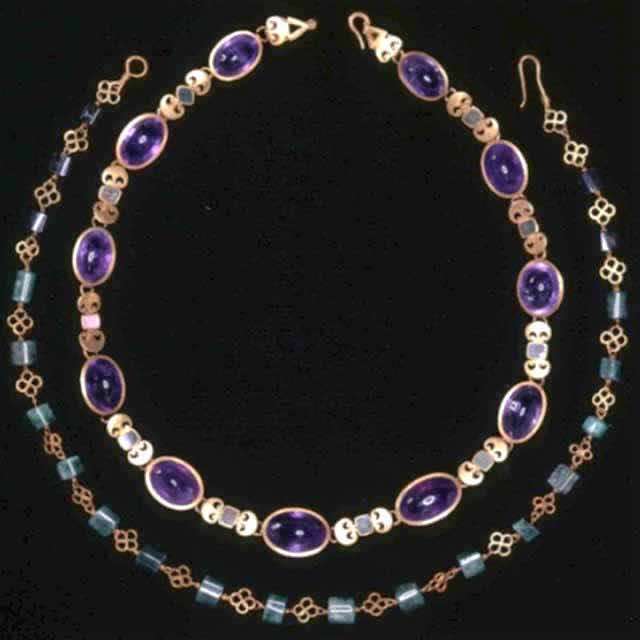
200BC-150BC
India had established an export trade with China for diamond tipped tools for engraving and cutting jade.
There is no mention of using the points of broken diamond which infers that they were using small whole stones.
Image shows the bow drilling method used to produce holes in jade.

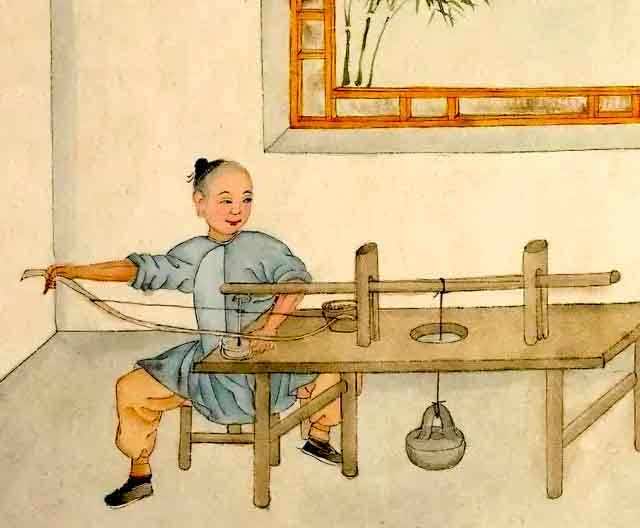
30BC-395
The Indian Ocean Trade route was one of the Roman Empire’s most lucrative long-distance trade routes. Indian Ocean trade ships carried precious goods, such as spices, gems, diamonds, pearls, ivory and silk.
Photograph shows a map as described in the 'Periplus of the Erythraean Sea'.
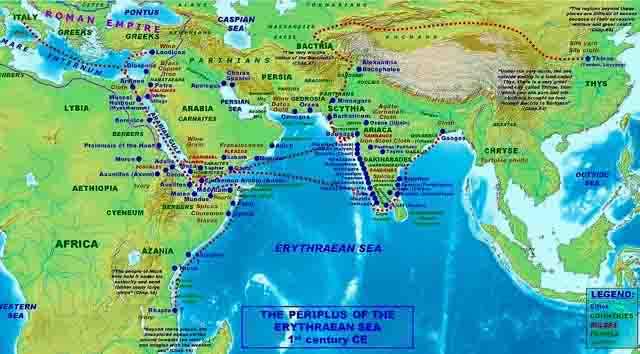
100
The presence of diamonds in Rome by about 100 is established by the writings of Pliny the Elder (23-79), by sapphire engravings and by talismanic diamond rings. Pliny the Elder, who died during the eruption of Mount Vesuvius, wrote the encyclopedia 'Historia Naturalis', a fundamental source of classical information.
He discussed diamond fragments: 'These particles are held in great request by engravers, who enclose them in iron to cut the very hardest substances known.'
Roman engraved sapphires, cameos and intaglios from the first century are undoubtedly the product of diamond engraving points.
Photograph shows a replica iron tool containing a diamond tip.

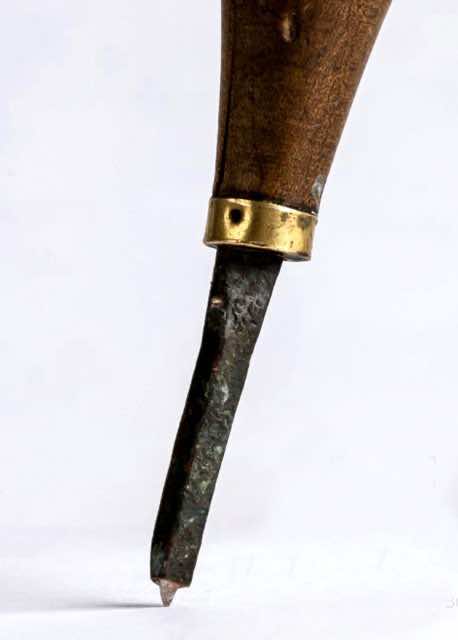
250-350
Romans believed that diamonds were tears of the Gods and splinters from falling stars. The only source of diamonds was India and only a small number reached the Roman world.
Diamonds were used in their raw state, as octahedral gems, because techniques for cutting diamond had not been invented.
With the decline of the Roman Empire came a decline in the mythology that surrounded diamonds and the stones did not become popular again until the Renaissance (1330).
Photograph shows a Roman octahedral diamond ring.
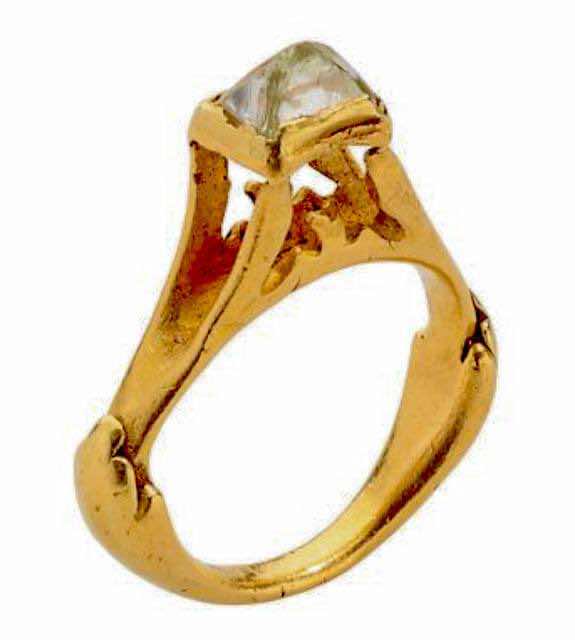
1074
The first example of diamonds set within metal to craft jewelry was in a Hungarian Queen’s crown, made in 1074. The diamonds used in the creation of the crown were rough, uncut diamonds, as there was then no means of cutting or polishing diamonds.
Diamond, at this time, denoted dominion, influence, superiority, power and status.

1300s
The Koh-i-Noor (Persian for 'Mountain of Light') diamond is one of the largest cut diamonds in the world. It was discovered in the 1300s in the Kollur Mine. It passed through various owners throughout South and West Asia and has adorned the Peacock Throne of Shah Jahan (the 5th Mughal emperor) and was worn by child emperor Duleep Singh in 1843. In the mid-1800s, the Koh-I-Noor became part of the British Crown Jewels collection. The diamond, originally 191 carats ('it resembled a large hill or perhaps a huge iceberg rising steeply to a high, domed peak'), was cut down to a 105 carat oval in 1902 when Queen Victoria wore it as a brooch.
Photographs show the Koh-i-Noor diamond before recutting, Queen Victoria wearing the Koh-i-Noor brooch and the Koh-i-Noor diamond set in a crown made in 1937.
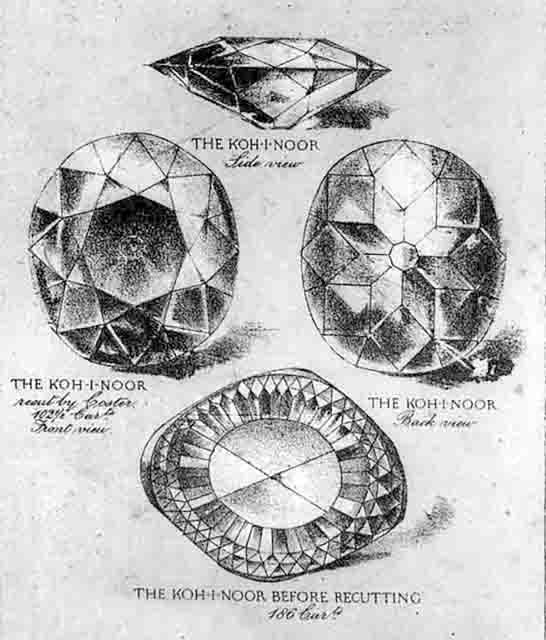
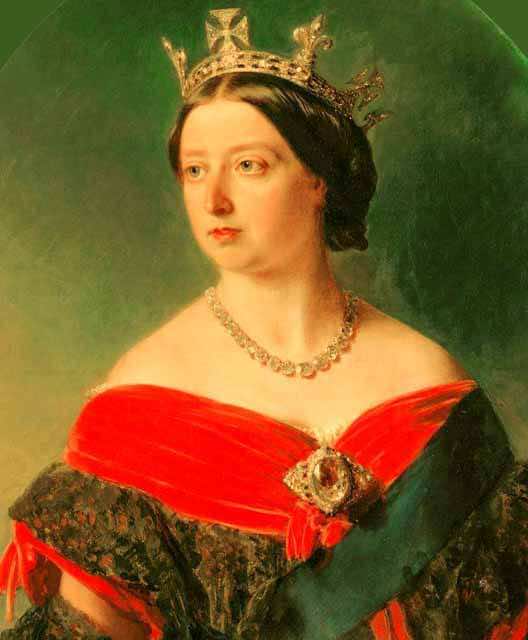
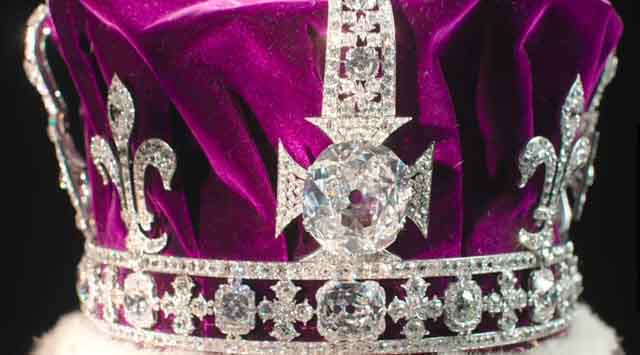
1388
The gold and diamond wedding ring that Sir Thomas Brook gave to his wife, Lady Joan.
A diamond and ruby marriage ring from the late 1400s, found near Launde Abbey in Leicestershire, England.
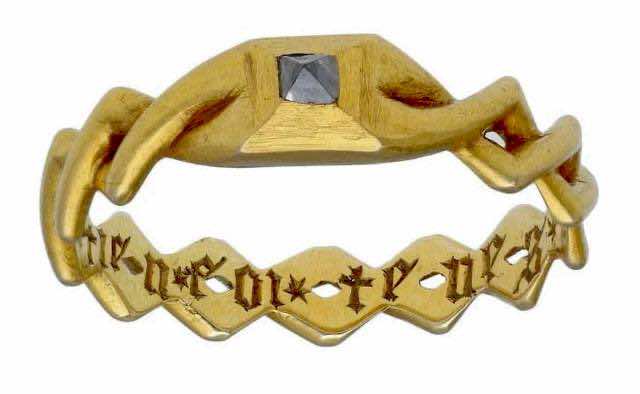
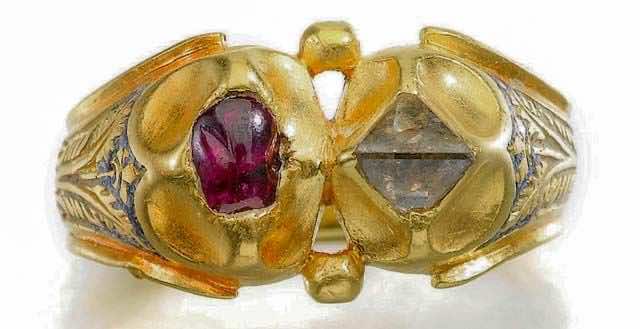
1400s
Perfectly shaped diamond crystals did not reach the West in any quantities, these diamonds were preserved for the local market and Islamic middle-men. This is why Europeans started to process diamonds in Venice, the trade capital, in 1330.
Although during the Renaissance it was well known that the polishability of diamond varies by orders of magnitude with orientation. Using the analogy of wood cutting, diamond polishers spoke in terms of a 'grain' in the crystals to indicate the presence of 'hard' and 'soft' polishing directions. It was also known that diamond can be cleaved only along four unique planes in the crystal.
At first, diamond processing was superficial polishing of the existing rough. In the 15th century, the introduction of continuous rotary motion enabled the lapping of facets on diamonds. This triggered creativity and a wider variety of shapes.
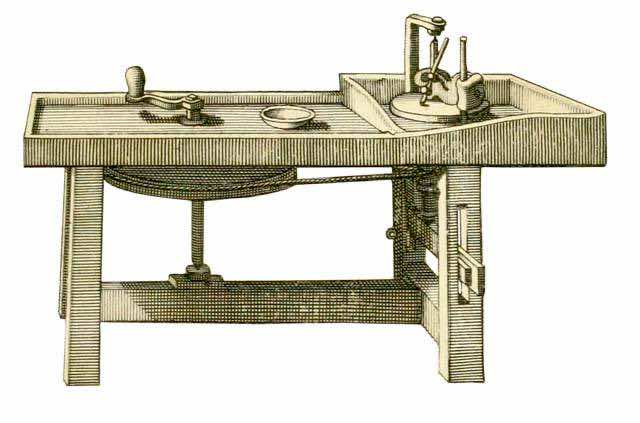
1477
The first time diamonds appeared on an engagement ring was in 1477 when Archduke Maximilian of Austria proposed to Mary of Burgundy, who wore the ring on her left hand. The ring was set with thin, flat diamonds in the shape of an 'M'.

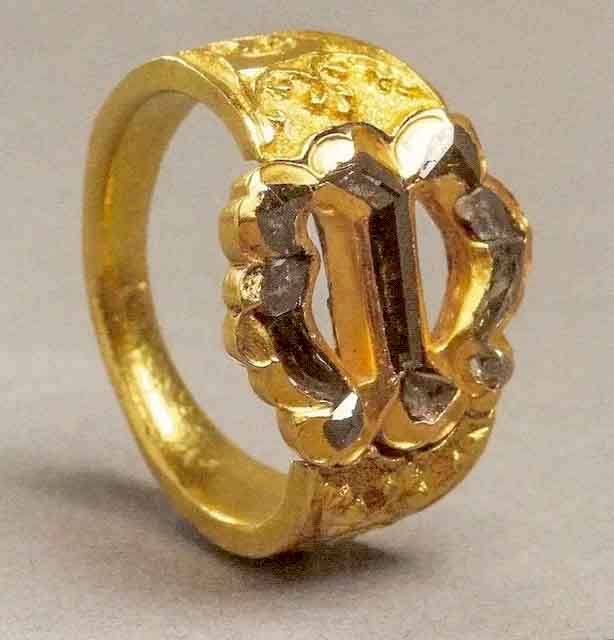
1526-1857
Jewel-encrusted spectacles, which feature lenses made from diamond and emerald, are believed to have originally belonged to royals in the Mughal Empire (1526-1857), which once ruled over the Indian subcontinent.
Halqeh e Nur or 'Halo of Light' spectacles, are believed to have been cleaved from a single 200 carat diamond found in Golconda, India.
The green lenses spectacles dubbed the 'Gate of Paradise', are believed to have been cut from a Colombian Emerald weighing over 300 carats.
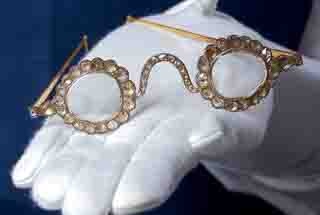
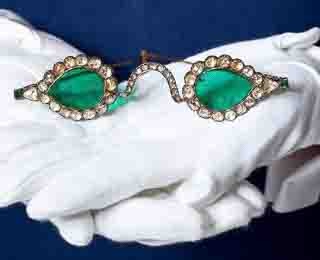
1642
The Darya-i-Nur (182 carats) is believed to have once formed part of a larger gem called the Great Table diamond, believed to come from the alluvial diamond fields of India. The Great Table diamond (from the throne of the Mughal emperor Shah Jahan) is thought to have been cleaved in two, with one section becoming the Darya-i-Nur (sea of light) and the other the 60 carat Nur-ul-Ain (light of the eye).
Both of these pieces were brought into the Iranian Imperial collection after the Persian king Nader Shah Afshar looted Delhi in 1739. They are currently part of the Iranian Crown Jewels.
Photographs show Tavenier's drawing of the Great Table (drawn in 1642), the Darya-i-Nur and the Nur-ul-Ain mounted in a tiara.
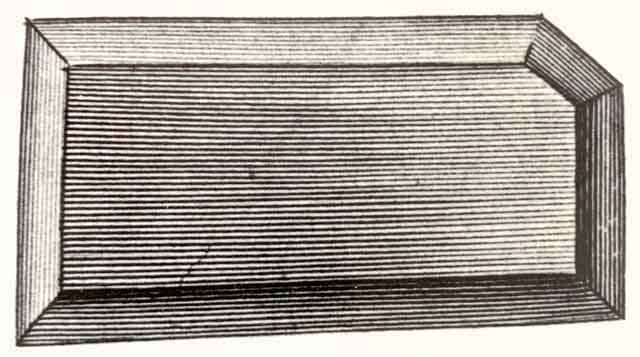
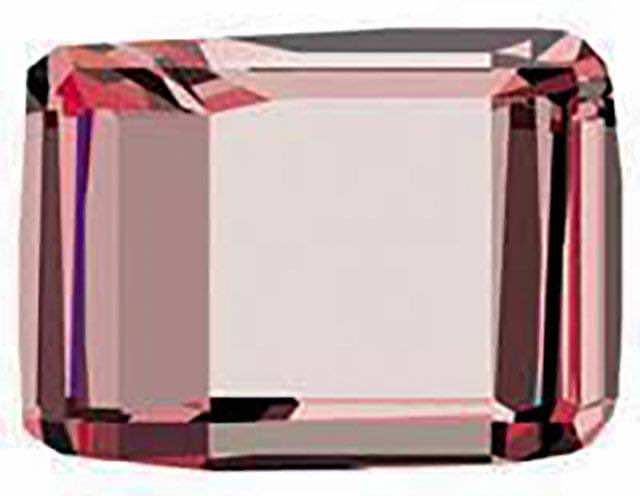
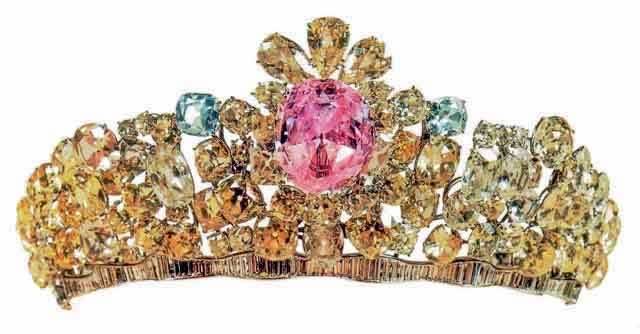
1669
Louis XIV of France bought a blue diamond from Baptiste Tavernier after his 6th and final voyage to the Orient. It is blue because of trace amounts of boron within its crystal structure.
Sketch shows top to bottom:
Tavernier Blue (typical Indian gem cut, 112 carats),
Brunswick Blue (cleaved section of the Tavernier Blue),
Hope Blue (French Blue, 45 carats).
Photograph shows the Hope Blue.
1722
The Dresden Green Diamond is a 41 carat natural green diamond from the mines of India. It is an apple-green, Type IIa diamond, with a clarity of VS1 and a modified pear shape - a cut which maximises the colour. The diamond is believed to bring the owner good fortune. The diamond is named after Dresden, the capital city of Saxony in Germany.
It has a historical record dating back to 1722, when a London news-sheet carried an article about it. In 1768, the diamond was incorporated into a hat ornament, surrounded by two large and 411 small diamonds.
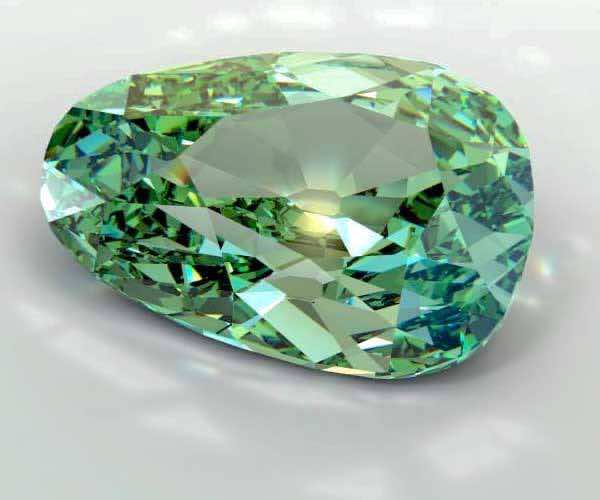
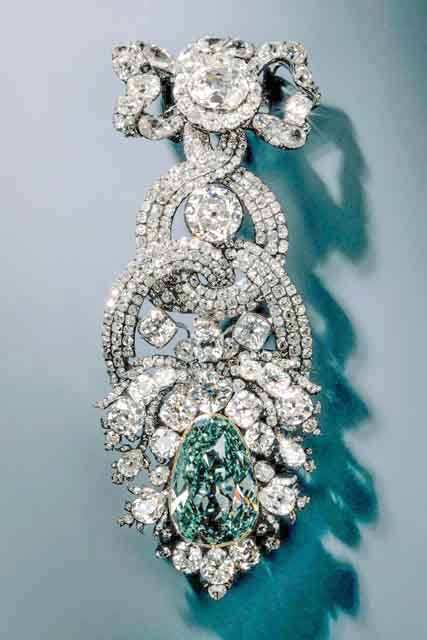
1726
Just when the Indian diamond mines started to become exhausted, diamonds started to be found in Brazil.
Brazil’s significance as a diamond producer spans three centuries, making it the world’s longest continuous commercial source of diamonds. Brazil reached its peak production in the mid 1700s. Most of its diamond supply comes from the multitude of alluvial sources spread across the country.
Photographs show a selection of diamonds recovered from the Abaeté River in Minas Gerais and the Portuguese Badge of the Three Military Orders, made in 1789.
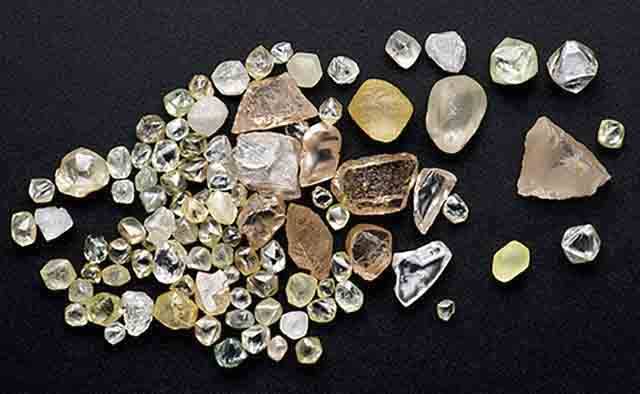
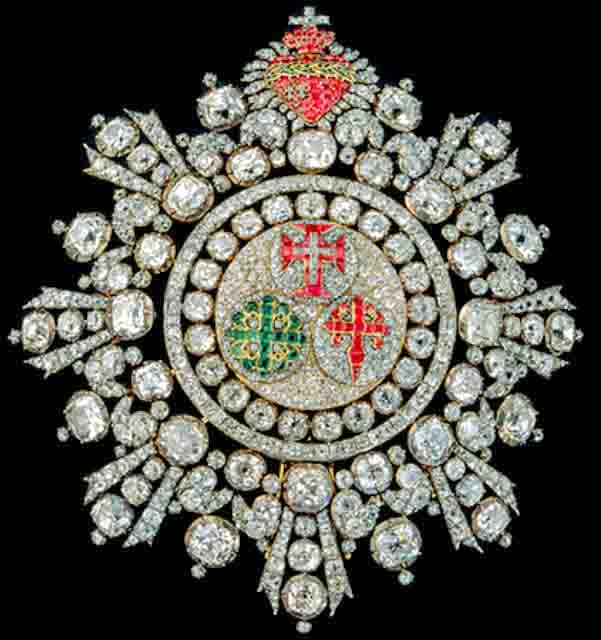
1751
Drilling a hole for gunpowder blasting, description and illustration from Diderot's encyclopaedia.
'To pierce the rock, the operator uses an iron bar with diamonds in triangular veins which cross each other at right angles. The tool is alternately raised and allowed to fall and the operator rotates it in his hands, taking care to throw water into the hole.'
Hardness is one of the qualities that has always made diamonds so valuable.


1772
AntoineLaurent Lavoisier bought a diamond and placed it in a closed glass jar, noticing that after he had used a giant magnifying glass to focus the sun’s rays on the diamond, the diamond burned and disappeared. He noted that the overall weight of the jar remained unchanged, even though the diamond had entirely disappeared. This observation led him to believe that his law of mass conservation was correct. The gas that was produced by the burning of either the diamond or the charcoal by the giant lens is now called carbon dioxide. Lavoisier realised that diamond and charcoal are different forms of the same element.
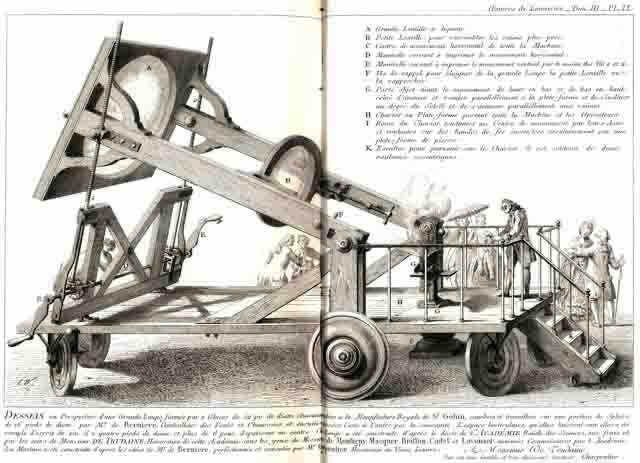
1777
Jesse Ramsden used a diamond tipped lathe tool to turn a precision screw for a circular dividing engine, scribed dividing marks were also cut with a diamond.
Ramsden's second dividing engine allowed sextants to be made more accurate, smaller, lighter and of more rigid materials.
Sketch shows Jesse Ramsden and his circular dividing engine.

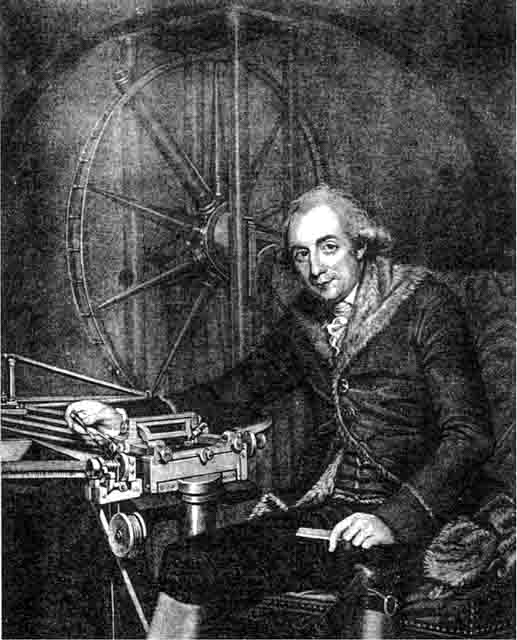
1819
William Brockedon invented an improved method of drawing gold and silver wire which involved drawing the rod through a hole defined by diamond or other gemstones in order to maintain a precise diameter. He patented this invention in 1819, patent number 4395, and visited Paris in connection with it (the first diamond wire-drawing die was successfully made and utilised by Milan and Balloffet in France, in 1860).
Probably the first illustration of wire-drawing, through a draw-plate, is a picture from a manuscript of 1389, which shows a monk sitting on a swing, pushing backwards against an anvil, pulling the wire with tongs fastened to his belt.
Photographs show wire drawing in 1389 and William Brockedon's self portrait.

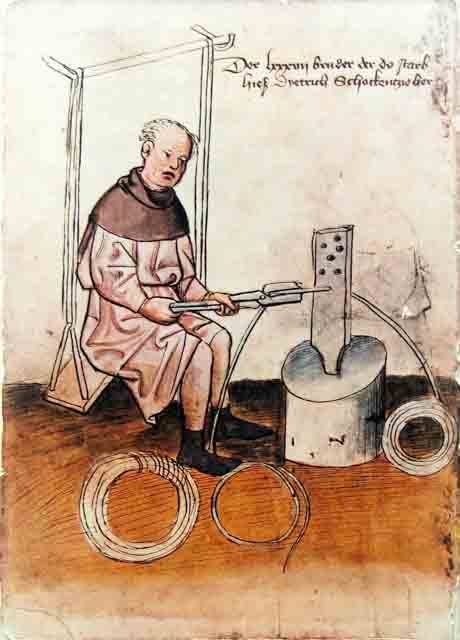

1822
Barton's buttons were molded from diamond cut gratings and gave a play of diffraction colours.
Some buttons and the machine for cutting the gratings survive in the British Science Museum.
The photograph shows 2 gold coloured metal buttons with geometric diffraction grating patterns on the front. They are housed within a small black and gold metal tin. On each button back: 'BARTON's PATENT IRIS ORNAMENT'.

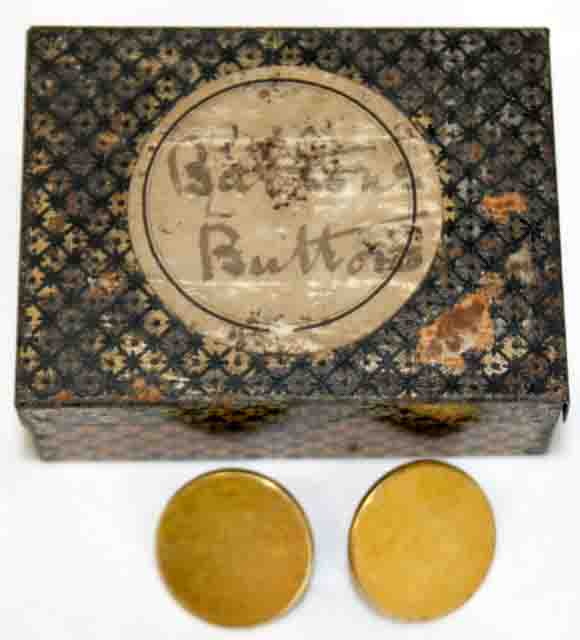
1824
Pritchard's breakthrough came when he realised that by using diamond wheels, he could grind and polish microscope lenses to a much higher level of precision than was previously possible. He developed a method of shaping diamond wheels into various forms, such as spheres, cylinders, and cones, which could be used to create lenses with specific curvatures and shapes.
Pritchard's shaped diamond wheels revolutionised the field of optics. They allowed for the production of high-quality lenses that were capable of resolving much finer details than before. This led to significant advances in fields such as biology, medicine, and materials science, as scientists were able to study objects and structures at the microscopic level with greater precision than ever before.

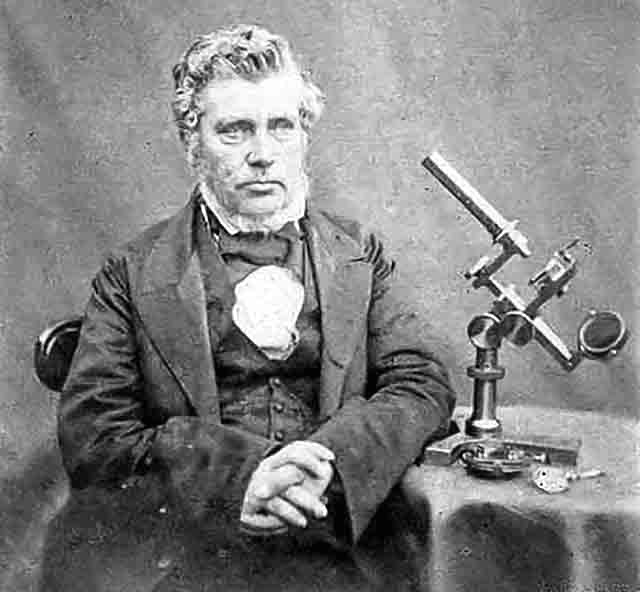
1841
Discovered in 1841 in Brazil, carbonado was named by Portuguese diamond prospectors for its resemblance to charcoal. Carbonado was found later in the Central African Republic. These two localities previously shared a common geological setting for more than a billion years. At the height of alluvial mining in Brazil (1850-1870), some 70,000 carats were produced by an estimated 30,000 miners. Carbonados have never been found in direct association with kimberlite pipes.
Because granules of carbonado are composed of a large number of interlocking crystals of diamond (polycrystalline diamond), cracks stop at crystal boundaries instead of propagating through the granule. Carbonado was used for drilling during the construction of the Suez and Panama canals.
Four of the five largest diamonds reported from Brazil, ranging in weight from 726 to 3,167 carats are carbonado. Found by miner Sergio Borges de Carvalhoin, in 1895, Sergio, is heavier than largest gem-quality rough diamond ever found (the 3,106 carat Cullinan).
Photographs show a map where carbonado is found, carbonado and Sergio (3,167 carats).

1841
Diamond tools also have a history in the dressing of millstones and grinding stones. This history predates the South African mines and Brazilian carbonado was used. The oldest manufacturer of such tools in North America was reportedly S. Dessau and Co. of New York City, founded in 1841. An advertisement from this company in 1880 offers 'Carbon (Black Diamond or carbonado) for millstone dressing, furrowing, etc.' as well as diamond hand tools for turning and truing emery wheels and grindstones, and diamond lathe tools.
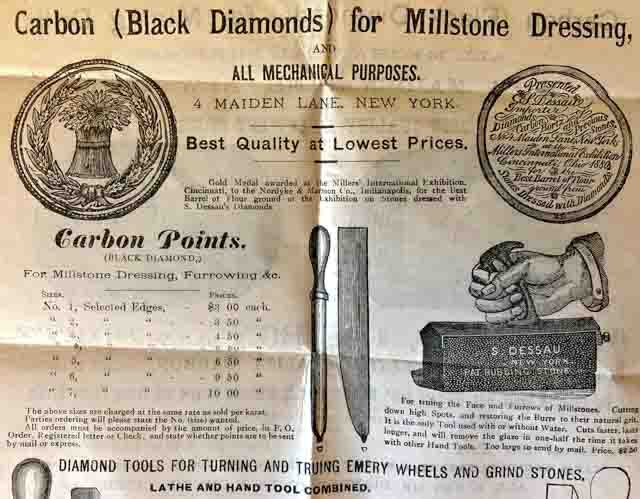
1842
Boron Nitride was first invented by English chemist W.H. Balmain, from the reaction of potassium cyanide (KCN) and molten boric acid (H3BO3). Hexagonal Boron Nitride (HBN) has a structural resemblance to that of graphite and in its single-layer form it is called 'white graphite'. Because the compound had a tendency to be unstable, experiments using boron nitride remained in the laboratory for more than 100 years.
From 1957 Cubic Boron Nitride (CBN) was used in the fabrication of cutting and abrasive tools.
The diagram shows the crystal structure of HBN, where boron atoms are blue and nitrogen atoms brown.
1863
Swiss engineer, George-Auguste Leschot and his son, Rodoplhe mounted 4 carbonados in the crown of a drill which was then rotated at 250-300 rpm. In an early experiment carried out in Rheinfelden, Switzerland, the Leschot drill took 60 days to perforate 475 m, a task which would have taken between two and three years.
The number and type of diamonds used on the cutting edge were varied. Leschot’s drawing suggests 6, possibly of Brazilian origin, but up to 15 may have been tried, some later ones being derived from South Africa.
The diamond-tipped core drill was used first for drilling blast holes for transalpine tunnelling at Mount Cenis (almost 13 km between portals) and later the St. Gothard on the French-Italian border.
Diagram shows the original Leschot rock drill patent.

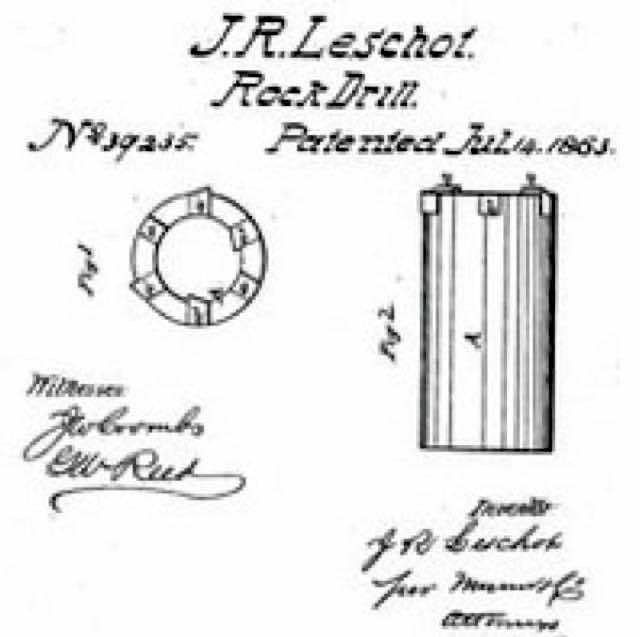
1866
The story of South Africa diamond begins in 1866 and when 15 year old Erasmus Jacobs found a transparent rock (21 carat diamond) on his father’s Orange River bank farm. Over the next few years, South Africa yielded more diamonds than India had in over 2,000 years.
Until the 18th century, India was the only source of diamonds. Deposits were found in Brazil in 1725 but the supply was not enough to meet world demand.
Photographs show the Eureka diamond and an older Erasmus Jacobs (circa 1907).
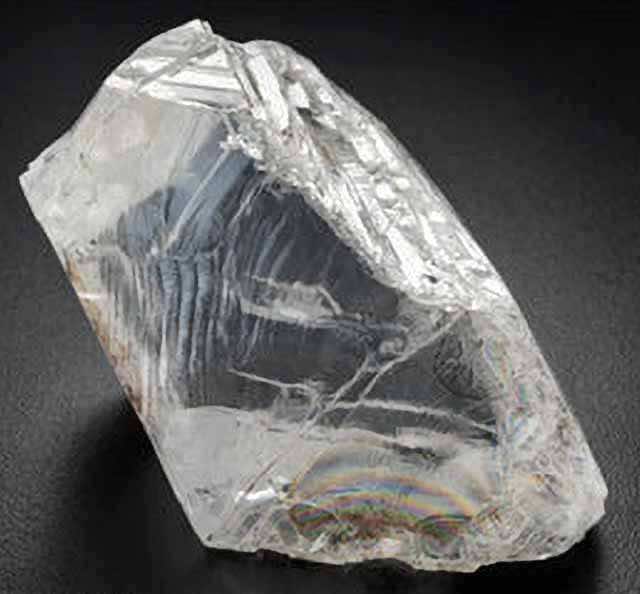
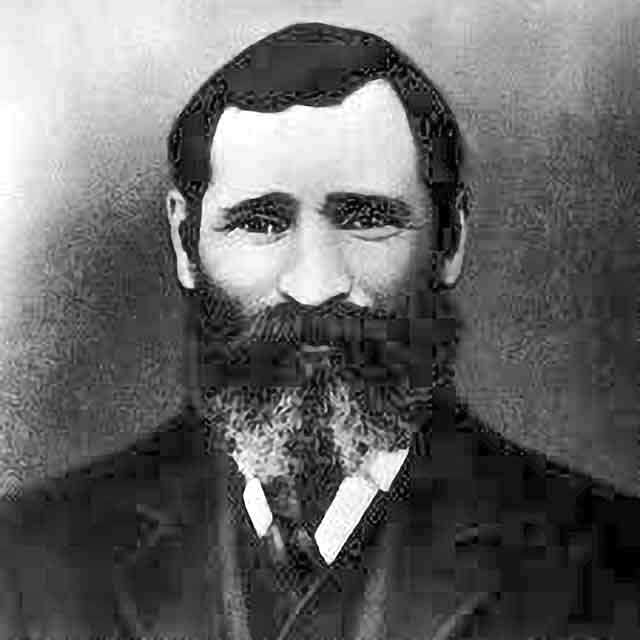
1868
Cecil John Rhodes and Charles Dunell Rudd met at the Kimberley diggings and arrived at the New Rush settlement, renamed Kimberley, in 1873. They began by supplying drinking water and ice to the community and contracting to pump water from the De Beers and Dutoitspan mines; the two bought a claim apiece, and from here Rhodes was to build his business empire.
Photographs show Cecil John Rhodes seated, Charles Dunell Rudd and their original office.
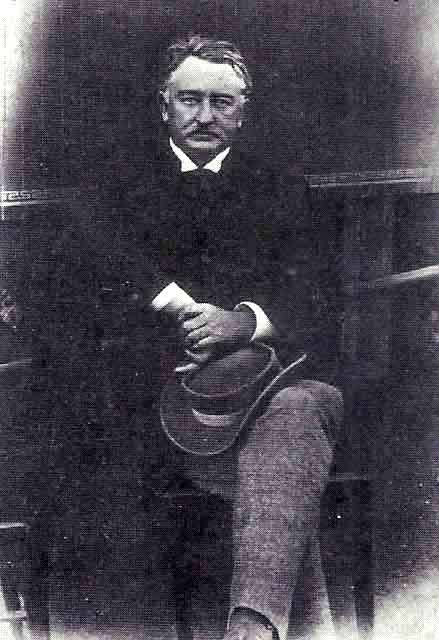
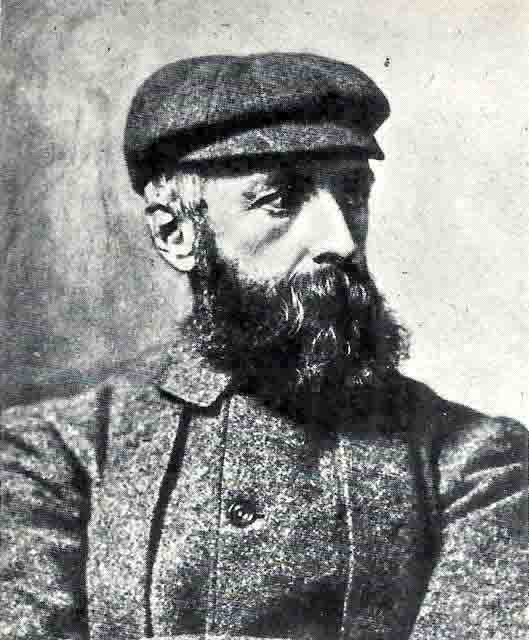
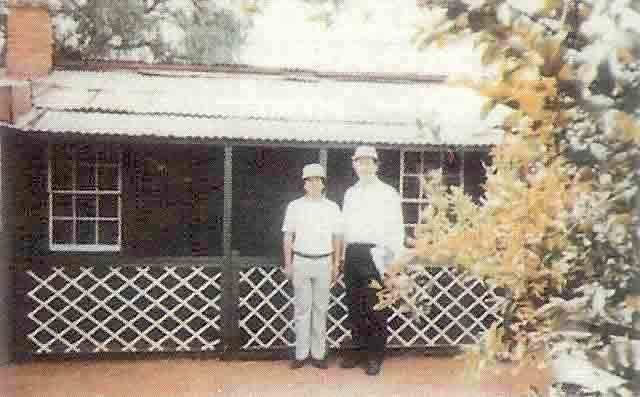
1869
The Star of South Africa, also known as the Dudley Diamond, is a 83 carat white diamond found by a shepherd in 1869 on the banks of the Orange River. The finding of this large diamond led to diamond prospectors coming to the area, culminating in the July 1871 rush to the nearby new diamond field at Colesberg Koppje, soon known as New Rush, and later to be known as Kimberley.
The shepherd sold the stone for the hefty price of 500 sheep, 10 oxen and a horse to Schalk van Niekerk, a neighbouring farmer locally famous for having acquired a 21 carat diamond in 1866 after it was found by Erasmus Jacobs.
The photograph shows the cut diamond at 48 carats.
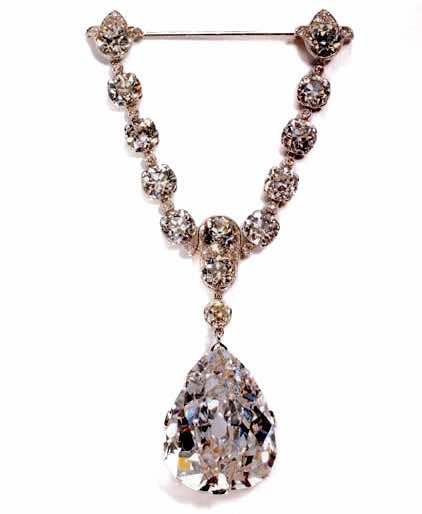
1871
Opended in 1871, the Kimberley mine, South Africa, was the source of the Tiffany Yellow diamond. Discovered in 1877 the Tiffany Yellow is one of the largest yellow diamonds known at 287 carats. It was cut into a cushion shape of 128 carats, with 82 facets, to maximise its brilliance.
Photographs show the Kimberley mine in 1872 and the Tiffany Yellow diamond.
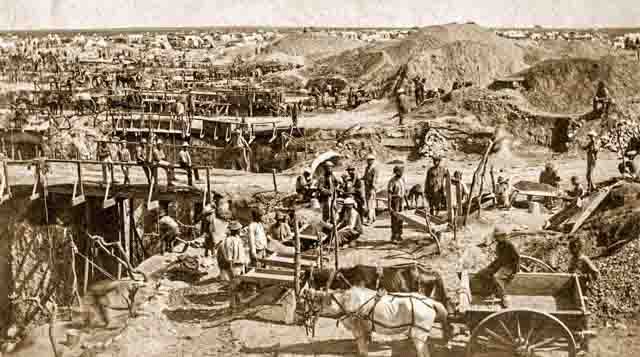
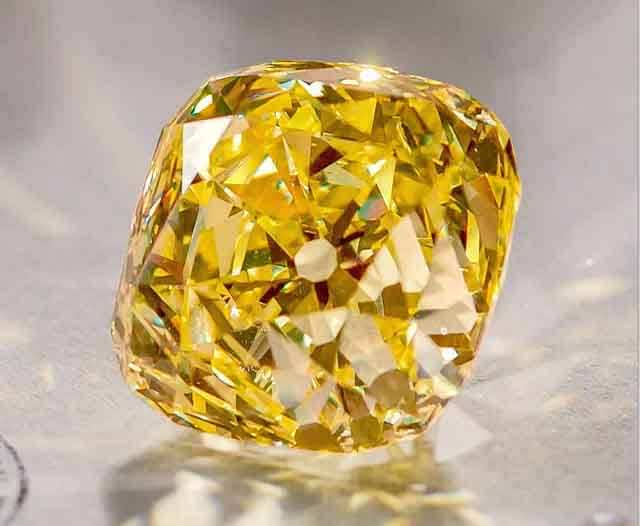
1875
The circular saw, given its unlimited capacity in sawing lumber, was considered by most investors as the one to which the diamond could best be applied for sawing stone.
Richard Branch’s patent, dated August 31 1875, describes a way to securely hold diamonds in holders (Fig. 2 is top left), which can be replaced by the saw operator.
The 66 inch saw contains 84 diamonds, and the 20 inch saw 60 diamonds.
Photograph shows Branch’s diamond stone-sawing machine.

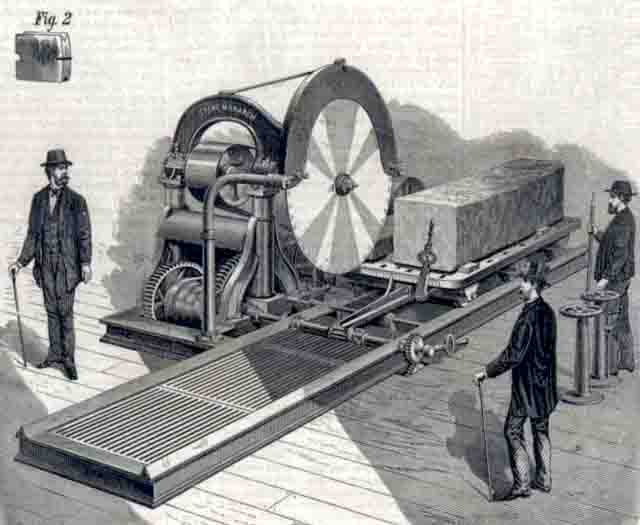
1880s
In 1880, De Beers Mining Company Ltd. was founded by Cecil John Rhodes and Charles Dunell Rudd, with other partners. Barney Barnato, Rhodes’s main rival in acquiring dominant control of South African diamond production, purchased claims in the centre of the Kimberley mine and in 1885 merged with the Kimberley Central Mining Company. Rhodes and Barnato drained each other’s profits by their rivalry through the mid-1880s. Barnato, however, eventually gave way to Rhodes’s vision of a single controlling company and agreed to exchange his shares in the Kimberley Central mine for shares in De Beers.
De Beers Consolidated Mines was established on March 12, 1888, controlling around 90% of world diamond production. The company was registered in Kimberley, and was the merger of the De Beers Mining Company and Kimberley mines under the Kimberley Central Diamond Mining Company.
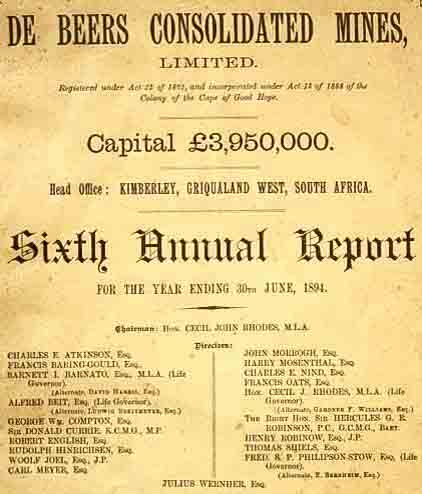
1883
Joseph Gay-Lussac was a French chemist and physicist. In 1883, he developed a method for creating a diamond metal matrix, which was a significant innovation at the time.
Gay-Lussac's method involved using a combination of diamond powder and a metal binder, such as copper or silver, to create a composite material that was both hard and ductile. The diamond powder was mixed with the metal binder and then pressed into a mold to create a solid shape. The resulting material was then subjected to high pressure and temperature to create a diamond matrix that was bonded together by the metal binder.
One of the main advantages of Gay-Lussac's diamond metal matrix was its ability to be molded into complex shapes. This made it possible to create intricate parts and components that were both strong and durable. The material was also highly customizsable, as different metals could be used as the binder depending on the specific application

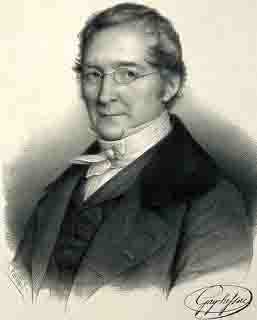
1885
Diamond circular saw blades for cutting stone were developed by Félix Fromholt in France in 1885. A steel disc approximately 2 m in diameter, with 200 diamond teeth, rotated by steam power at 300 rpm, feed rate in hard stone at 300 mm/min. For soft stone, at 12 rpm, every fifth tooth was diamond, the other teeth being steel. The diamonds were manually inlayed into a dovetail groove and then fixed with rivets. These circular saw blades were used at a cost of 1/8th to 1/10th that of hand labour.
In 1898 a large diameter blade was first used in practice in the Euville stone quarries.
Photograph shows the Euville quarry in 1889.

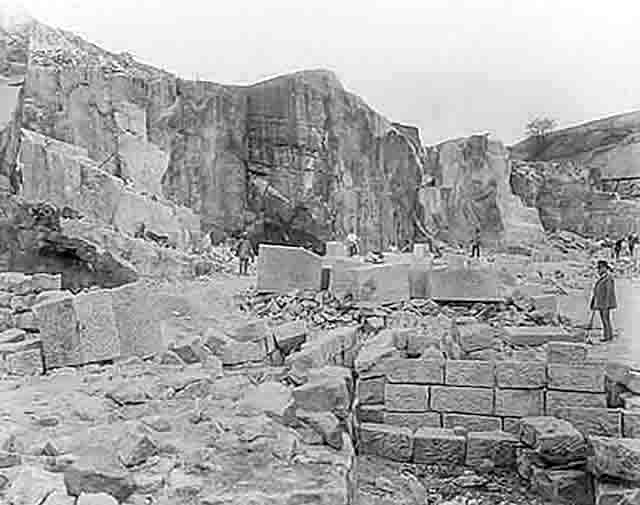
1885
In 1885, seven Worcester entrepreneurs bought the patent for a grinding wheel from Frank Norton, owner of the Water Street Pottery Shop, where the formula for the grinding wheel had been invented. They also bought his company name; the Norton company was born.
The founders purchased land in the city’s Greendale section and built their first grinding wheel plant. Norton has occupied that site ever since. Two of the founders, John Jeppson and Milton Higgins, their sons, and grandsons, managed the company until the 1970s. In 1990, Norton was acquired by Saint-Gobain.

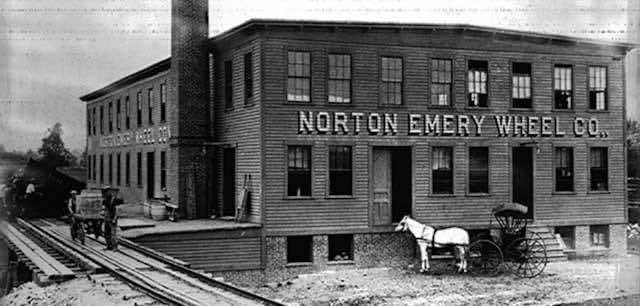
1890
Edmund J Longyear sank his first diamond drill hole on the Minnesota Mesabi Range.
In 1903 Edmund J. Longyear and John E. Hodge formed Longyear & Hodge, the manufacturing partnership that would eventually evolve into Boart Longyear. The company's early drills were steam powered.


1894
The science fiction writer H.G. Wells described the concept of synthetic diamonds in a short story titled 'The Diamond Maker'.
In the story, a businessman hears an account from a man who has devoted years attempting to make synthetic diamonds, only to end up as a desperate outcast.
Wells's story appeared a few years after the claims of James Ballantyne Hannay in 1879 and Henri Moissan in 1893, that they had made diamonds.
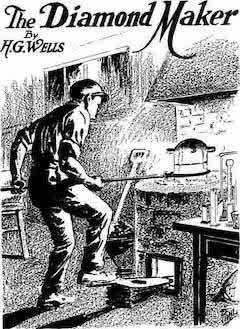
1897
Willman and Schroeder of the University of Berlin, Germany, manufactured the first diamond dental bur by hammering diamond dust into a small piece of copper.
In 1932, a German industrialist named W.H. Drendel developed an easier process for making diamond burs by bonding diamond dust onto the bur body. This allowed for a wider assortment of shapes and cutting abilities. Once the high speed air-turbine handpiece was created in 1957, which could rotate up to 300,000 rpm, diamond burs became commonplace.
Photograph shows a dental chair.
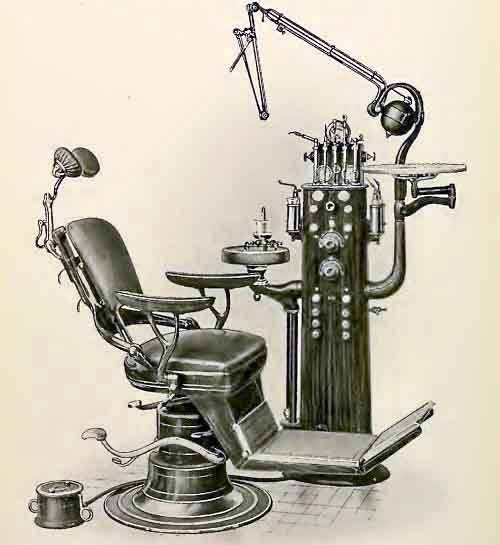
1900
The motorised diamond saw was invented by a Belgian immigrant in the USA, in 1900. It enabled cutters to accurately shape their rough in directions which avoided cleaving. The new technology and influx of rough from South Africa caused the glory days of the cutting houses. Plenty of customers, a steady supply of rough diamonds and mechanised cutting machines changed the ancient craft of diamond cutting. The round brilliant slowly morphed into the ideal cut and became the standard - a new perception of what a diamond should look like emerged from the 17th century when candlelight-lit dinners demanded a more sparkling design than the rose cut.
Photographs show a diamond saw from 1903 and a sawn diamond.
1902
The Premier Mine’s kimberlite pipe was discovered in 1902 and open pit mining commenced in 1903. Since 1946 ore extraction has been by underground mining methods.
The location of the diamond deposits determines the mining method that producers use. Diamonds found deep in the earth are extracted through open-pit and underground methods. Alluvial mining methods are employed to extract diamonds from deposits of sand, gravel and clay. Diamonds located on the seabed are mined through marine mining techniques.
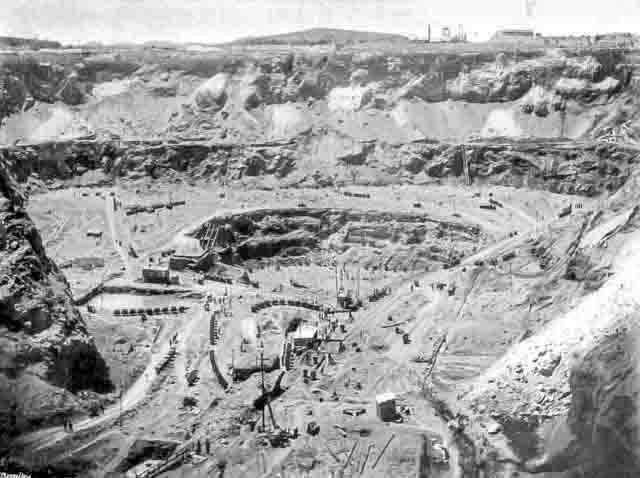
1905
The Cullinan Diamond is the largest gem-quality rough diamond ever found, weighing 3,106 carats and discovered at the Premier No.2 mine in South Africa. Frederick Wells was conducting a standard inspection of the mine when he discovered the diamond. It was named after Thomas Cullinan, the owner of the mine.
The total weight of the gems cut from the Cullinan amounted to 1,056 carats. This represented a loss in weight, in cutting, of 65%. The 9 principal diamonds were named the Cullinan I through Cullinan IX, the largest (Cullinan I, the Great Star of Africa) weighing 530 carats and the second largest (Cullinan II, the Second Star of Africa), 317 carats. The Cullinan III (94 carats) and the Cullinan IV (63 carats) form a brooch.
Photographs show Frederick Wells, the Cullinan diamond, the 9 rough Cullinan cuts, the Cullinan I on a sceptre, the Cullinan II on a crown and, below, the 4 largest Cullinan gems with other famous diamonds (to scale).
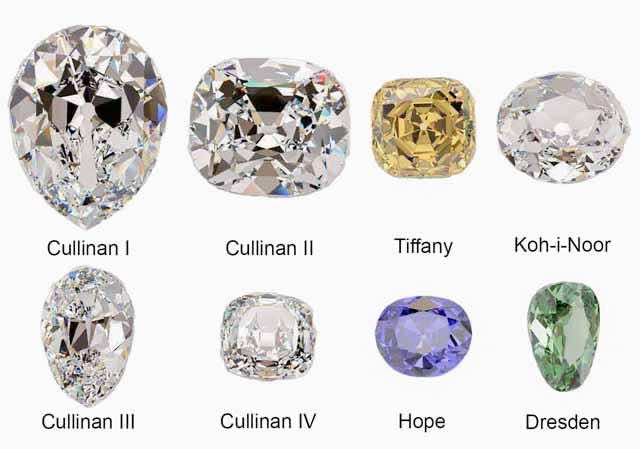
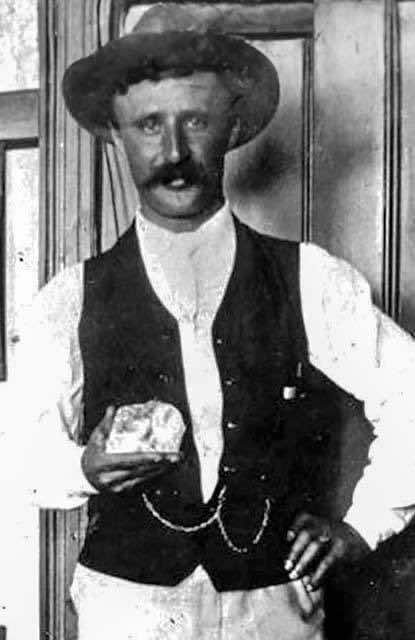
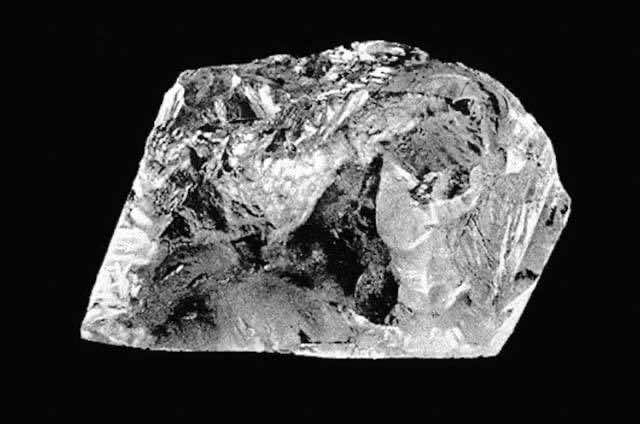
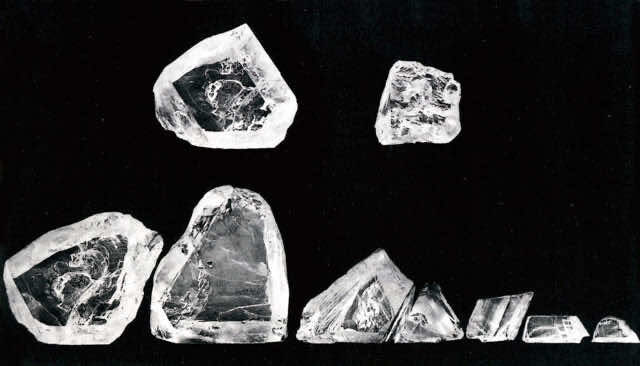
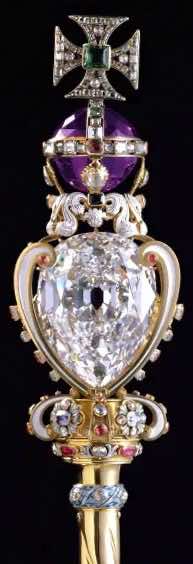
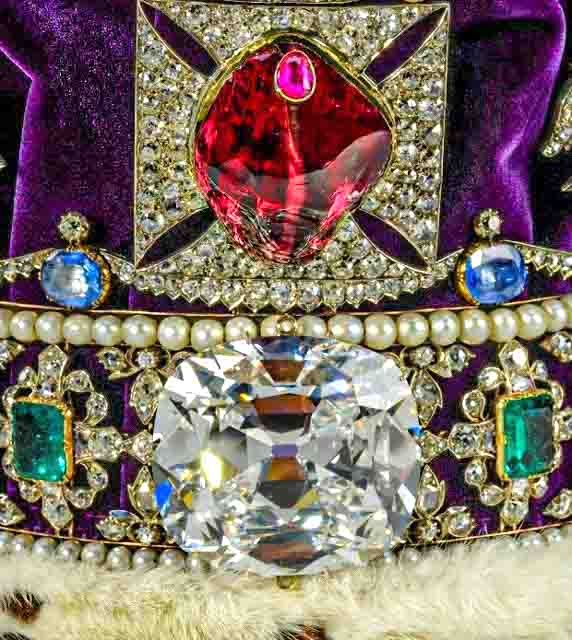
1912
William H Bragg and his son William L Bragg analysed the X-ray patterns of two 'easy' crystals, kitchen salt and diamond. The combination of experimental skill and mathematical description resulted in the first X-ray structure determinations. Diamond appears to be an infinitely large carbon molecule in which each atom is tetrahedrally bonded by four neighbouring atoms.
The Braggs were awarded the Nobel prize in 1915.
The photograph shows William Henry Bragg and the figure shows the stereographic projection of a diamond, where the 3 cube edges meet at the points marked X, Y and Z.
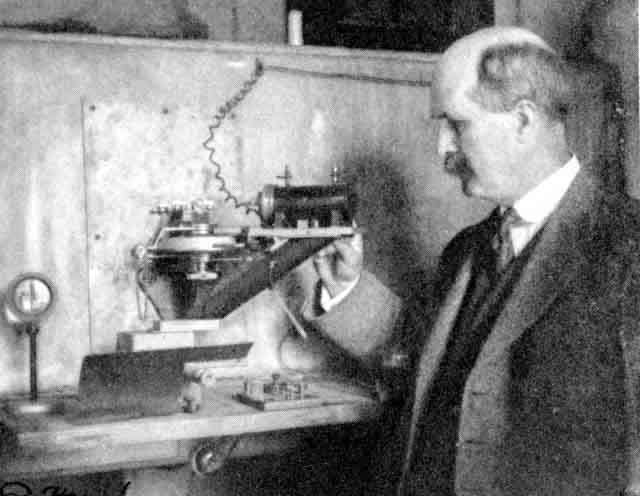
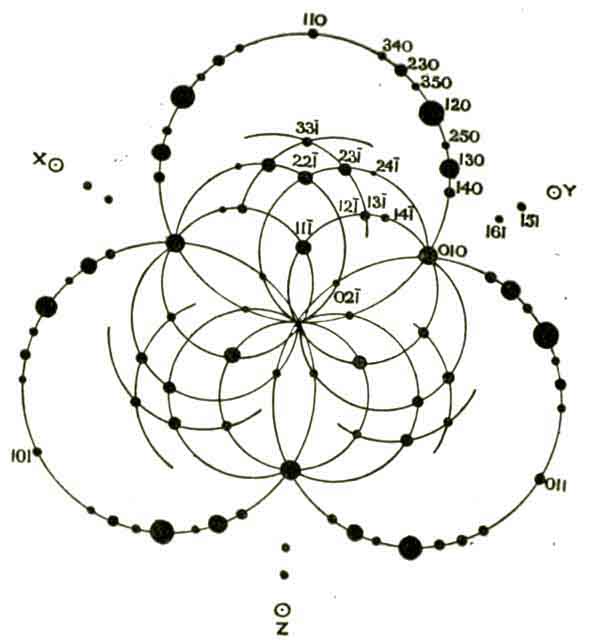
1914
Kimberley mine ceased working after producing 14,504,566 carats.
Kimberlite pipes, the richest source of mined diamonds, are usually shaped like a carrot and can extend as deep as 1 to 2 km.
Photographs show the Big Hole and the visitors' notice board.
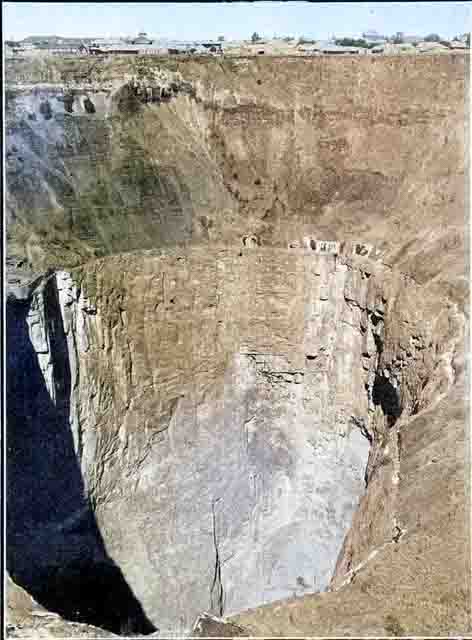
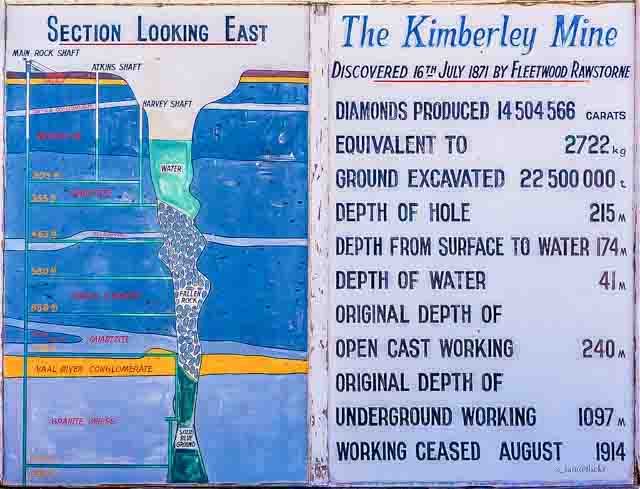
1917-1926
A German immigrant, Ernest Oppenheimer, who had arrived in South Africa in 1902, to work as an agent for the diamond brokers A. Dunkelsbuhler & Co., founded Anglo in 1917.
De Beers had secured a controlling share of its previous rival, the Premier mine, in 1917. Under Francis Oats, chairman of De Beers from 1908 to 1918, it was slow to respond to its encirclement by Ernest Oppenheimer, who In 1919 set about acquiring diamond interests in South West Africa previously belonging to the members of the German Diamond Regie, beating De Beers in securing them. In 1923 Anglo purchased a 16% share in Diamang, the new name given to Pema in 1917. Then, in 1924 it was granted membership of the London Diamond Syndicate. Anglo was asked to retire from the syndicate, having attempted to bid for the entire South African output.
A new Diamond Syndicate created in 1925 by Sir Ernest (knighted in 1921) quickly caused the London Diamond Syndicate’s dissolution by offering better terms, and bought out its assets. Oppenheimer had been steadily building up his shareholding in De Beers and cementing a friendship with De Beers’s largest shareholder, Solly Joel and his firm, Barnato Brothers. In 1926 Oppenheimer was elected to the De Beers board.
Photograph shows Ernest Oppenheimer.
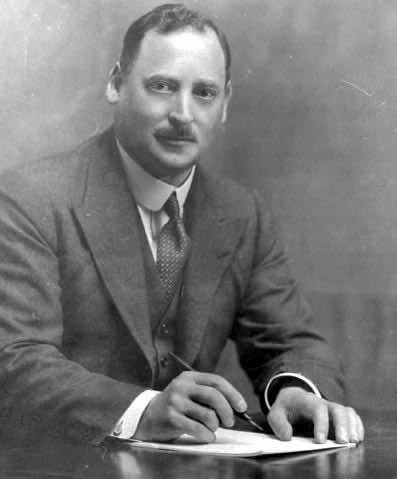
1922
US Patent 1,625,463
The invention relates to improvements in diamond grinding tools manufacture.
The object is to produce a diamond tool having superior cutting qualities and a long life and provide an inexpensive method of manufacturing the same.
Tools have been made by forcing diamond powder into the periphery of a metallic arbor, the projecting points of the particles serving as cutters. For tools made this way, particles become dislodged from their seats in the arbor within a short time. As a result, the efficient working life of the tool is of shortened.
A new article of manufacture comprises diamond particles about 66% and electrolytic iron particles about 34 % molded under pressure to form a homogeneous aggregate.
Photographs shows diagram from the patent.

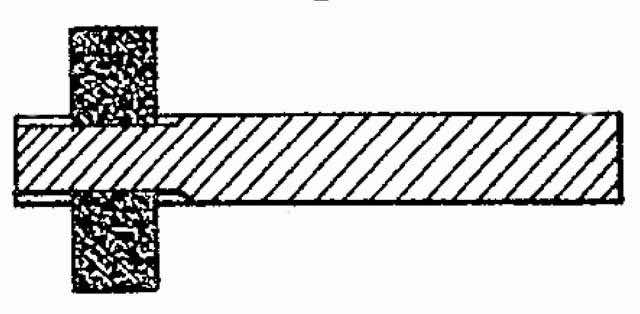
1920s (early)
'The rim of this saw contains 125 diamonds. They are embedded in steel, and when the exposed corner becomes dull, the stone is broken out and given a new setting. A saw of this kind, if given plenty of water, will cut its way through the hardest marble'.

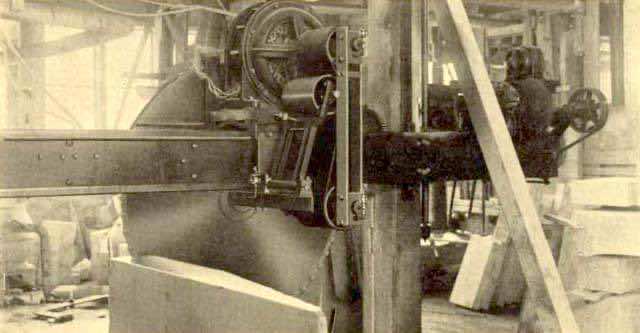
1920s
The German electric bulb company Osram developed cobalt cemented tungsten carbide as an alternative to diamond for the extrusion of tungsten wire. The Osram R&D group reduced the brittleness of pure tungsten carbide by adding nickel at first and soon thereafter cobalt. The cemented tungsten carbide patent was sold to the Krupp Company where the development of a production technology for the manufacture of Hartmetall was started. In negotiations with Krupp, all American rights accrued to General Electric, with Krupp retaining the right to export cemented tungsten carbide to the United States. General Electric formed the Carboloy Company.
Although tungsten carbide has become an extremely successful metal cutting tool, its roots are as a wear material, a wire drawing die, which is still a successful application to this day.
Diagram shows wire drawing and a photograph shows a 1910 lamp.

1925
In 1925 the Bakelite Corporation took out a patent on the first phenolic resin bond. In the early 1930s resin-bonded wheels, containing 'fragmented' natural diamond grit, were patented by Wickman Ltd. England (1933), Voegeli & Wirz Switzerland (1934), Norton Co. USA (1934) and J. K. Smit & Sons England (1939).
Examples from Smit & Sons patent (1939).

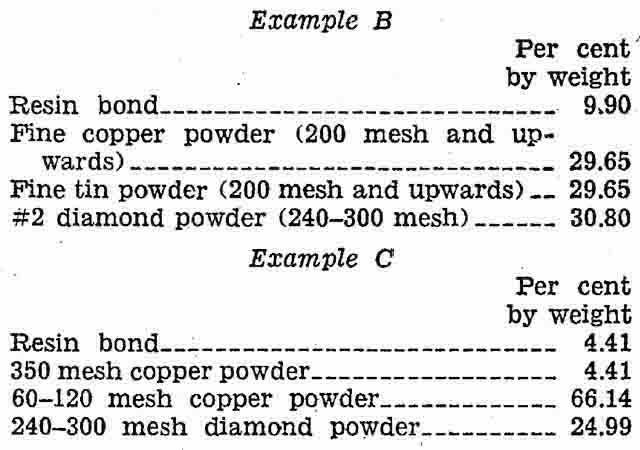
1926
An eight-stone diamond bit of 1926.
There are four stones set on the outside circumference and four on the inside.

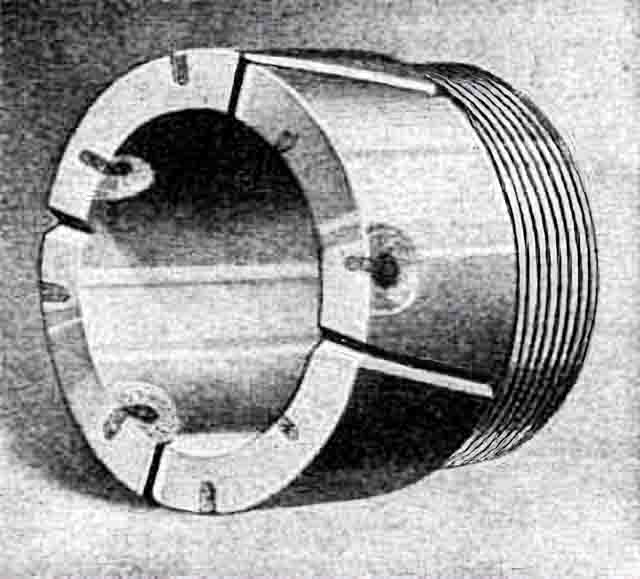
1929
US1,712,034
This invention relates to improvements in cutting tools and has particular reference to the imbedding in the periphery of a circular saw, of a cutting medium, preferably diamonds, for effectively and quickly cutting hard substances such as agate or the like.
The method of setting diamonds in a saw body which consists in forming teeth on the periphery of the body, deepening the teeth to provide an enlargement of the saw body adjacent to the base of the teeth, compressing the teeth to form pockets and finally sealing diamonds in the pockets thus formed.
Photographs shows diagram from the patent.

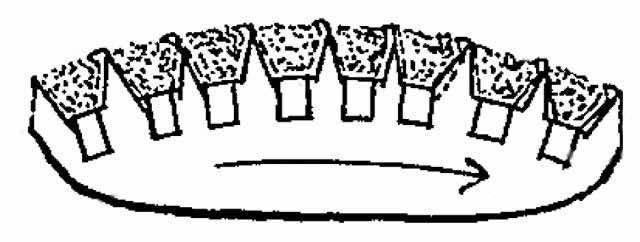
1930
P Voegeli-Jaggi was born in 1893 in Switzerland. He studied chemistry at the University of Zurich and later worked as a research chemist in various industries. In the 1920s, he began working on the development of synthetic resins, which were being used to replace traditional materials such as wood and metal.
Voegeli-Jaggi's breakthrough came in 1930 when he developed a phenol-aldehyde resin bond for diamond. This bond was a type of synthetic resin that could be used to attach diamonds to a cutting wheel, allowing for the rapid and precise cutting of diamonds. The resin bond was strong enough to withstand the high temperatures and pressures involved in diamond cutting, and it allowed for the production of perfectly cut and polished diamonds.
Digram is from Patent 434,402, abrasive tools and compositions by P Voegeli-Jaggi, April 1, 1935.

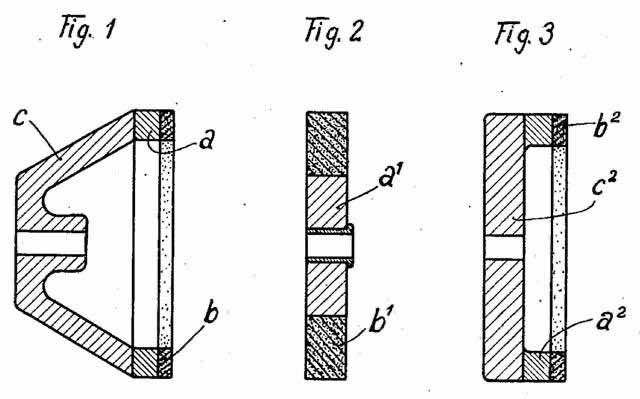
1935
Bridgman introduces his simple opposed-anvil pressure device, which is still used in laboratories today. Pressures approaching that found near the centre of the earth are created in tiny Bridgman anvils made from single-crystal diamonds.
Diagram shows a schematic of the system.

1938
Diamond dealers would seek out near-colourless stones with strong blue fluorescence as it made these diamonds appear more colourless and therefore brighter under light containing ultraviolet. When a large quantity of these diamonds were discovered at the Premier mine in South Africa, it gave rise to the term 'Premier' to describe diamonds with strong blue fluorescence. Similarly, the term 'Jager' referred to diamonds from the Jagerfontein mine, also in South Africa, which produced a high proportion of colourless stones with strong fluorescence.These diamonds were known as 'Blue White' and commanded a higher price.
However, the positive associations connected to the term 'Blue White' began to be eroded when the trade started selling lower colour diamonds under this label. In 1938, the Federal Trade Commission (FTC) banned the term 'Blue White' from diamond marketing.
Photograph shows diamonds under an ultraviolet lamp (top) and normal lighting (bottom).
1939
Before 1939 diamonds had no universal grading system to determine the quality of a stone until the GIA (Gemological Institute of America) established the 4 Cs: Carat weight, Colour, Clarity and Cut:
The larger the diamond, the rarer it is.
The better the colour, the more valuable it is.
The greater the clarity, the more beautiful it is.
However, it's the quality of the cut that gives the diamond its brilliance.
the 4 Cs
1940
From 1940 to 1943 the Industrial Diamond Review (IDR) was issued as a supplement to the Gemmologist.
From 1944 to 1961 the IDR was published by the Industrial Diamond Information Bureau.
In 1961 the IDR was purchased by De Beers; the A4 format was introduced in 1962.
1940s
It took a few decades until the inventions of the 1920s and 1930s made refinements to Joseph Gay-Lussac's ideas (1883) and speeded up the development of diamond grit impregnated tools.
The development of diamond blades for cutting green concrete was a significant innovation that emerged during the 1940s, particularly among German engineers. At the time, Germany was undergoing a massive infrastructure project to build the Autobahn, a network of highways that would connect major cities and improve transportation across the country.
These blades were made by bonding diamonds to a metal substrate using a process called sintering. The diamonds were arranged in a specific pattern on the blade to optimizse their cutting performance.
Photograph shows an early autobahn.


1941
Kuzmick details resin bond diamond tools in USA patent 2,243,105
Examples given in the patent use resin (phenol-formaldehyde) bonds, fine copper, tin, nickel, aluminium powders, and diamond.
Resin bond predominates in the grinding of tungsten carbide, where a good balance between wheel life and removal rate is required. A resin-bonded wheel is weakened by exposure to excessive heat.

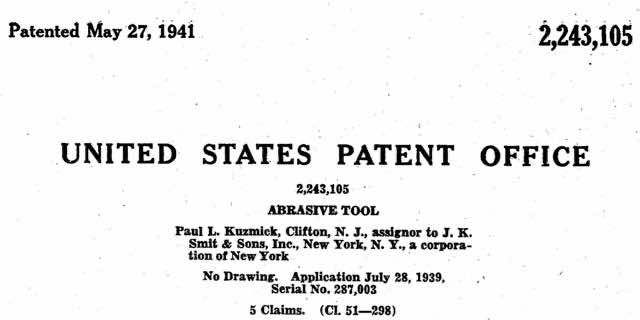
1942
During World War II the company’s production of industrial diamonds acquired greater importance. Sales of these rose to £4.3 million in 1942, representing nearly 40% of the total trade in diamonds. Surprisingly, the diamond market recorded record sales in 1943 (£20.5 million) and 1945 (£24.5 million).
Conflict, however, arose with the U.S. government, which accused De Beers of being unwilling to loosen control of its diamond stockpile to help the war effort; it was further concerned about the shortage of industrial diamonds and about Britain falling under enemy control. Sir Ernest Oppenheimer denied the accusation and the shortage, and proposed the compromise of stockpiling in Canada. Industrial diamond sales were in fact supervised by the British government and prices were frozen. But Sir Ernest had angered the U.S. government, which pursued De Beers as an anti-competitive cartel. The U.S. Justice Department filed antitrust actions against De Beers in 1945, 1957, and 1974.
1946
Sir Ernest Oppenheimer established Industrial Distributors Ltd, to focus on the industrial use of natural diamonds.
Boart Products crushed boart and sieved it into suitable sizes for use and continued to study the properties of diamond and, through their enterprise, the Diamond Research Laboratory (DRL).
Photograph shows the official laying of the DRL foundation stone, on 21st March 1947, by Sir Ernest Oppenheimer.
1946
Percy Williams Bridgman received the Nobel Prize in physics 'for the invention of an apparatus to produce extremely high pressures, and for the discoveries he made in the field of high-pressure physics'.

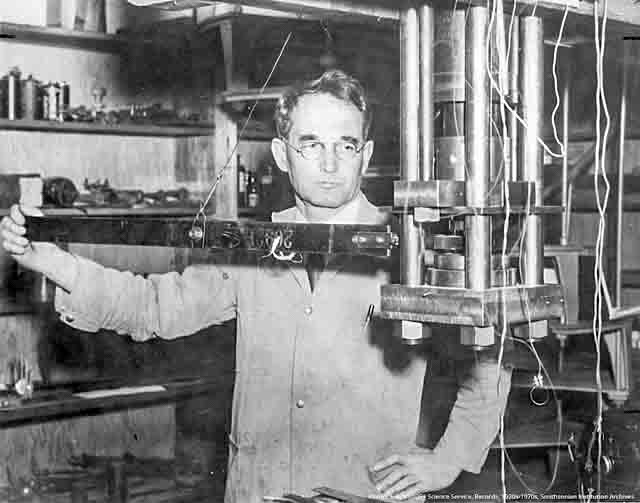
1947
Diamond Research Laboratory (DRL) opened in Johannesburg, South Africa. The facility had 4 sections:
• Chemistry,
• Cutting and Polishing,
• Engineering and
• Physics.
Photographs show the DRL and a booklet issued by the DRL.
1947
Frances Gerety, a copywriter at the N W Ayer advertising agency, created the slogan, 'A diamond is forever'.
De Beers sponsored scriptwriting and production of Hollywood movies, encouraging jewellers to promote diamond jewels to Hollywood celebrities.
1952-1953
William G. Eversole, working at Union Carbide, became the first person to add a layer of synthetic diamond to a natural diamond surface. His process involved the growth of diamond on diamond substrates with the use of carbon-containing gases at pressures of less than 1 atmosphere and temperatures of around 800-1000°C. This CVD technique, however, was not very effective since large amounts of graphite were co-deposited with diamond, and growth rates were extremely low (less than 0.1 μm/hr).
A common view was that growth rates would always be far too slow to be of interest. Also, the apparent violation of thermodynamic laws was a continuing theme for many during this time period.
Diamond deposition using hot-filament gas activation at low pressures was the first method to achieve nucleation and continuous diamond growth on substrates. Today, advanced hot filament CVD technology can deposit high-quality, polycrystalline diamond films on a wide range of materials. Hot filament advantages include high deposition rates, large deposition areas and low electrical power consumption.
Unpublished reports show that Eversole achieved growth of new diamond during the period 26th November 1952 to 7th January 1953. This is just before 15th February 1953, the date of the first high-pressure-high-temperature synthesis of diamond by Lander & Lundblad at ASEA.
Schematic shows diamond CVD.

1953
ASEA (Allmänna Svenska Elektriska Aktiebolaget) synthesised diamond in Stockholm.
The solvent-catalyst was iron carbide which requires a pressure of 60 kbar and a temperature of 1,400 °C for diamond synthesis.
The diagram is a cross-section of the von Platen high pressure apparatus, which uses a split-sphere design, to achieve uniform pressure on all sides of the sample.
Photographs show the von Platen apparatus (open and closed), a sintered capsule and the synthesised diamond (US mesh 170/200).

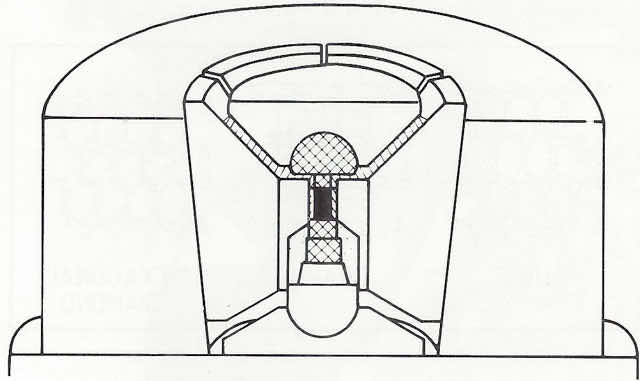
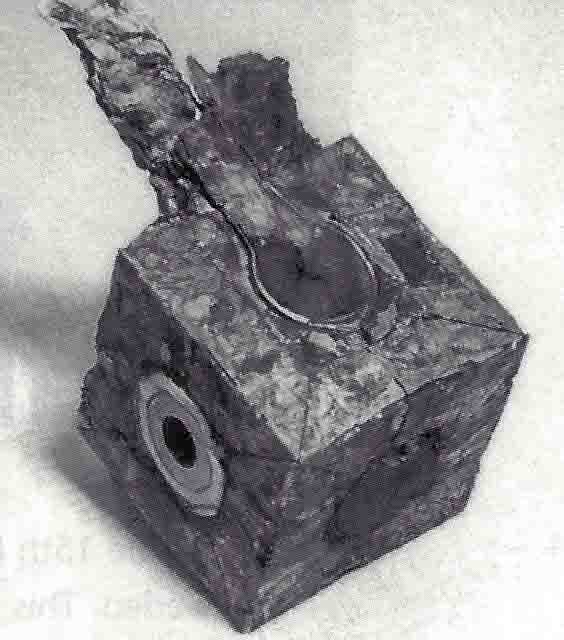
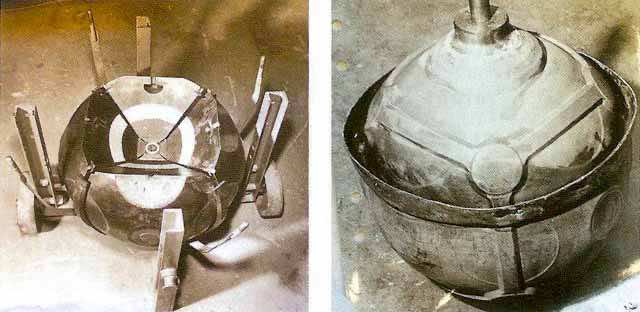
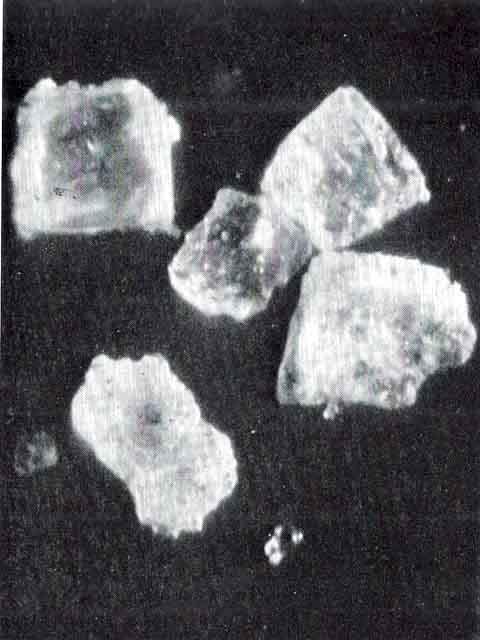
1953
Movie 'Gentlemen Prefer Blondes' was released. Marilyn Monroe wore a pear-shaped diamond, one of the biggest diamonds to have ever appeared on screen at the time.
Marilyn Monroe sang the iconic 'Diamonds Are a Girl’s Best Friend', an example of early branded content.
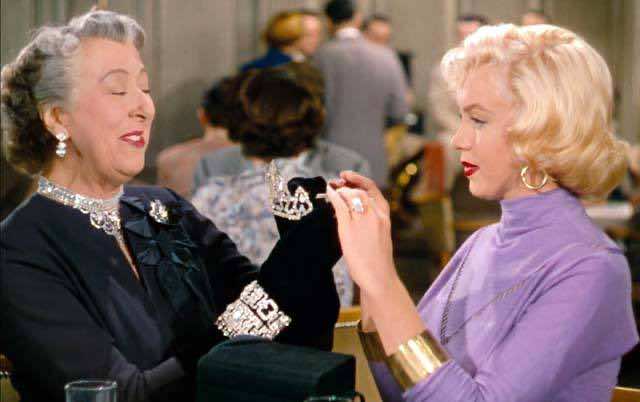
1955
Glass scalpels were once the blade of choice because they could be manufactured by hand and were superior in most ways to more brittle metal blades. The advent of diamond knives quickly relegated glass knives to a second-rate status.
In 1955 the diamond scalpel was invented by the Venezuelan scientist Humberto Fernandez Moran. Diamond scalpels' principal feature is extreme sharpness, which makes it possible to cut tissue to very high precision; but a secondary benefit for the surgeon is their transparency, which improves visibility of the cut region, and in some special instruments permits internal illumination of the blade via fibre optic connection.
The photograph shows an early diamond scalpel.
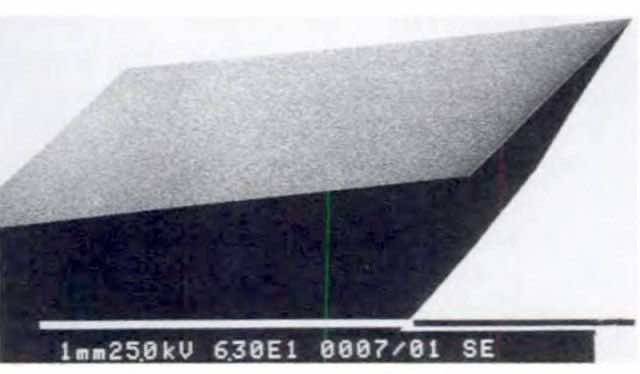
1955
For diamond synthesis, it is necessary to calculate an equilibrium line between diamond and graphite from thermodynamic data. The first such calculation to give the correct general picture was that of Miething (1920). The first in which one could have good confidence was that of Berman and Simon (1955), who calculated an equilibrium line (valid above 1200°K):
P = 7000 + 27T
where P is the pressure in atmospheres and T is the absolute temperature in Kelvin.
Their calculations were made possible by the availability of reliable thermodynamic data. In particular, they needed to know as functions of temperature the heat of transformation of graphite to diamond, the entropy difference between diamond and graphite, and the difference in atomic volumes of the two allotropes. They used newly available specific heat and X-ray data, and the calculated Berman-Simon line was found to match practical synthesis data closely.

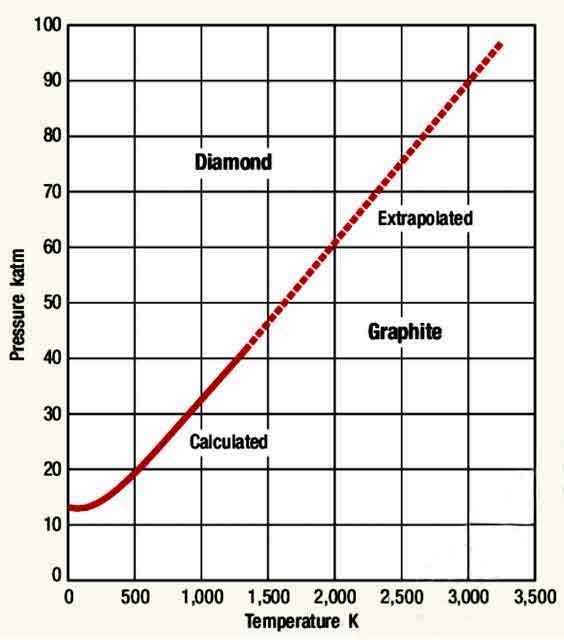
1955
Tracy Hall synthesised diamond at GE's Research Laboratory using a belt press, a much simpler design than the Baltzar von Platen apparatus. It employs a doughnut-shaped die surrounded by shrink-fit steel sleeves (the belt) which confine the sample chamber and two curved and tapered pistons which press on the reaction chamber.
The belt press was used by both General Electric Superabrasives and De Beers for commercial synthesis. The business generated a steady stream of cash, in particular RVG (resin bonded grinding diamond) and SDA (saw diamond abrasive).


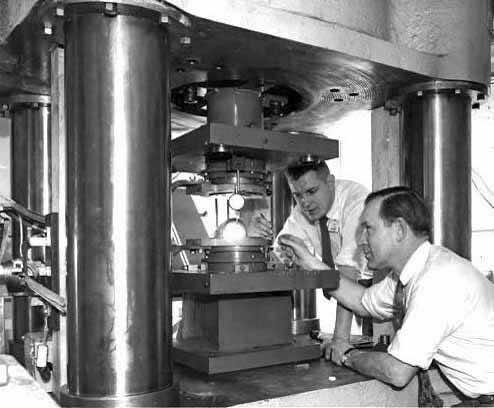
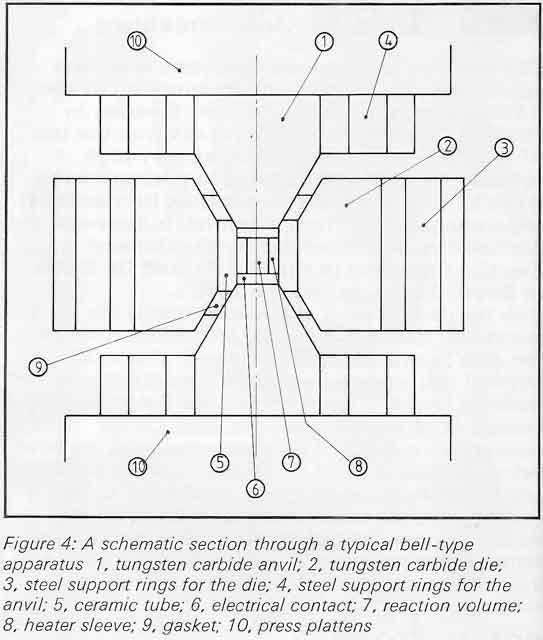
1957
Cubic Boron Nitride (CBN) was first synthesised by Robert H. Wentorf, a physical chemist working for the General Electric Company (GE).
In 2009, geologists discovered naturally occurring CBN in the southern Tibetan mountains of China. This naturally occurring mineral, Qingsongite, is named after the famed Chinese geologist, Qingsongite Fang who discovered diamonds in that region of Tibet, in the 1970s.

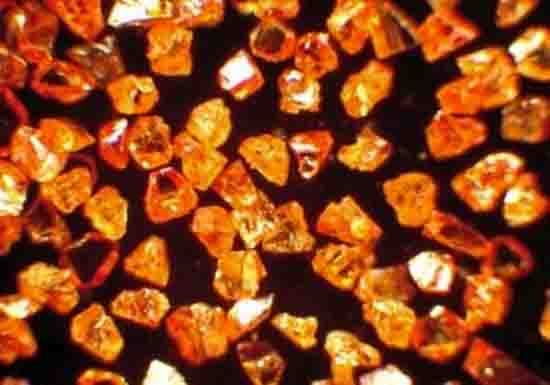
1958
DRL team which synthesised diamond (colourised photograph).
(Left to right:
J.F.H. Custers, B.W. Senior, P.T. Wedepohl, H.B. Dyer).
The team used two HPHT presses, one a 250 ton press the other a 2,000 ton press.
In 1971, Dr Henry Dyer became MD of De Beers Industrial Diamond Division (Pty) Ltd.


1958
J.F.H. Custers and E.T.S. Brown show H.F. Oppenheimer (seated, who had just succeeded his father to the Chairmanship) the first synthetic diamonds (approximately 70 carats).

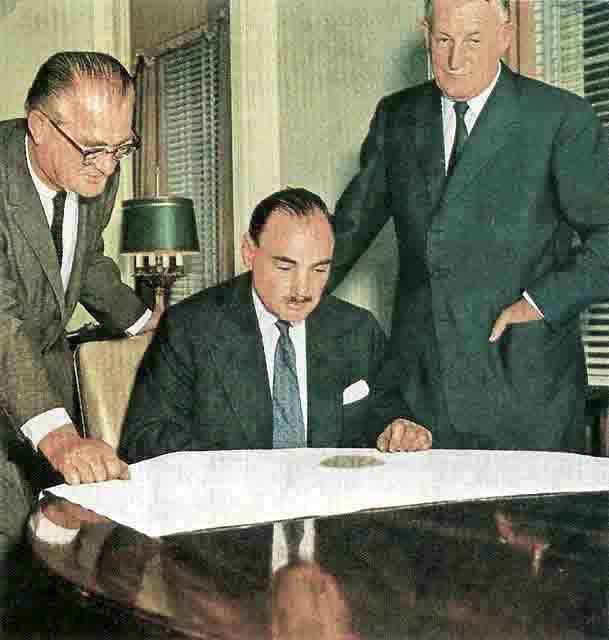
1959
DRL diamond synthesis team.
Middle row, 4th from left, Cornelius (Corrie) Phaal became the Research Director of De Beers Industrial Diamond Division (Pty) Ltd., in 1973, after working for Norton, USA.

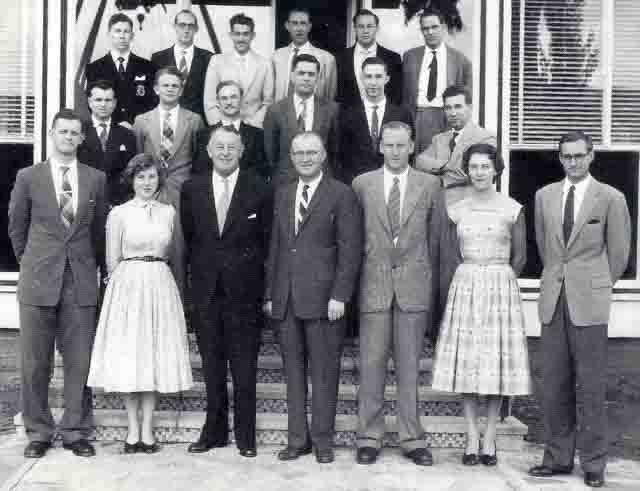
1959
SNDMB and SNDRB natural diamond for metal and resin bond applications were announced.
Photograph shows SNDMB 100/120.

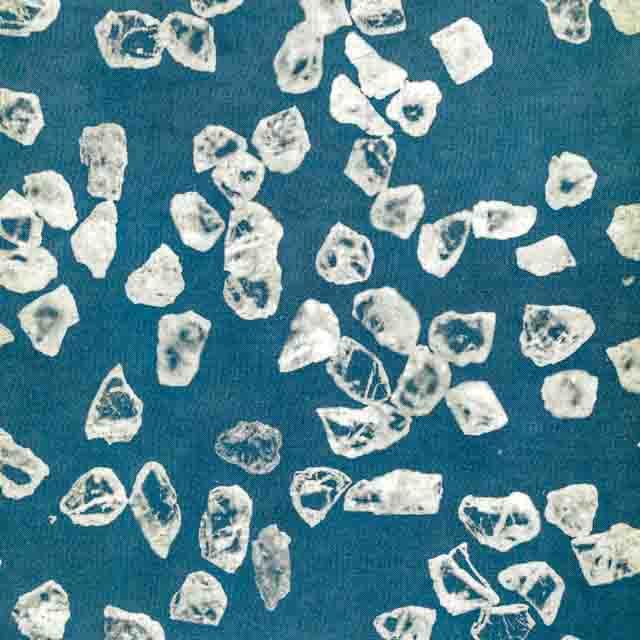
1960
Industrial diamond factory (Ultrahigh Pressure Units) started operations in Springs, South Africa.

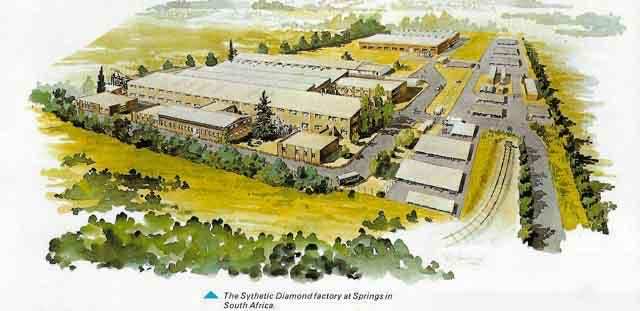
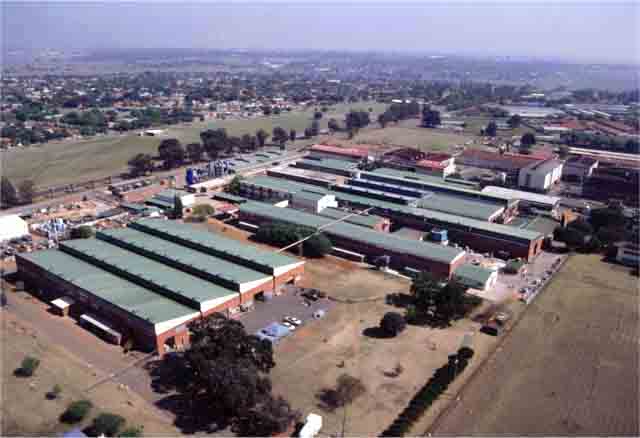
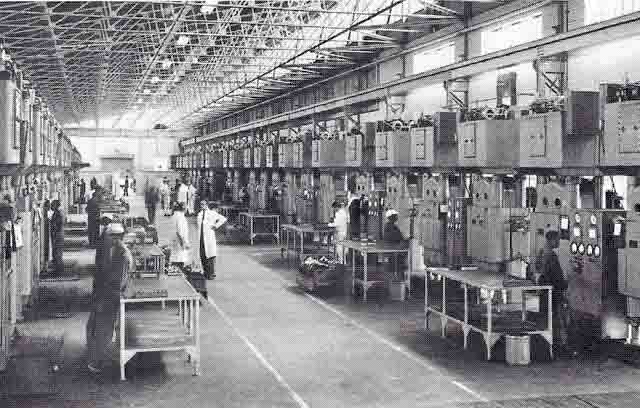
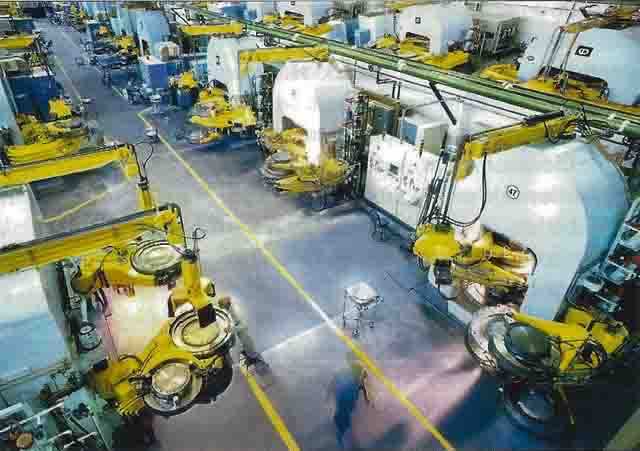
1961
Followed by a second factory (Ultrahigh Pressure Units) in Shannon, Ireland.
Photograph shows 10,000 ton presses.


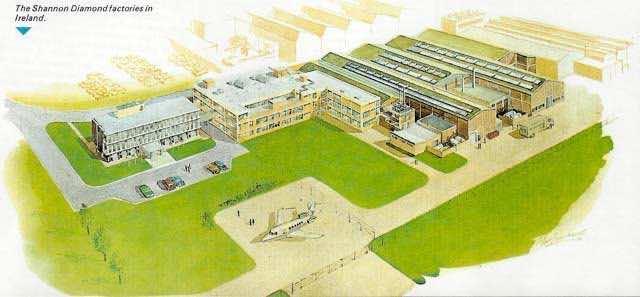
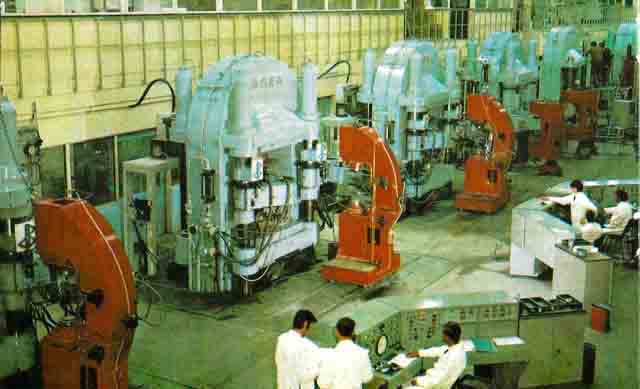
1961
The successful synthesis of diamond and lonsdaleite (hexagonal diamond), from graphite (20% rhombohedral structure), by shock wave experiments, was first reported by DeCarli and Jamieson.
Samples of graphite were recovered after exposure to explosive shocks of 300,000 atm (30 GPa) for 1 µs. X-ray and electron-diffraction examinations proved the existence of diamond.
The formation of hexagonal diamond is of particular interest due to its use in terrestrial sciences as a marker at meteorite impact sites.
Diagram shows the crystal structure of lonsdaleite.

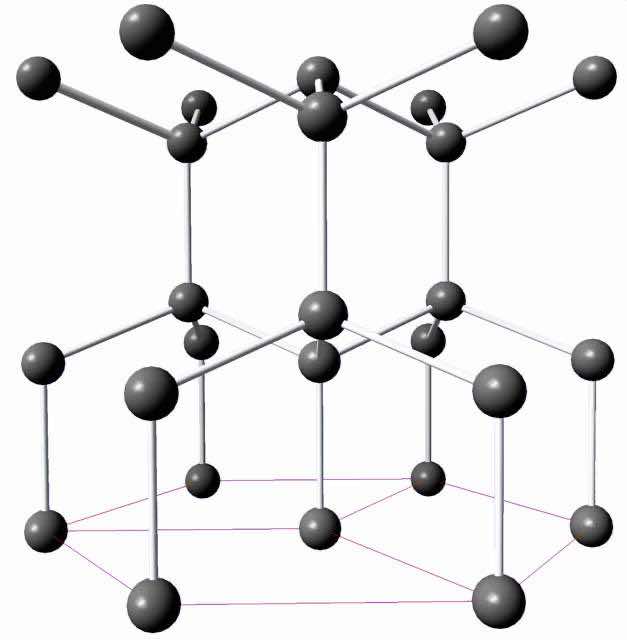
1962
ASEA diamond production moved to Robertsfors, Sweden.


1963
Founded in 1958, the Zhengzhou Research Institute for Abrasive & Grinding created the first crystals of synthetic diamond in 1963 and crystals of CBN in 1967.
After this synthesis, a series of superabrasive products, special production machines and inspection instruments were developed.


1963
In 1963, Soviet scientists at the All-Union Research Institute of Technical Physics noticed that nanodiamonds were created by nuclear explosions that used carbon-based trigger explosives. Other than detonation, methods of nanodiamond synthesis include laser ablation, HPHT and CVD.
Nanodiamond shares the hardness and chemical stability of larger diamond, making it suitable for applications such as polishing.
Fluorescent nanodiamond is photostable, chemically inert and has an extended fluorescent lifetime, making it a great candidate for many biological applications.
For drug delivery, diamond nanoparticles offer a large, accessible surface and tailorable surface chemistry. They have unique optical, mechanical and thermal properties and are non-toxic.

1966
A large deposit of diamond-bearing kimberlite rock was discovered in the Orapa ('the resting place of lions') region of Botswana by a team of geologists from De Beers. The discovery of diamonds at Orapa was a major turning point for Botswana, which was one of the poorest countries in the world at the time. The development of the Orapa mine began in earnest in the mid-1970s; it officially opened in 1971 as one of the world's largest diamond mines. The mine is operated by Debswana, a joint venture between De Beers and the government of Botswana, and it has been a major source of employment for people in the region.
The Orapa mine became a major contributor to Botswana's economy, with diamond mining accounting for around one-third of the country's GDP and around 80% of its export earnings.
1966
Saw diamond abrasive (SDA) launched - manufactured using alternating graphite and catalyst layers (invar composition).

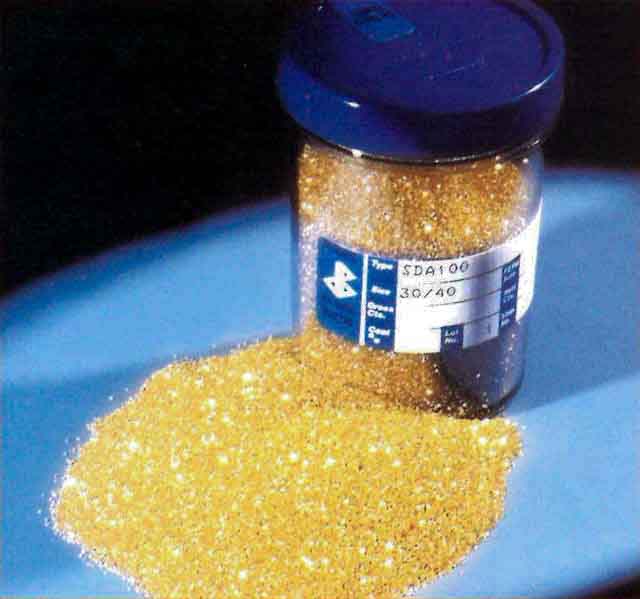
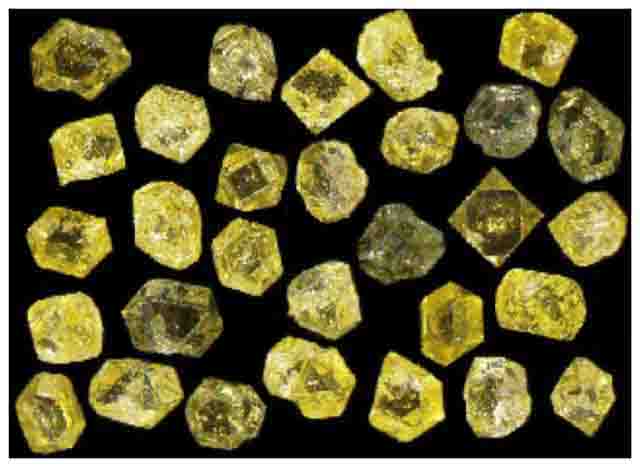
1967
Scandiamant AB formed with both ASEA and De Beers holding equal interests.
Photograph shows ASEA 10,000 ton Quintus presses (wire-wound frame) - Scandiamant AB was formed with just 3 of these presses.

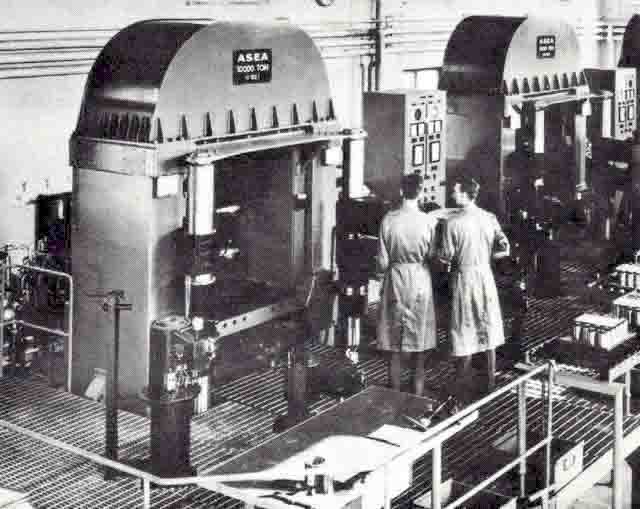
1968
Tracy Hall completed the first cubic press, an idea on paper since 1956. Cubic press technology was transferred to China in the 1960s. Today, nearly all Chinese producers use hinge-type cubic-anvil presses.
Tracy Hall co-founded MegaDiamond in 1966.
Schematic shows a cubic press system.
(Die-free cubic presses can reduce manufacturing costs because large dies, used in a belt systems, are expensive consumable parts - see photograph).

1968
US Patent. 3,401,019 Process for Synthesising Diamond.
The direct transformation of graphite to diamond by shock wave compaction, outlined in the above patent, was commercialised by Du Pont in the 1970s. Shock wave compressed diamond is formed by direct transition from graphite, without using a catalyst. The process requires the packing of dynamite around a steel tube containing mixed graphite powder and copper grains (e.g. 92wt.%, about 1 mm in size).
As the explosive detonates, it subjects the graphite to enormous pressure, from 8GPa up to 40GPa, giving an extremely fast nucleation rate. Several kilograms of diamond can be produced by each explosion.
Diamond powder, achieved via this technique, is now produced in China and Russia.

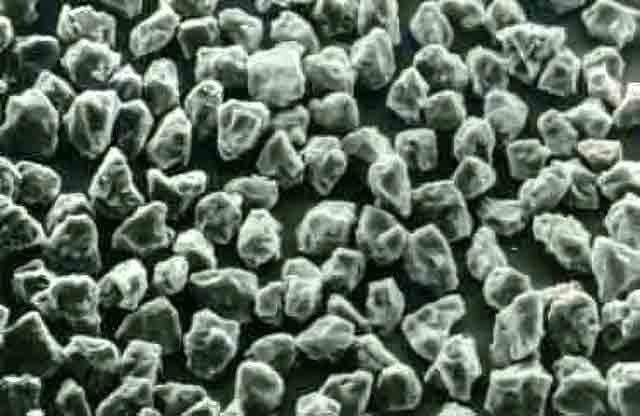
1971
De Beers Industrial Diamond Division (Pty) Ltd (Debid) created using the dormant Adamant Laboratories (Pty) Ltd as the base company.
1971
Debid and GE signed a license agreement under which GE is permitted to sell metal coated diamond for resin bond wheels.
Photograph is an SEM of coated diamond.

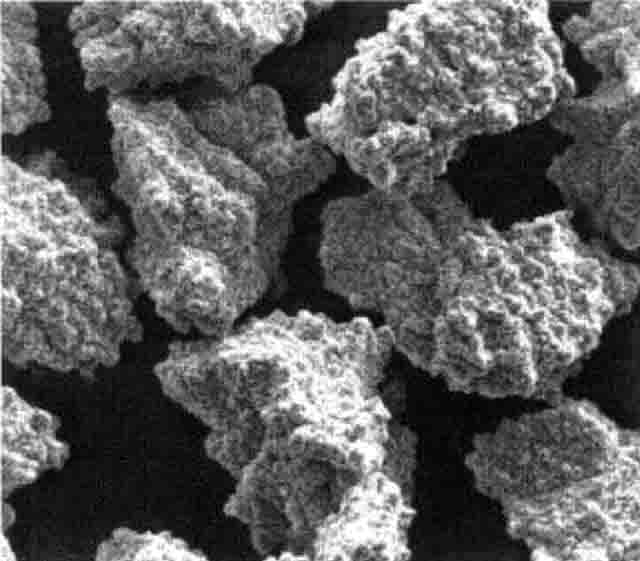
1971
Compax PCD introduced into the drilling industry by GE Carboloy. The early cutters were available as a carbide disc 8.38mm diameter by 2.8mm thick, with a 0.5mm thick polycrystalline diamond layer that was un-chamfered. A stud cutter, where a PCD blank was brazed onto a tungsten carbide stud, was also available. The braze alloy, BAg-1, was chosen to prevent thermal degradation of the PDC layer.


1971
GE announced it had created several gem-quality synthetics and sent them to the GIA Laboratory for examination. The diamonds ranged from F to J colour. GE also created several fancy coloured yellows and blues that GIA also analysed. In all cases, the diamonds carried distinctive metallic flux inclusions that could be seen with an optical microscope, making them easily identifiable as synthetics.
At this time, these gem-quality synthetic diamonds weren’t economically feasible for jewelry use.
Photograph - faceted stone in the centre weighs 0.78 carats.

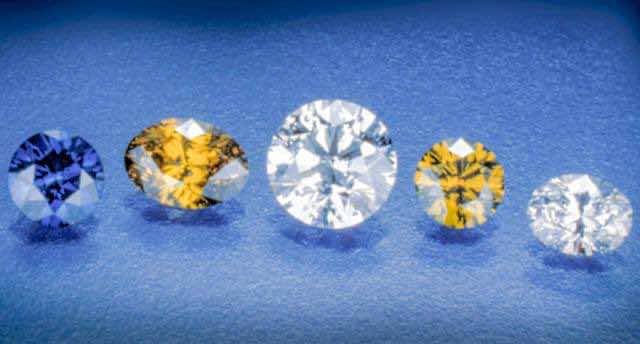

1972
Indiaqua, an Industrial Diamond Quarterly, launched by Bevil John Blythe Rudd, the managing director of the De Beers Industrial Diamond Corporation for South America, South-East Asia and the Pacific. He edited the magazine, which laced technical and trade items with other interesting photographs.
1972
De Beers commercialised diamond heat sinks. Nitrogen free, Type IIa diamond, a type perculiar to the Premier Mine, has a high thermal conductivity (2,000 Wm-1K-1).
By 1990 devices that used diamond heat sinks included semiconductor diode lasers, microwave diodes, such as IMPATT's and Gunn devices, and some high-frequency, high-power transistors.
1972
Syndite polycrystalline diamond (PCD) was launched for use in cutting tools.
Initially, Syndite products were derived from 9.52 mm rounds, 3.18 or 1.60 mm overall thickness, with a 0.7 mm thick diamond layer.
Photographs show an early PCD cross-section and the Syndite product range.

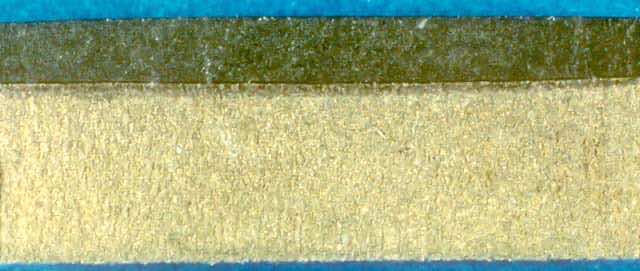
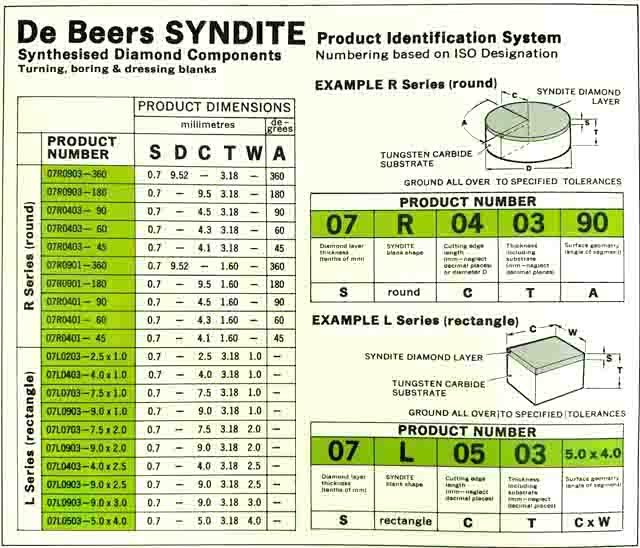
1973
Debid product chart.
(Please click on image for a larger view).
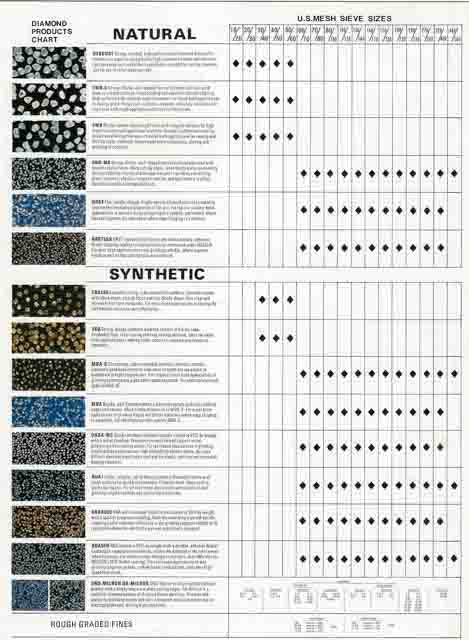
1974
Syndie, polycrystalline diamond wire drawing blanks, launched.
Photographs show the Syndie range, SEM of a laser pierced die and the hot drawing of tungsten wires.

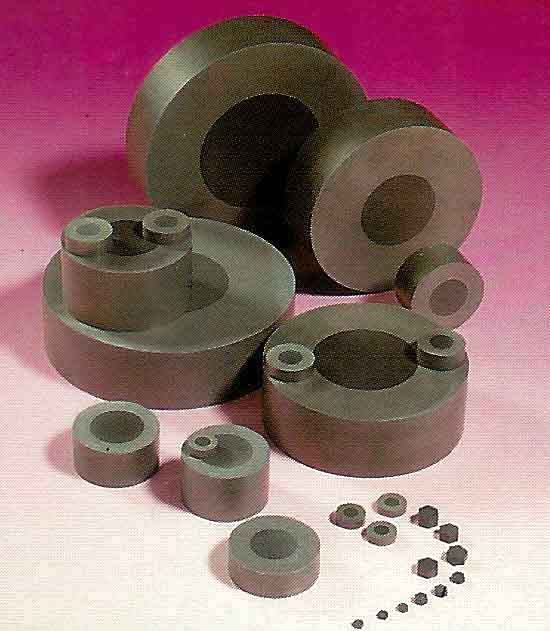
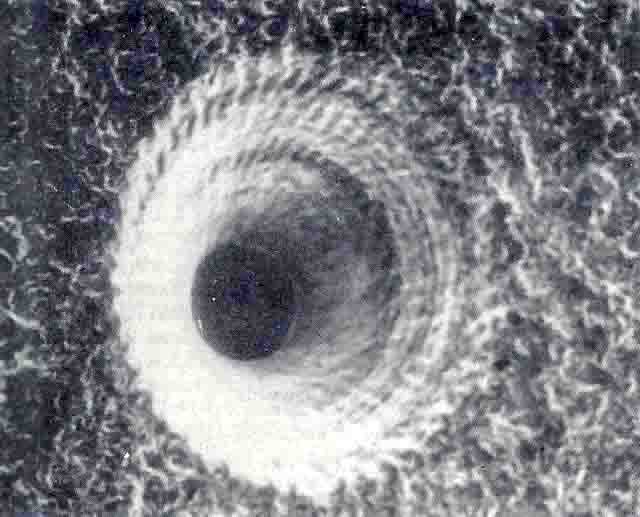
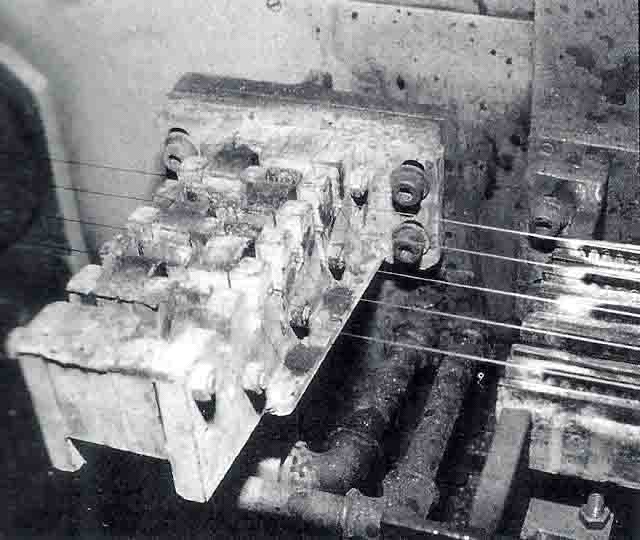
1974-1981
A team led by Nobuo Setaka at the National Institute for Research in Inorganic Materials (NIRIM), developed methods for the rapid growth of diamond at low pressures. The NIRIM group published scientific papers documenting their success in growing diamond at rates of up to 1 μm/hr using a hot filament process to activate methane/hydrogen gas mixtures - the role of hydrogen in diamond synthesis was suggested in 1966 by Lander and Morrison at Bell Labs.
The photograph shows SEM images of a 1m thick diamond film grown onto a silicon substrate.


1975
Scandiamant AB Robertsfors, Sweden, became part of De Beers Industrial Diamond (Debid), ASEA is no longer involved.

1975
Debid established an application research and technical support centre in Charters, Sunninghill, England (telephone number 23456).
Since 1966, Debid's home had been Rolls Building, 2 Charterhouse St. London.
Photographs show Charters, Axel Notter and Phil Bex with Japanese visitors.
1975
ABN (Amber Boron Nitride) cubic boron nitride (CBN) grit launched.

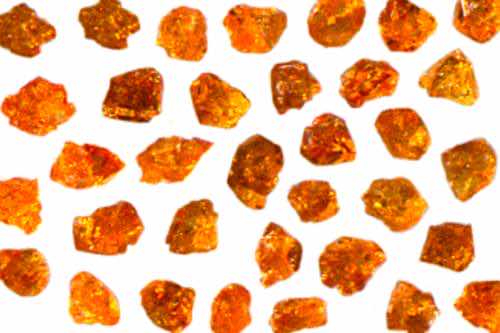
1976
Debid sales concentrated at Shannon. The only types of diamonds not included are toolstones and diestones which are categorised as Near Gem.
Photograph shows Sales Director Des Eustace and his PA Sheila Treacy with the airport visible through the window.
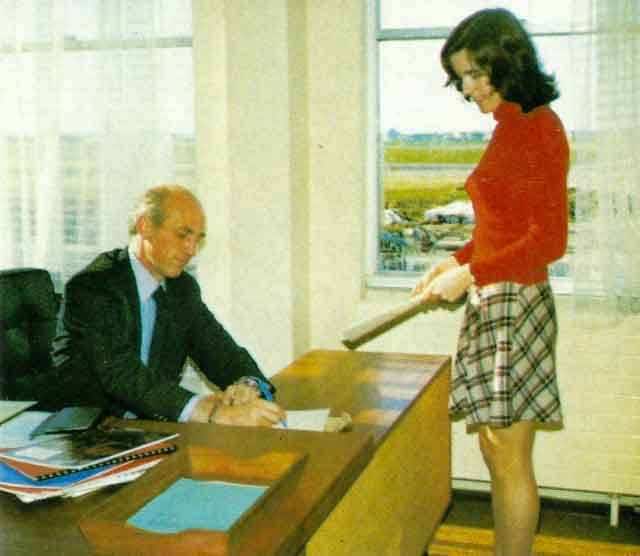
1976
Stratapax PDC launched. The name change from Compax to Stratapax helped to eliminate the confusion between cutting tools and oil well drilling.
The product line included the original 8 mm and new 13 mm cutters and a longer substrate design (LS Bonded) that facilitated attachment onto bits and provided a more impact-resistant cutter. Later, the industry moved to the superior one piece substrates.

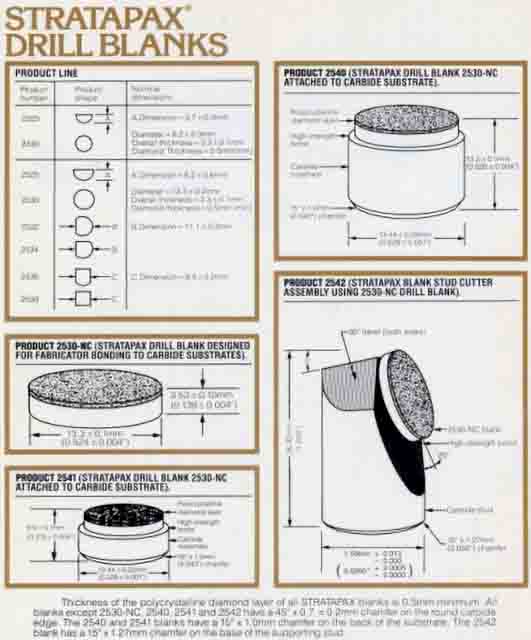
1976
The world's rough diamond production hovered around 50 million carats during the first half of the 70s. Rough diamond sales by the CSO were an estimated US$1.6 billion in 1976.
Synthetic diamond's highest attainable price is about US$3 per carat. In 1978, Debid sales, by volume of synthetic diamond, exceeded that of natural boart and drilling. There was an acute shortage of stones for wire drawing dies and cutting tools.
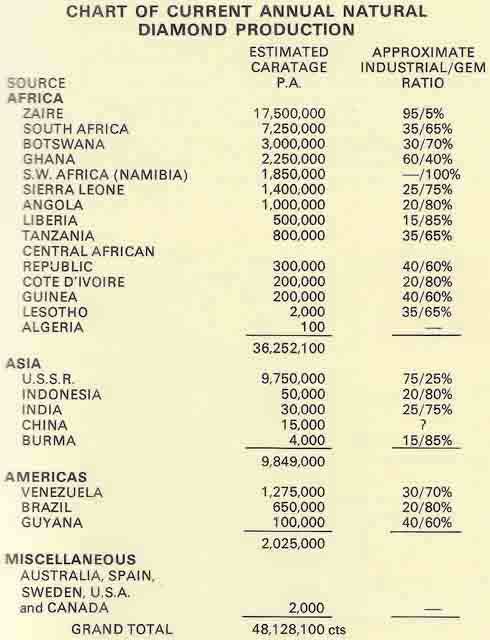
1976
The range of 1 carat natural diamond stones available for industrial use, not included are:
3rd and 4th quality maccles, 1st and 2nd quality cleaved points, 1st and 2nd quality industrial brown cleavage, fine blocks, carbons, brown diestones, black bullets, Congo west sawn tops.
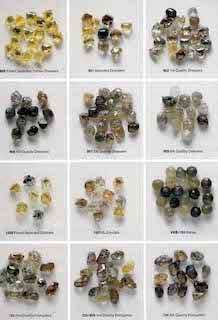
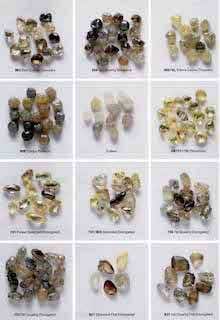
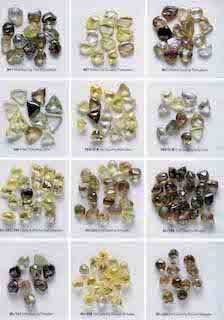
1976
E.T.S. (Ted) Brown, a retired Executive Director of Anglo-American, sailed his yacht from Cape Town to Rio de Janeiro.
Did his t-shirt foresee Synergy Material Technology?
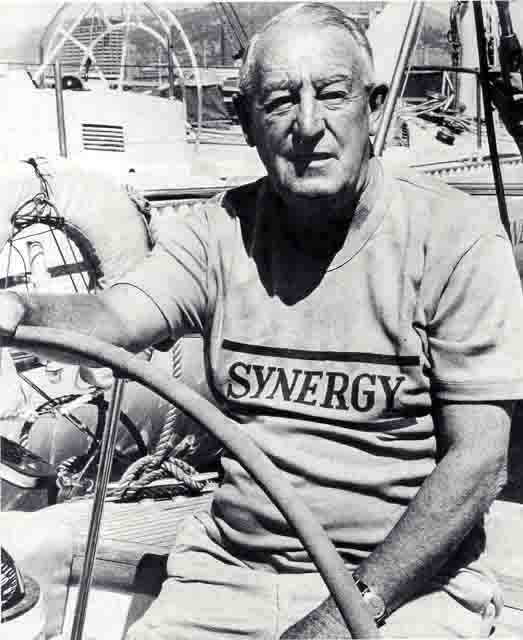
1976
Syndrill (PDC) was launched for use in oil well bits.
The diagram shows Syndrill on oil well bit blades.
Photographs show the Syndrill range and the Syndrill team - Gerry Boyle, Don Nolan and Phil Bex.


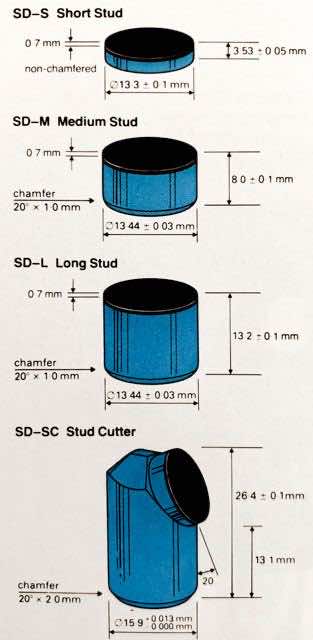
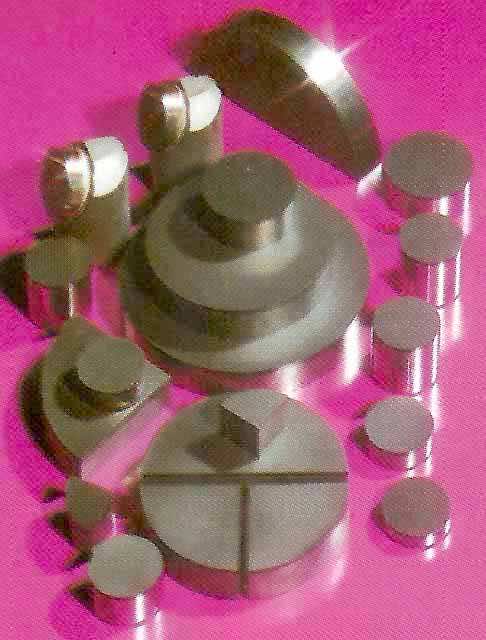
1977
Sumitomo Electric started to manufacture and sell sintered PCBN cutting tools under the brand name SUMIBORON.
The main component in SUMIBORON is Cubic Boron Nitride (CBN) with a special ceramic binder sintered under high pressure and high temperature. PCBN tools machine hardened steel, high hardness cast iron and exotic metals.
Photograph shows the turning of hardened steel.

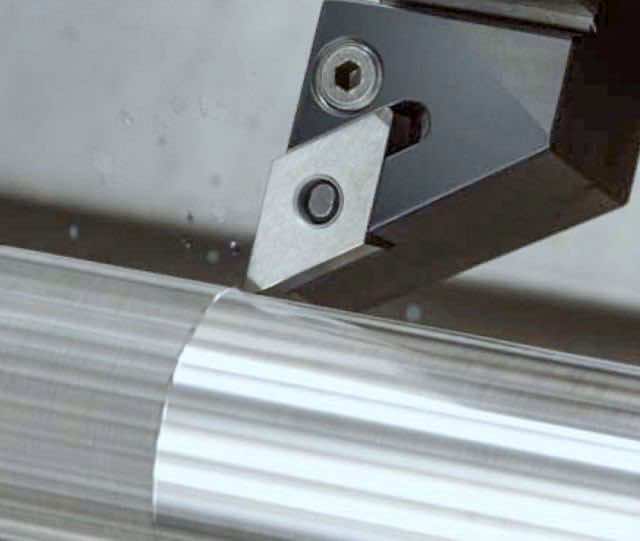
1978
US Synthetic Corporation was founded by Louis Pope with 3 employees.
In 1991 the company focussed exclusively on manufacturing polycrystalline diamond cutters used in drill bits for oil and gas exploration.

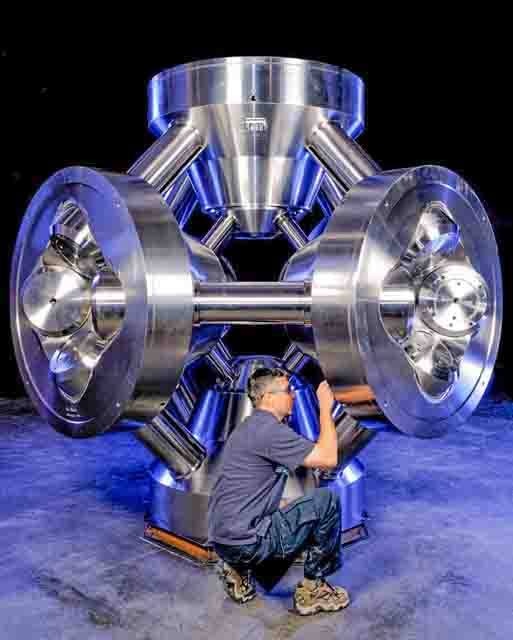
1979
In a interview, Harry Oppenhiemer, Sir Ernest's son, told National Geographic: 'People call us a monopoly, but we cannot control production to any extent, nor can we control the market. We do have enough money to stockpile gems and control prices. The price fluctuations accepted as normal with other raw materials would be destructive of public confidence in the case of a pure luxury item such as gem diamonds. If this is a monopoly, it benefits all concerned: producer, dealer, cutter, jeweller, and consumer'.

1979
Five grades of Syndite were launched based upon the average grain size in the diamond layer, namely 010, 025, 050, 075 and 100.


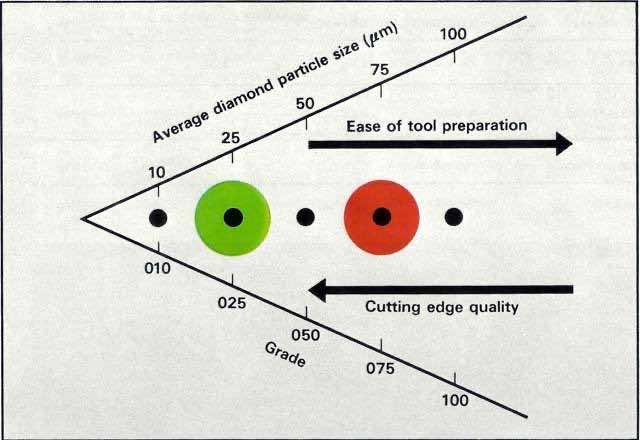
1980
A solid polycrystalline cubic boron nitride (PCBN) product, Amborite (AMB90), was launched. Early Amborite had a DB logo laser etched on the table where the dot patterns linked to the production batch.

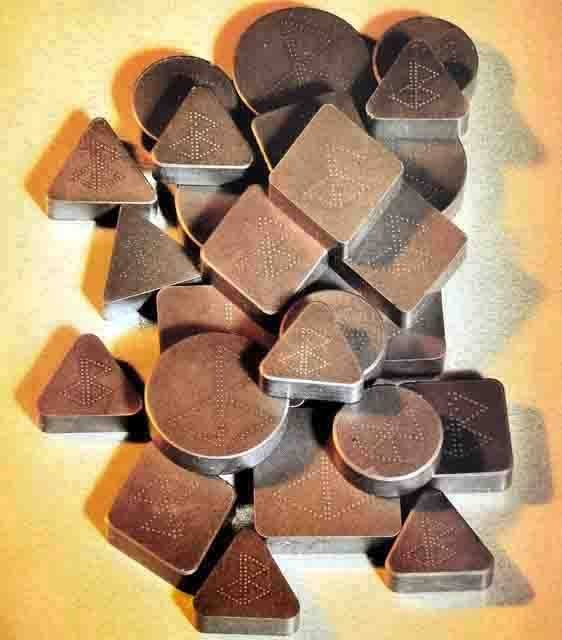

1980
The 40th Anniversary Issue of the Industrial Diamond Review, a little worn from use!
World Diamond Consumption - Million Carats extracted from front cover.
Because of rising costs, the IDR was cut from 12 to 6 issues per year.

1980
Debid products were launched from 1950 to 1980.
Note:
• 1961 - SYN-RB launched.
• 1968 - clad grit products, RDA55N and SNDMB55N were launched.
(Please click on image for a larger view).
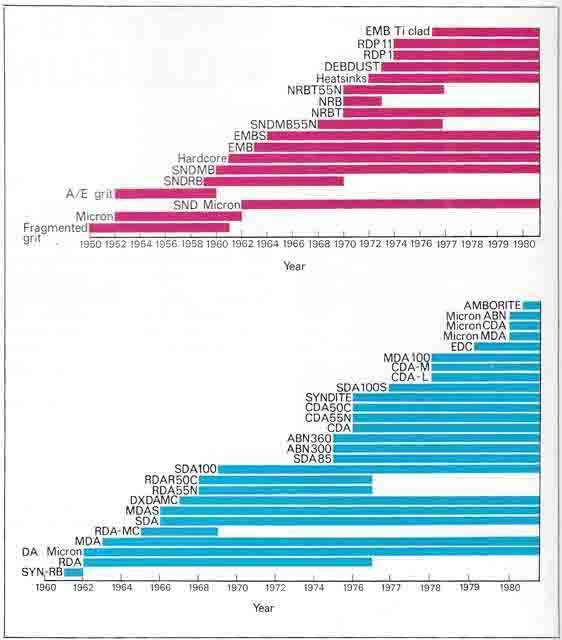
1980
Industrial Diamond Seminar in China.
The photograph shows Bevil John Blyth Rudd (standing), the head of industrial diamonds for Asia-Pacific. His great-grandfather was Charles Dunell Rudd of the Rhodes-Rudd partnership.
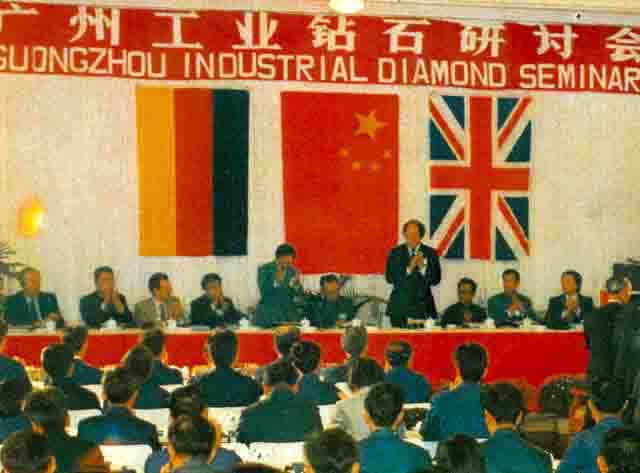
1980
Laser welding technology, from the aerospace industry, was introduced to the manufacture of segmented diamond blades. The advantages of laser welding are a higher-quality weld and greater bonding strength of the diamond segment to the diamond blade core. This weld also allows for dry cutting where water is no longer needed for blade cooling.

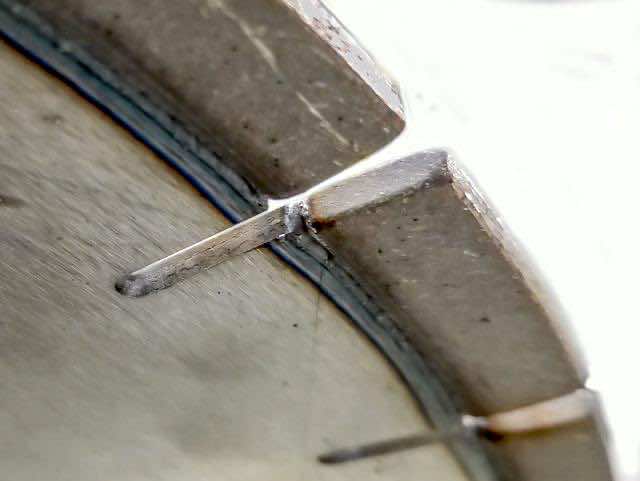
1982
Sumitomo Electric succeeded in synthesising a single crystal diamond with a diameter of about 6 mm (1.2 carats), which was one of the largest at the time and was listed in the 1984 Guinness Book of World Records as the world’s largest synthetic diamond. The crystals were yellow due to the presence of impurities.

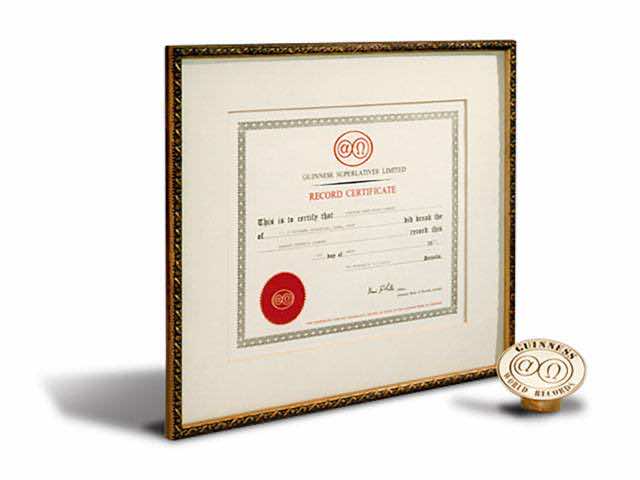
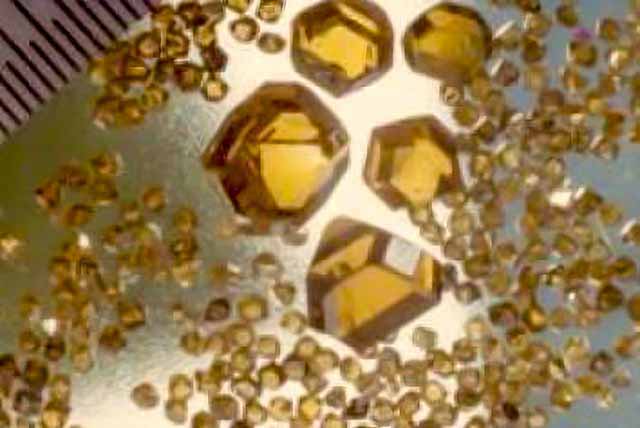
1982
The first commercially available diamond fracture-filling treatment was developed by Zvi Yehuda, of Ramat Gan, Israel.
The process is designed to enhance the clarity of a faceted diamond by filling cleavages and fractures, that reach the surface of the stone, with a glass-like resin that helps disguise these inclusions.The treatment can potentially change the perceived clarity from SI to VS.
The process has its roots in the oiling of emeralds, a practice that dates back to the Roman Empire; air-filled fractures in gemstones are visible, fractures filled with transparent oil are less visible.
Photographs show a knot which is visible before filling (top), after filling (bottom), the knot has virtually disappeared.
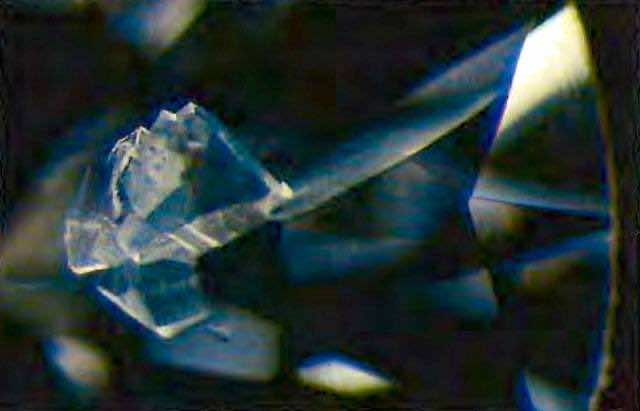
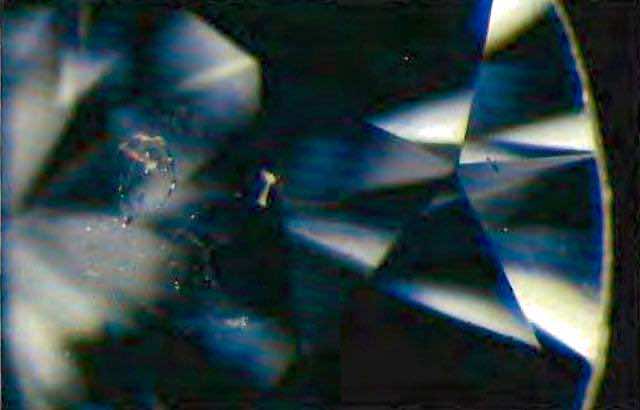
1982
Debex moves to larger premises, primarily concerned with the production of components to support Debid's diamond synthesis.

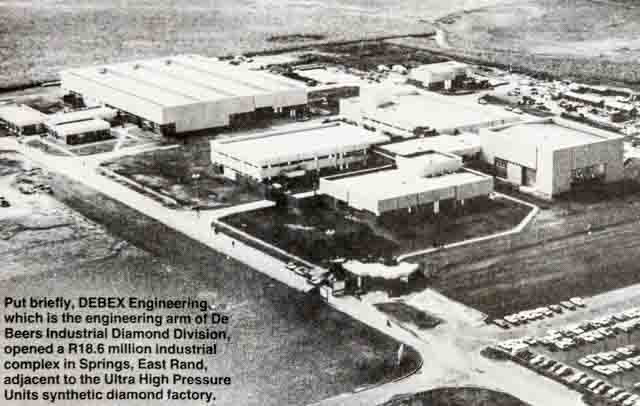
1983
The article 'Electrical conductivity of nitrogen and argon implanted diamond' marked the beginning of the doping diamond era. Boron and nitrogen, which sit either side of carbon in the periodic table, are the obvious candidates for diamonds. The strength and chemical inertness of diamond is retained when it is doped, meaning it can be used in challenging environments.
For semiconductors, boron-doped diamond (BDD) is a p-type semiconductor.
Diamond surface properties can be controlled to produce ozone from water - ozone is used to disinfect ice machines and fast-food lines.
Diamond surfaces can be engineered to produce hydroxyl radicals that break down robust organic pollutants in drinking water.
BDD microelectrodes have been applied to in vitro and in vivo measurements of biological molecules in animals, tissues and cells.
1984
Valdiamant, the PDC department of Valeron were instrumental in the development of the first commercially successful non-planar interface (NPI) cutter, the Claw Cutter, which was introduced into the market by Stratabit. This cutter dealt with some of the residual stress thought to be responsible for PDC diamond table delamination.
The sketch shows the design and the photograph, a diamond table detached from the substrate.

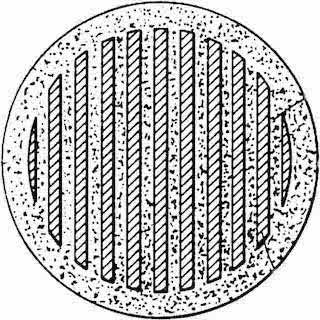
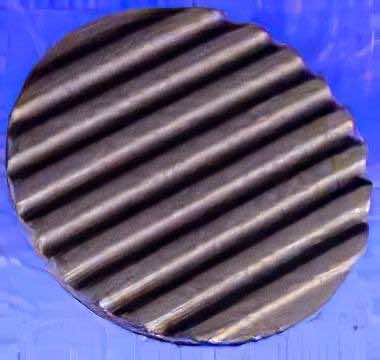
1984
Syndax 3 launched, a solid, thermally stable, polycrystalline diamond product, laser cut from large discs.
Photographs show a laser cut Syndax 3 disc and Syndax 3 products.

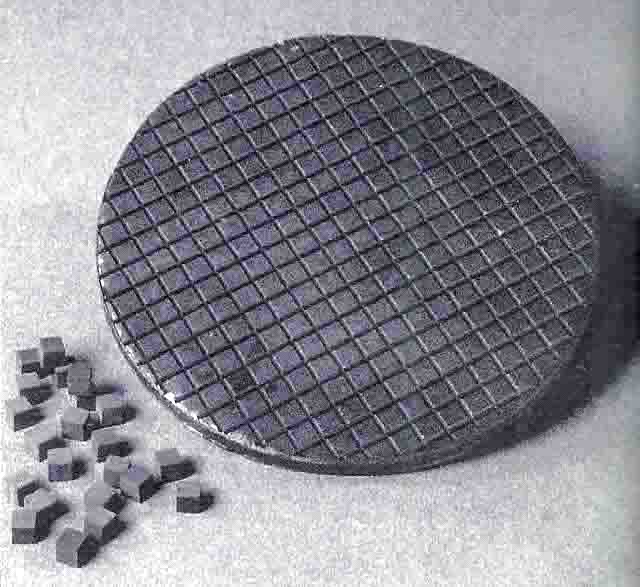
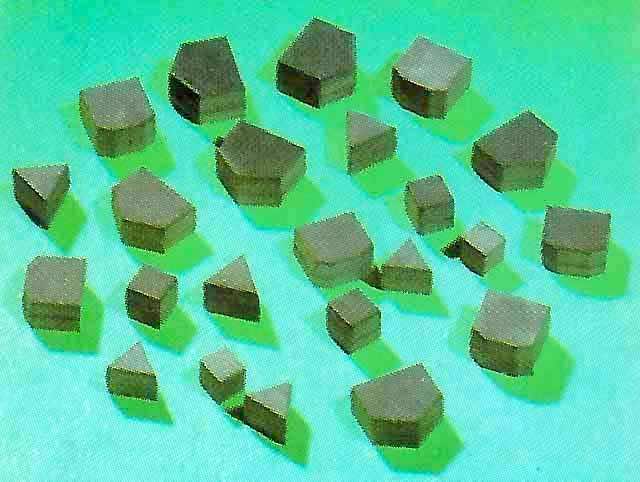
1984
William Eversole's breakthrough came when he discovered that adding hydrogen to the gas mixture used in diamond CVD helped to reduce the defects in the diamond films.
Eversole's work paved the way for the commercial production of diamond CVD, which is now used to produce diamond films for use in cutting tools, electronics, and other applications.
(Note this is not the same person as William G. Eversole mentioned in 1952-1953).
Schematic shows diamond CVD.

1985
Sumitomo Electric Industries in Japan announced that it had begun to produce gem-quality synthetic diamonds, using updated technology from GE, on a large scale for industrial use. The Sumitomo synthetics had a distinctive orange-brown or orange-yellow color resulting from the large amounts of nitrogen used to facilitate the growth of high-quality crystals.
This prompted De Beers into action. GIA researchers discovered that these synthetics had distinctive metal inclusions and internal growth patterns and ultraviolet fluorescence reactions, which helped create a base of knowledge to draw on when examining future generations of HPHT diamonds.
De Beers shifted its marketing strategy subtly. After years of placing the slogan 'A Diamond is Forever' at the centre of its advertising campaigns, the company began incorporating the terms purity and naturally created beauty in its marketing language.

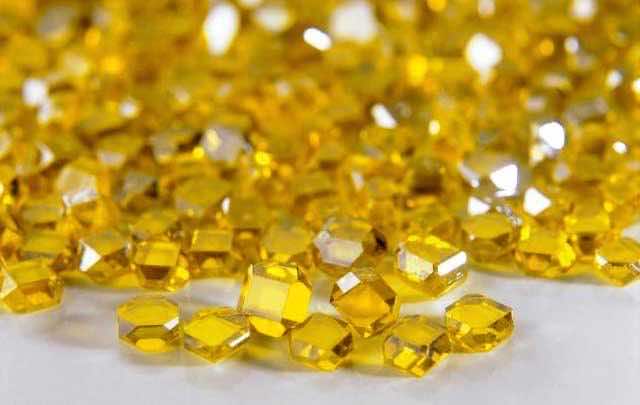
1985
Smith International acquired MegaDiamond, the Provo, Utah-based synthetic diamond company. MegaDiamond, a privately held company, reported US$3.5 million in sales in the fiscal year 1984.

1986
Debid pioneered the development and introduction of a layered diamond table cutters with a wear-resistant fine-grained diamond feed on the face, backed up by a tougher coarse diamond feed on a stress-engineered interface. This SYNDRILL feature became the foundation for a market-leading drill bit product line and was one of the highest volume PDC cutters over its lifetime.
Photograph shows (top to bottom) a fine grained diamond layer, on a coarser grained diamond layer on a tungsten carbide substrate.

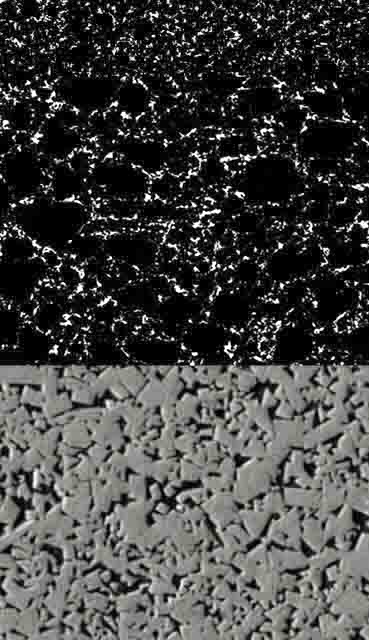
1987
SYNPICK launched as a new generation of mining tools. Consisting of a polycrystalline diamond cutter mounted on a heavy duty steel body.
1988
Debid opened Pacini Ltd in Ballasalla, Isle of Man (administration and finance). Initially the intention was to manufacture SYNPICK (Manxtal Cutting Tools), but the project ended in 1990.
1988
Norton Diamond Film started to produce diamond-coated carbide end mills, routers and drills for the machining of composite materials and other non-metallics. Thin layers of nano-crystalline diamond (DLC) were coated on substrates (up to 1 m in length).
Photograph shows a microwave CVD reactor (Wavemat technology) and coated cutting inserts.

1989
CVD films deposited in Charters, England.
Photographs show a CVD reactor and a cathodoluminescence micrograph of a CVD layer on a natural diamond substrate.

1990
Diamond Research Laboratory synthesised a 14.2 carat diamond, yellow in colour because of the nitrogen content; 500 hours of synthesis.
The diamond crystals were grown using a molten metal alloy flux (which acts as both a solvent and a catalyst for diamond formation) as well as a standard design reaction vessel similar to the type used to produce commercial diamond grits. Small diamond seed crystals are usually used to initiate crystal growth. Experimentation showed that there is an optimum number and positioning of the seed crystals in the reaction vessel that yields the largest and best-quality single crystals.

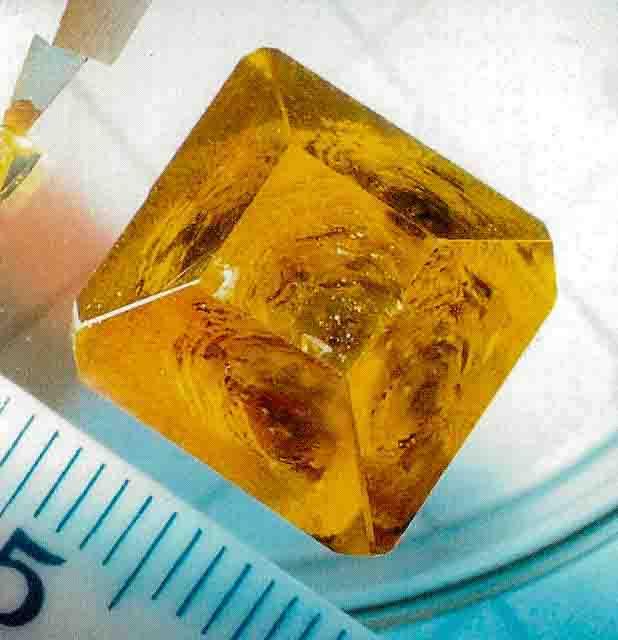
| Year | Carats |
|---|---|
| 1971 | 6.6 |
| 1987 | 11.1 |
| 1990 | 14.2 |
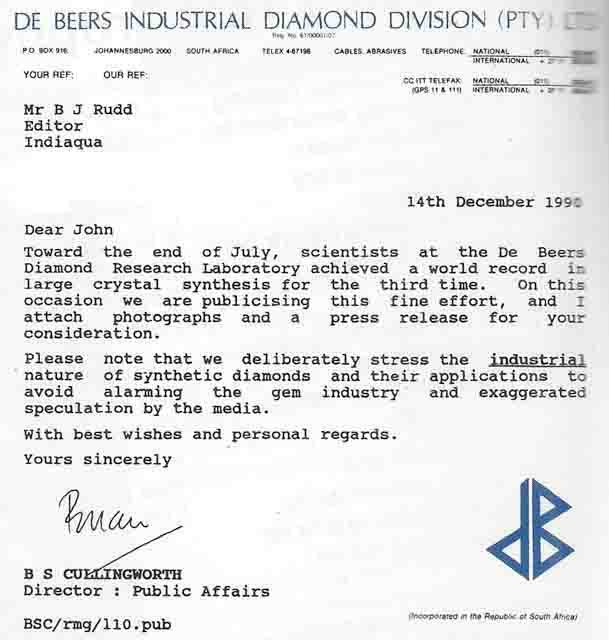
1990
Pacini Ltd, Isle of Man.
Six high-pressure, high-temperature presses were installed for the synthesis of larger single crystal diamond for the Monocrystal range (Diamanx Products).
In the same year, a new development project for the chemical vapour deposition of diamond coatings (DIAFILM) was added (International Diamond Products).

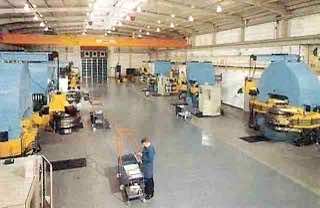
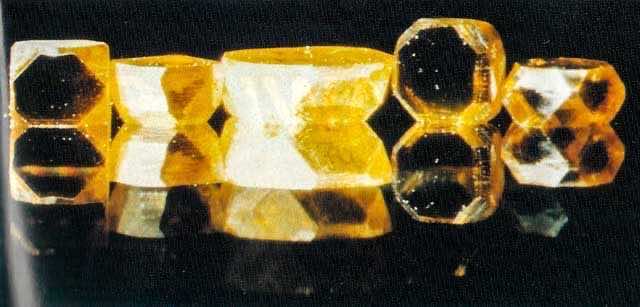
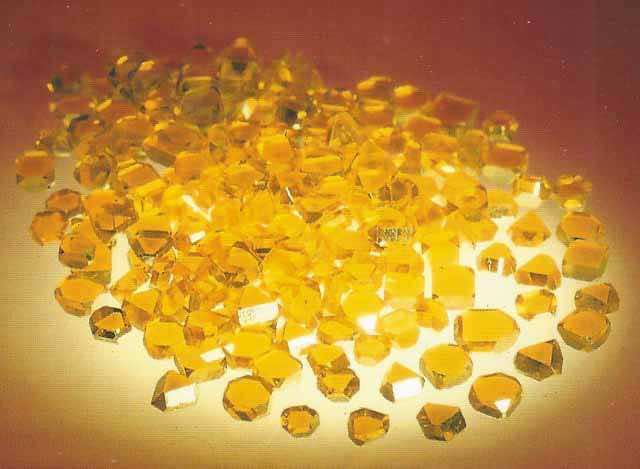
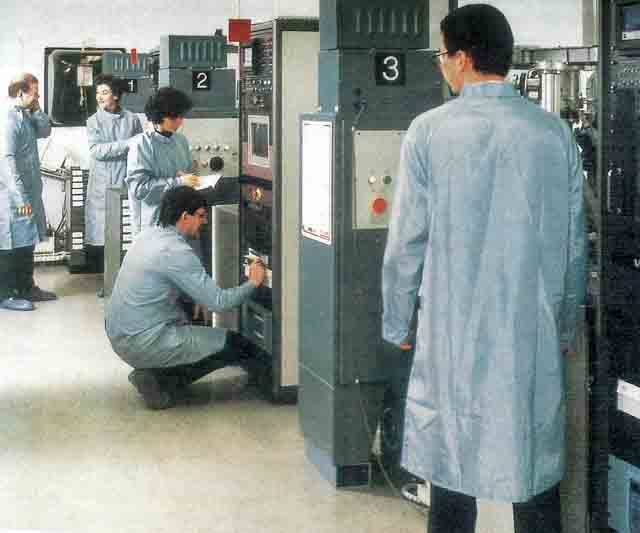
1990
Debid capsules are used over the years - system size from 25 mm to 132 mm.
Productivity increases dramatically by using larger presses because of the increase in compressed cell volume (V = πr2h). However, the limitation is the system that confines the pressure, in particular, the life (number of cycles) of the high cost cemented tungsten carbide die and anvils.
In 1990, SDA sales represented 2/3rds of total revenue.

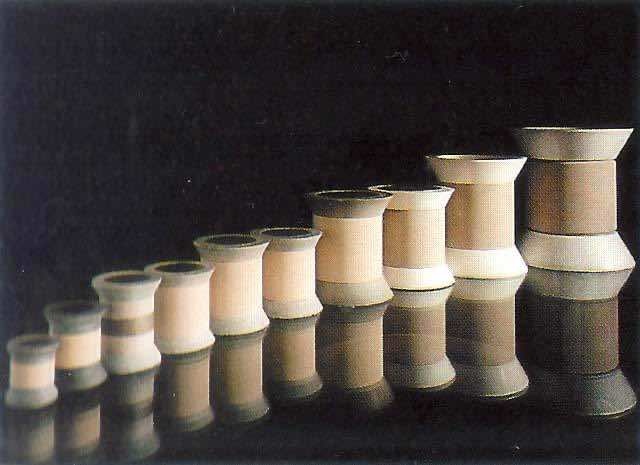
1990
De Beers Group was split into two basic parts, De Beers Consolidated Mines Limited and De Beers Centenary AG (Centenary). The former is a South African holding company controlling the group’s South African assets; the latter is a Swiss registered holding company controlling De Beers interests outside South Africa. The two share identical boards of directors and their stock is traded as a linked unit.
Centenary agreed to make a secured advance of US$1 billion to Glavalmazzoloto USSR against future rough diamond deliveries. The 5 year sales contact had an estimated value of US$5 billion.
Photograph shows Nicky Oppenheimer (Deputy Chairman) and Valery Roudakov.

1990
In financial terms, the most important by far of the applications of diamond is in jewelry. 1990 sales of newly mined rough gem diamonds probably amounted to a figure between US$4.5 and 5 billion. The value of the industrial diamonds sold in the same year was an order of magnitude lower, at US$500 million. The major part of this was abrasive grit, about 90% synthetic and 10% natural.
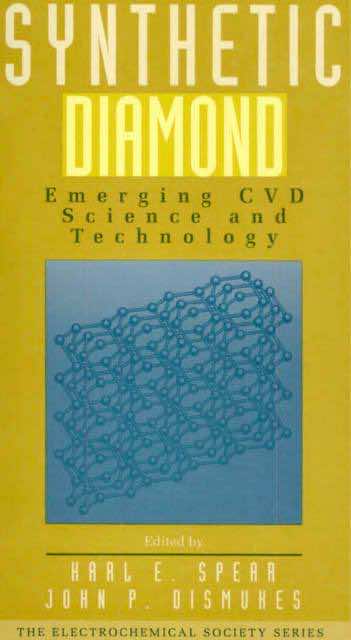
1990
'Diamond Sources and Production: Past, Present, and Future'.
By combining all the production of all the diamond producing countries, it is estimated that the total production of diamonds, both gem and industrial, from antiquity through 1990 is 2,250,000,000 carats (450 tonnes).
Map shows archons where economical diamond-bearing kimberlites are found.
1990
Bank of China tower Tower was completed in Hong Kong. Some of the triangular frameworks form a DB logo.

1992
Headquarters of Debid moved to Ormonde, Johannesburg, close to the Diamond Research Laboratory.
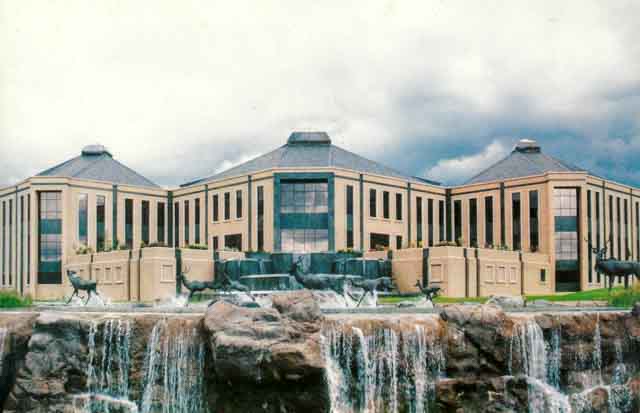
1992
Mixalloy, which produces strip-based products for synthesis, commissioned a new factory in Hawarden, Wales.
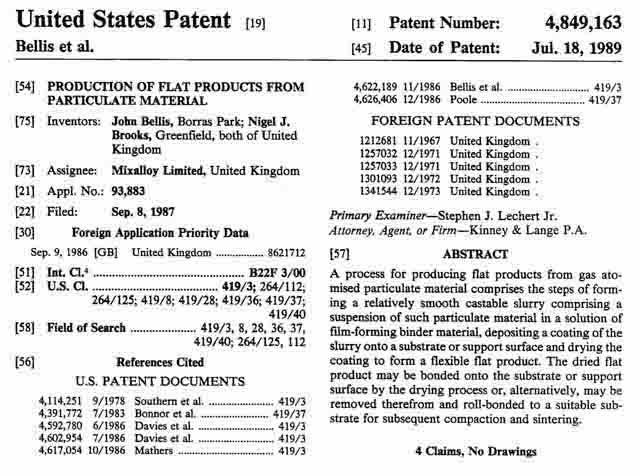

1993
The International Materials Conference was held in Zhengzhou, China, with discussions led by Laurence Lau.

1993
Last Indiaqua.
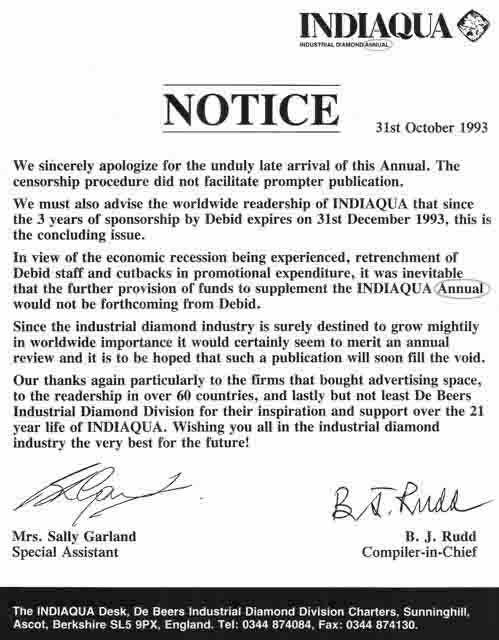
1994
PremaDia Series launched with 3 property indicators for grinding grit.
Photograph shows the PremaDia team - Malcolm Bailey and Miriam Brennan.

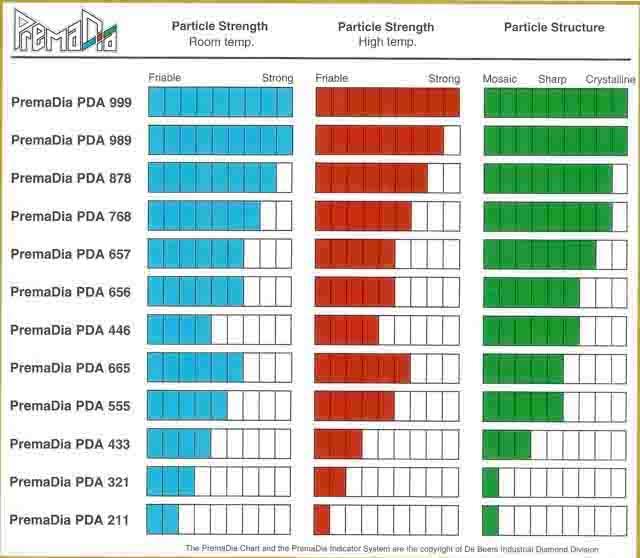

1994
The technical cost modelling analysis of HPHT diamond grit manufacturing costs over the past thirty years has led to an estimate of about US$0.25 / carat for current manufacture, with the possibility to reduce this to US$0.15 / carat with further evolution of the manufacturing technology (not all of this diamond is of saleable quality). The lower bound values of manufacturing cost for CVD deposition technologies lie in a very narrow range from about US$2.00-2.75 / carat. Even taking into consideration anticipated experience curve effects in equipment and labour, the energy component and the materials component appear to set an ultimate lower limit of about US$0.40-0.75 / carat for CVD techniques. Hence, without a major scientific breakthrough, manufacture of CVD diamond grit at costs competitive with HPHT diamond grit appears to have a low probability.


1996
De Beers Industrial Diamond Division, through its Megapode unit, acquired Winter“s super-abrasive distribution business in Germany, as well as Winter's joint ventures in other countries (including synthesis using a mixture of graphite and catalyst powder with some with micron diamond seeds mixed in).
Winter (Ernst) & Sohn agreed to sell nearly all of its operations to Saint-Gobain, the French glass producer and a unit of De Beers Centenary AG. The French company said it acquired the world-wide production and distribution of super-abrasive tools, including a majority stake in Winter USA and stakes in various joint ventures held by the Winter group.
Winter group retained a minority stake in Winter USA and its entire Winter do Brazil unit.

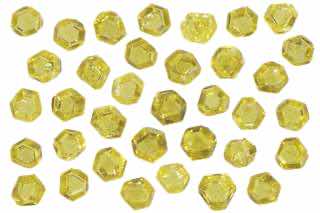
1996
SDB 1000 Series saw grit launched and manufactured using a powder nickel based alloy during synthesis.

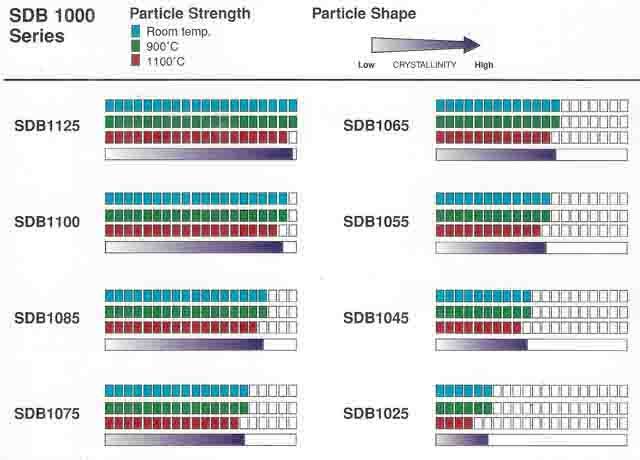
1996
Two instruments developed at De Beers DTC Research Centre, Maidenhead, to distinguish synthetic diamonds from natural diamonds.
DiamondSure enables the rapid examination of large numbers of polished diamonds. It is based on the presence or absence of the 415 nm line, which was found in more than 95% of natural diamonds tested but has not been found in any synthetic diamonds.
DiamondView produces a fluorescence image of the surface of a polished diamond, from which the growth structure of the stone may be determined. Synthetic diamonds are identified by their distinctive growth-sector structure, whereas natural diamonds show either purely octahedral growth or a combination of octahedral and cuboid growth.
The development of these instruments ensures that synthetic diamonds of cuttable quality can be easily identified. With such tools, available to members of the gem trade, the existence of such synthetics should not be a cause of major concern.
Photographs show DiamondSure and DiamondView (with PC).
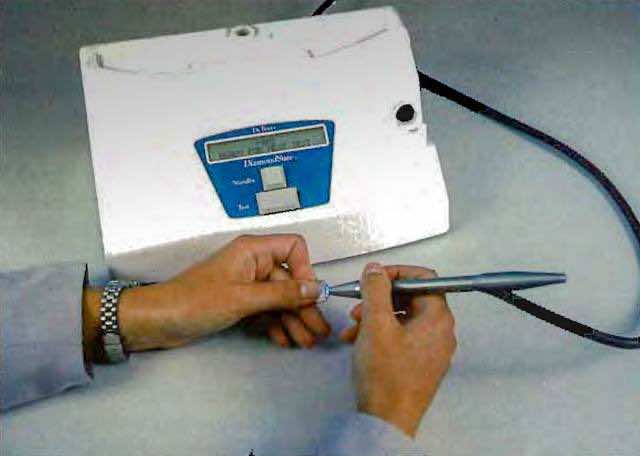
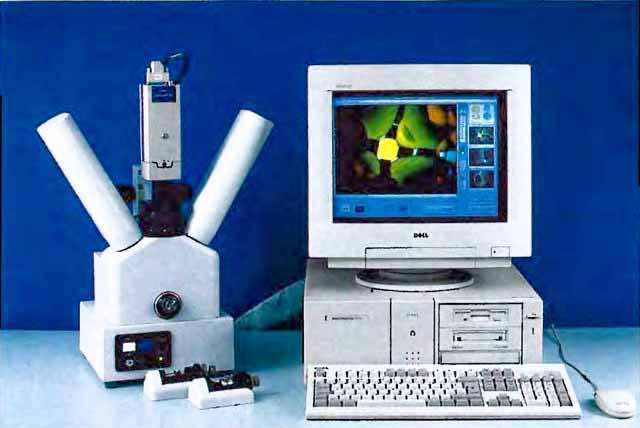
1999
The concept that brown colour might be related to lattice imperfections led to a technique to convert brown diamonds into more valued light-yellow or even colourless ones. The diamond is subjected to high pressures of 6–10 GPa and temperatures above 1600 °C, conditions which anneal defects. The technique has been demonstrated in several research laboratories in Russia and the United States.
In March 1999, Pegasus Overseas Ltd (POL) from Antwerp, Belgium, a subsidiary of Lazare Kaplan International, started marketing such diamonds that were processed by General Electric (GE). These diamonds received the name GEPOL. The existence and identity of the treatment process was considered so important that micrometer-sized letters 'GE POL' were inscribed, with a laser, on the girdles of every treated diamond - easily removed by polishing.

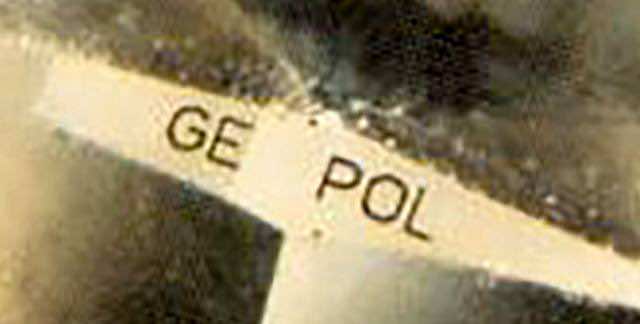
Photographs show diamonds before and after annealing.
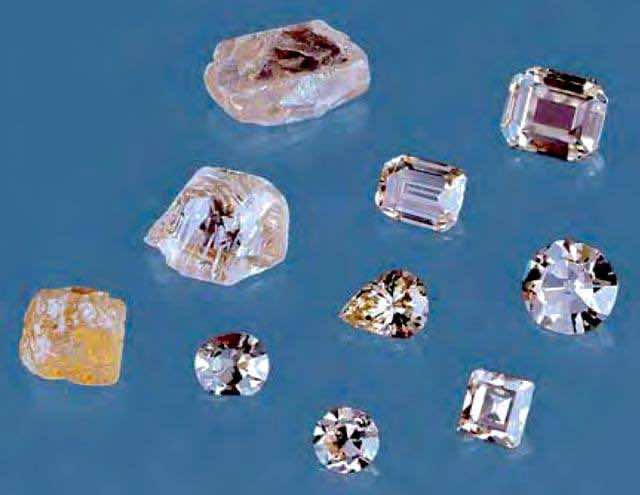
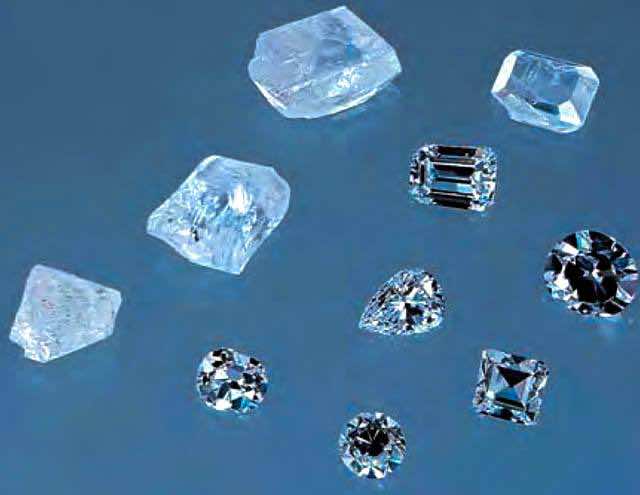
2000
Norton Diamond Film exited the business of selling CVD-diamond coated round tools.
The company instead focused on using its substantial CVD reactor resources to produce products for cutting tool and grinding applications, plus diamond products for heat spreading and optical applications.
The decision to drop diamond-coated carbide end mills, routers, and drills, which have proved effective in machining composite materials and other non-metallics, was purely an economic one. It simply made no sense to run the company's million-dollar CVD reactors to coat tools at US$50-60 per tool when the same resources could be used to produce diamond wafers.
Photograph shows CVD thick-film diamond tooling.

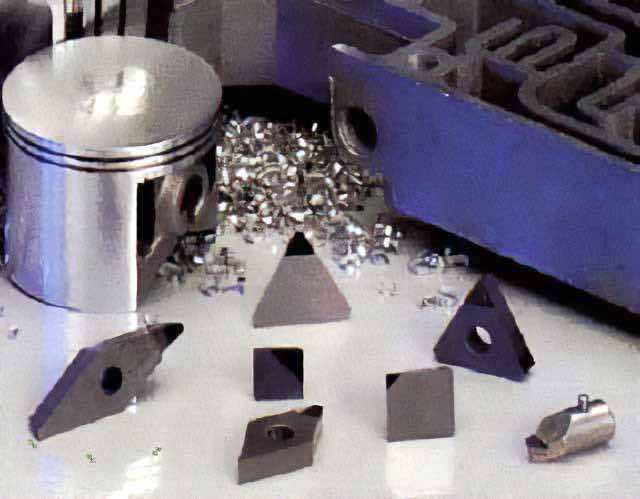
2001
De Beers reaffirmed its commitment to its home country, South Africa, by establishing the world’s largest synthetic-diamond manufacturing plant in Springs.
The Oppenheimer Research Centre is situated next to this plant which was built after Debid closed down its synthetic-diamond unit in Shannon, Ireland, and diverted a production plant in Germany to the expanded factory in Springs.
The combination creates one of the most powerful industrial-diamond making facilities in the world, which can respond quickly to new developments in the multibillion-dollar diamond business.
Photographs show the new Oppenheimer Research Centre and the old DRL (8 buildings on 14,000 m2).
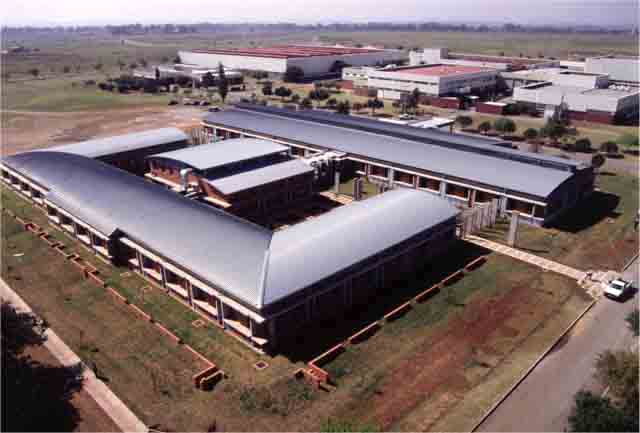
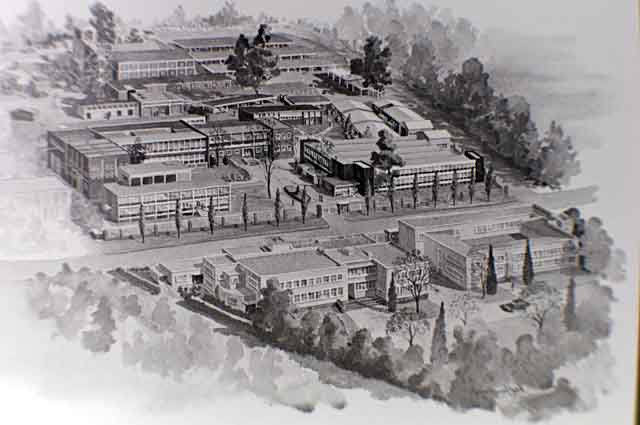
2001
De Beers entered the retail sector in a joint venture with French luxury goods company Louis Vuitton Moët Hennessy (LVMH) to create the independently managed De Beers Diamond Jewelrs. The first De Beers retail store opened in London, selling high-end jewelry and competing with the likes of Tiffany and Cartier. The duo aim to make waves in the world’s retail jewelry market, which currently spends a mere 1% of sales revenues on marketing – versus 10% spent by luxury goods retailers and manufacturers.
The new stores, says De Beers chairman Nicky Oppenheimer, will create a more competitive market for diamond jewelry, selling De Beers-branded diamond baubles and related luxury items.
2002
Following a review in 2000, it became clear that it was no longer appropriate to sell industrial diamonds under the same brand as gem diamonds.
De Beers Industrial Diamond (Debid) rebranded as Element Six.
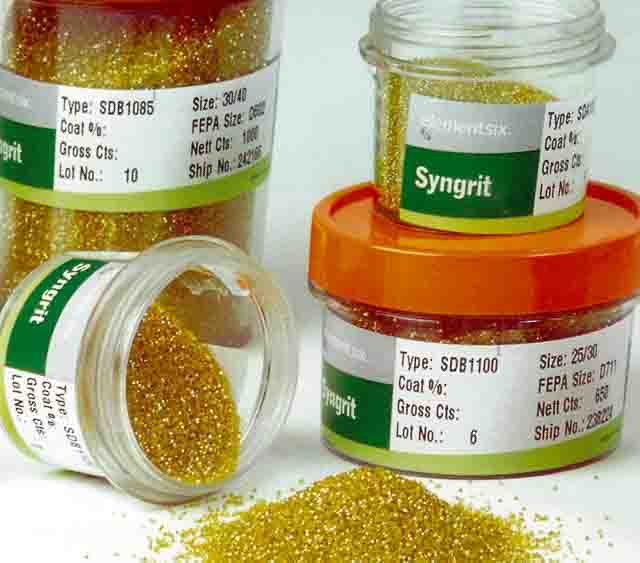
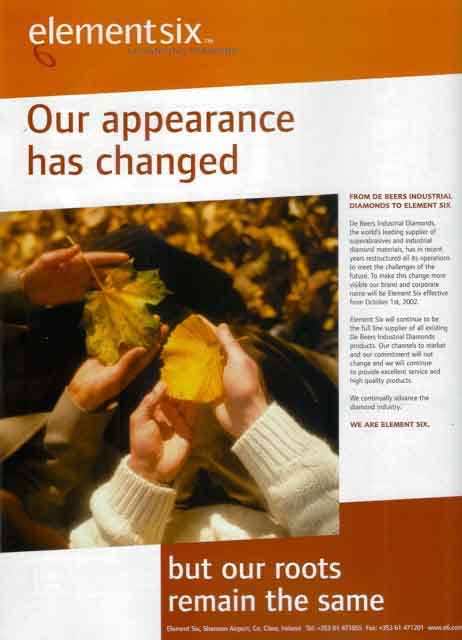
2002
Charters was sold to a residential developer, application research moved to the Element Six factory in Shannon.

2002
Historically, De Beers used its diamond stockpiles to curtail price volatility—increasing supply in times of shortage and building stockpiles in times of weak demand. Following its change in strategic direction, however, De Beers sold off most of its inventory from 2002 to 2007 and no longer had the ability to play this role.
2003
Bit industry used US$155 million of PDC, about 60% coming from the major suppliers and 30% from captive sources - some oil well bit companies explored backward integration and acquired HTHP presses, some PDC suppliers concentrated on a few bit companies.
Chart shows the increase in PDC bit usage from 1980.

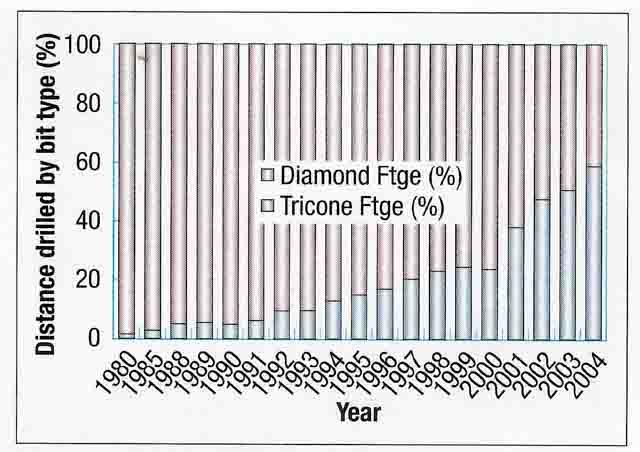
2003
Littlejohn & Co., a private investment organisation, and GE announced that they have entered into a definitive agreement for Littlejohn Fund II, L.P. to purchase GE Superabrasives, including a manufacturing facility in Worthington.
Littlejohn & Co. is a private equity firm that makes control investments in mid-sized companies undergoing change; either in capital structure, strategy, operations, or growth.


2003
Syndite CTM302 launched. The diamond layer contains a mix of diamond particle sizes between 2 µm to 30 µm which increases the packing density - multimodal diamond layers were originally developed for Syndrill.

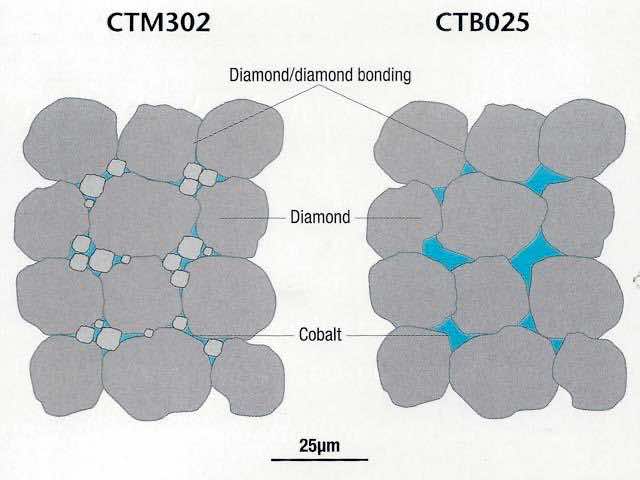
2003
European patent specification - method for altering the colour of a single crystal CVD diamond - proprietor Element Six Limited.

| Initial Colour | Final Colour |
|---|---|
| Dull brown | Near colourless |
| Brown | Near colourless |
| Orange brown | Near colourless |
| Orange brown | Pinkish |
| Brown | Green |
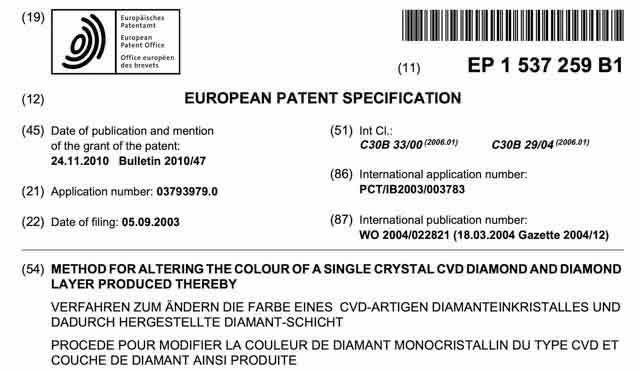
2004
Patent EP1723086B2 - a method of incorporating a mark of origin, such as a brand mark, or fingerprint in CVD single crystal diamond. The mark of origin or fingerprint is not readily detectable or does not affect the perceived quality of the diamond material under normal viewing conditions. The mark of origin or fingerprint is detectable or rendered detectable under specialised conditions, such as when exposed to light or radiation of a specified wavelength.
This patent describes how to grow the mark within the diamond to begin with but also where to place the mark, providing the widest range of marketing options.

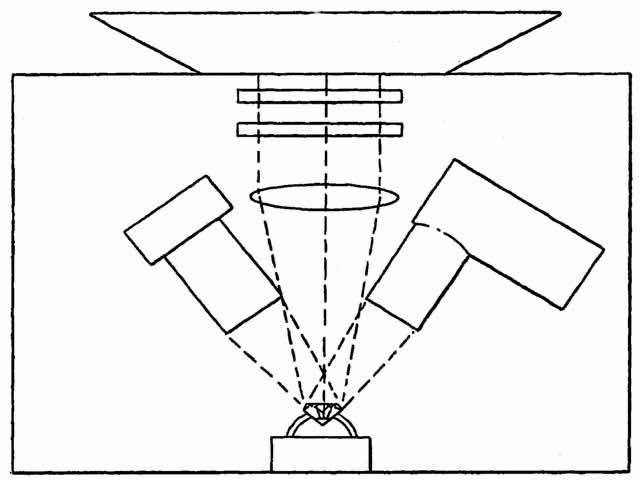
2004
Dover Corporation acquired US Synthetic Corporation. Dover Corporation is an American conglomerate manufacturer of industrial products. In 2005 U S Synthetic sales topped $100 million.
Sundance Diamonds, which sells HPHT diamonds through the Suncrest Diamonds brand, is a division of U S Synthetic. Both companies are located in Orem, Utah.

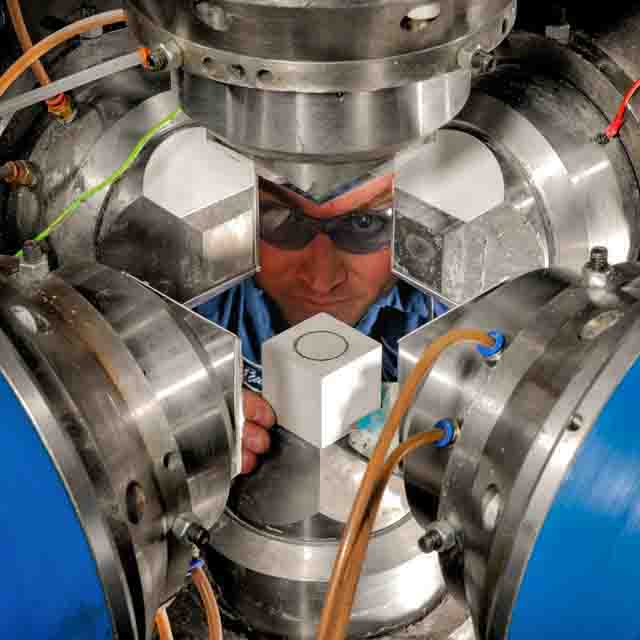
2006
Element Six acquired a majority shareholding of OJSC Poltava Diamond Plant, a Ukrainian diamond synthesis plant which produces resin bond synthetic diamond. Diamond production will be mainly used within Element Six for the processing of polycrystalline products.
Poltava Diamond Plant was established in 1966 as the largest and most important enterprise for industrial diamonds in the USSR. In 1996 the company was privatised by the Ukrainian State Property Fund.


2006
Element Six opened its first manufacturing site in Asia, in the Suzhou Industrial Park, China. Element Six Industrial Diamond (Suzhou) Ltd, which uses Chinese technology, manufactures synthetic diamond for internal use in the production of polycrystalline products.
The diagram shows the 9 locations of Element Six, comprising 2 business segments:
Abrasives 60% De Beers, 40% Umicore
Technologies 100% De Beers.

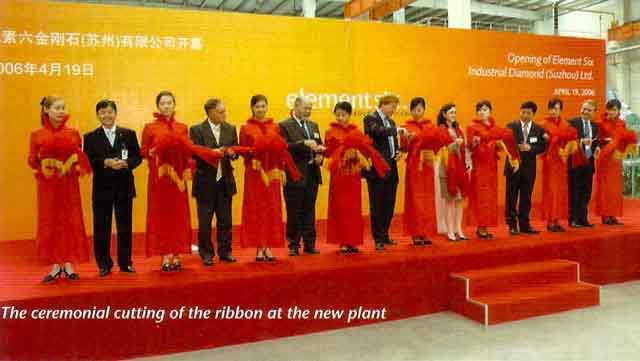
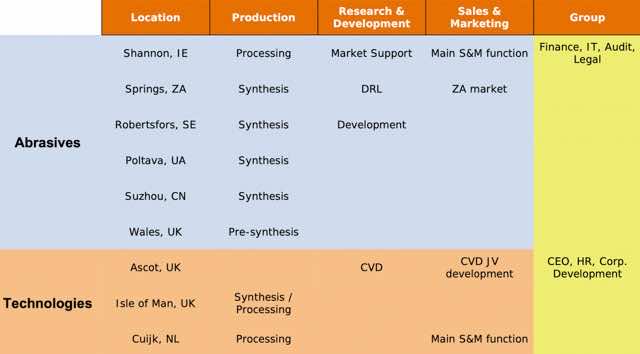
2006
Element Six Hard Materials (Wuxi) Co. Ltd. founded. The company manufactures and supplies a vast range of tungsten carbide inserts of all types, shapes and sizes to a worldwide customer network with countless different requirements.
E6 Hard Materials currently produces 1,500 tonnes of tungsten carbide in its production plants in Germany, South Africa and China. Its head office is in Germany and this is supported by a sales office in the USA.
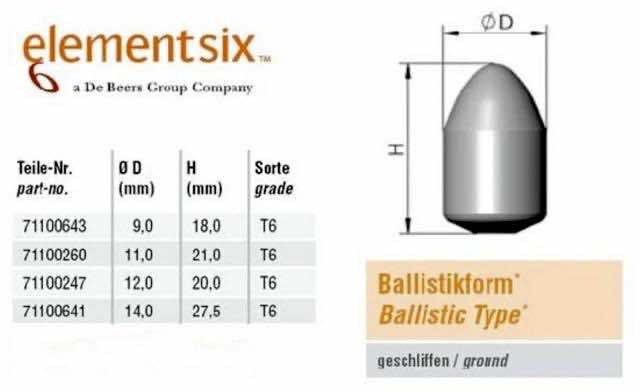
2007
Element Six purchased Barat Carbide GmbH, the former hard materials group of Boart Longyear and expanded its product portfolio to include tungsten carbide parts for soft rock mining tools or as wear parts.

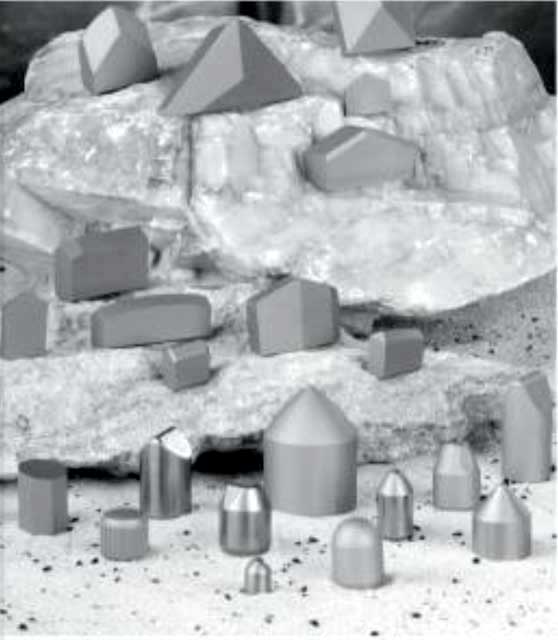
2007
Swedish tool manufacturer Sandvik Tooling acquired Diamond Innovations Inc., the former Superabrasives Division of General Electric Company, in the United States, from the private equity company Littlejohn & Co.
Sandvik was founded in 1862 and is based in Stockholm, Sweden.

2008
The end of Industrial Diamond Review (IDR) after 68 years.
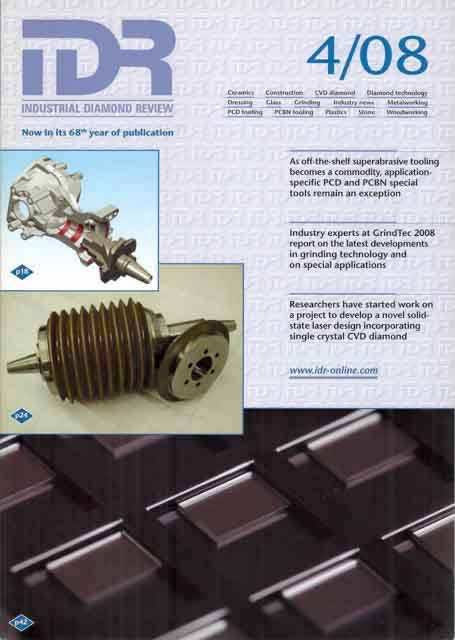
2008
Sundance Diamonds, a division of U S Synthetic, launched a diamond testing service in Israel. The venture identifies if HPHT processing can increase the value of a diamond. Sundance Diamonds has the ability to improve the colour of most low-colour higher clarity (VS and above) diamonds. Natural brown and cape diamonds can be permanently transformed into a variety of colours, from colourless to Fancy Intense yellow, pink and green. The company guarantees the colour of its diamonds for life.


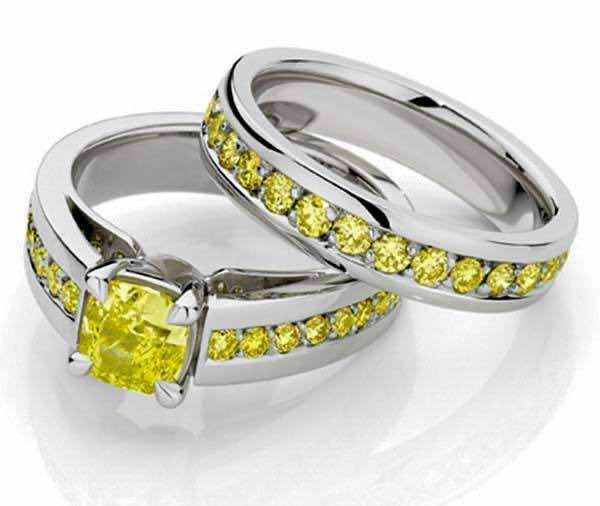
2008
De Beers entered into legally binding commitments with the European Commission to cease purchasing rough diamonds from Russian mining company Alrosa, in order to ensure competition between the two companies.
The predecessor of Russia’s largest diamond company was founded in 1957 in the Union of Soviet Socialist Republics (USSR). In 1992 it was transformed into the joint stock company ALROSA. Key shareholders are the Russian Federation government with 51%, the state government of the Yakutia Republic (32%) and local municipalities (8%). The company’s core business is the production of rough diamonds in Russia and Angola. Alrosa disclosed the size of its resources and reserves to be 1.3 billion carats.
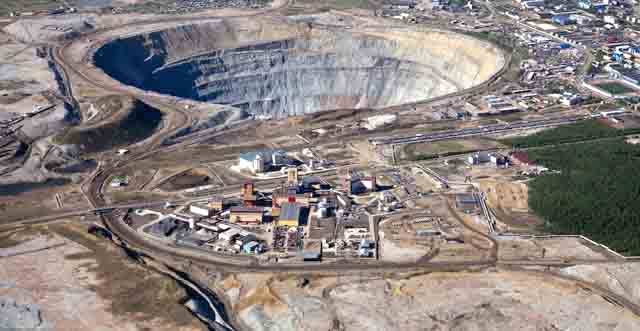
2010
Virtually all industrial diamonds are synthetic, produced mainly in China.
Demand for industrial diamonds is approximately 4.5 billion carats and within this market less than 5% is natural. However, this natural industrial diamond accounts for about 50% of all mined diamonds.
Figure shows synthetic diamond production by country.

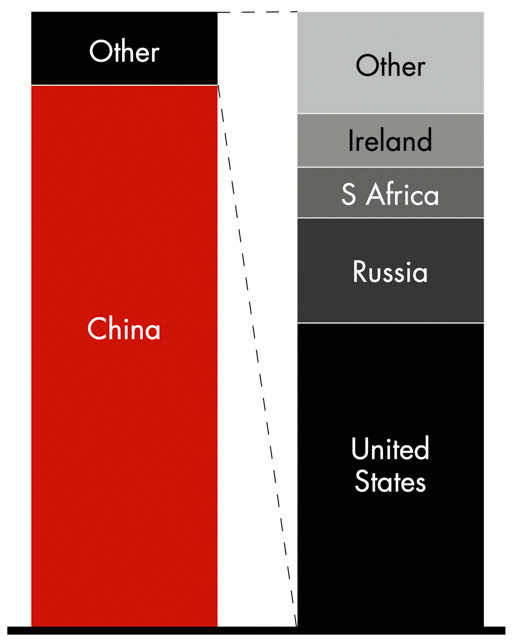
2011
The Oppenheimer family sold its 40% stake in De Beers to Anglo American for US$5.1 billion, marking the end of more than 100 years of involvement in the diamond industry.
The Oppenheimers trace their fortune to the 1917 formation of Anglo American, which later took control of De Beers, where Nicky Oppenheimer was chairman from 1998 to 2012.
Following the sale of the family’s stake in the diamond firm, Oppenheimer Generations was created.

2012
Element Six acquired US-based Megadiamond's cutting tool business from Schlumberger to become the largest supplier of abrasive supermaterials for the Automotive and Aerospace sectors.
2012
D-Power PCD road pick range launches in Europe, capable of extending road pick life by up to 40 times compared to a standard pick.
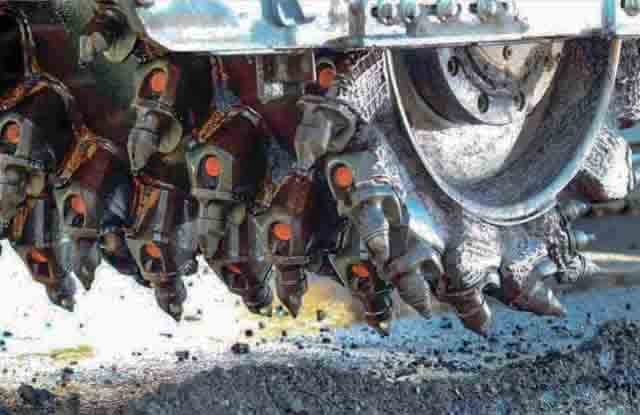
2013
Element Six opened a Global Innovation Centre (GIC) near Oxford, England.
Facilities at the GIC include modelling and design, materials preparation, a HPHT synthesis press hall, Chemical Vapour Deposition reactor synthesis labs, post-synthesis processing (polishing, cutting, shaping), materials analysis / characterisation and end application testing.


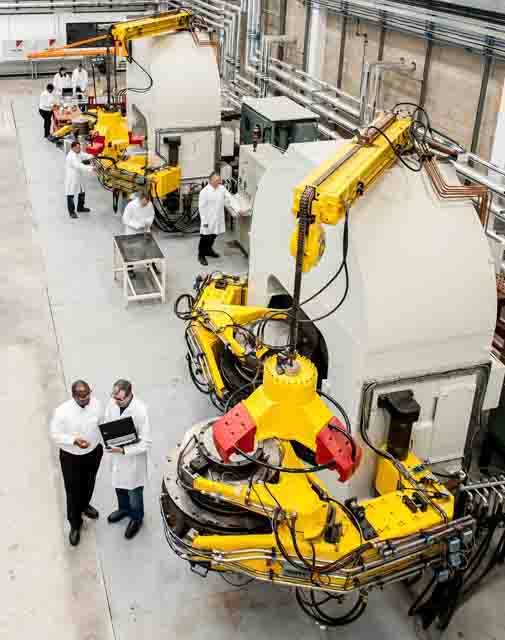
2013
Element Six opened a CVD development and high-volume manufacturing facility in Santa Clara, California.


2014
The De Beers Group of Companies’ International Institute of Diamond Grading & Research (IIDGR) unveiled the new Automated Melee Screening machine. The device can run through 500 carats of melee stones at once, using a spectrometer-based system that screens round brilliant diamonds from 0.01 carat to 0.2 carat for potential synthetics.
Manufacturers do not want to call diamonds synthetic because of that word’s connotation of falsity. Natural diamond producers are pushing for laboratory-grown to ensure full disclosure to consumers and to enhance the distinction of their mined product.
Synthetic sapphires have been produced artificially for a century, but their availability has not dampened the demand for natural sapphires, which are still mined in about the same quantity as diamonds.
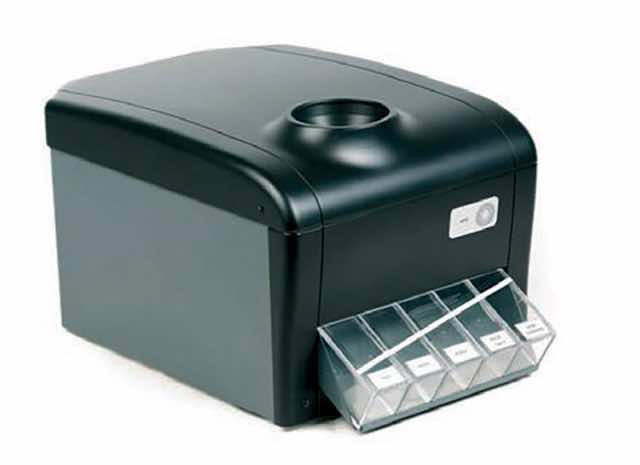
2014
Residual stresses and stress transients in PDC were numerically predicted for different pressure and temperature manufacturing conditions. Results showed maximum tensile and compressive stresses of about 500 MPa and −125 MPa, respectively. However, stress transients during the manufacturing process were up to 2 to 3 times higher, depending upon how pressure and temperature are removed following the sintering process. Rapid cooling and pressure removal result in high stress transients and vice-versa. These transients can lead to the formation of micro-cracks and delamination of the polycrystalline diamond layer from its substrate. On the other hand, lower cooling rates and gradual pressure removal offer low stress transients and a favourable final residual stress-state of the PDC.
Diagram shows the magnitude and distribution of residual axial and radial stresses in the diamond layer and tungsten carbide substrate mid-way through the cooling process (700 s).

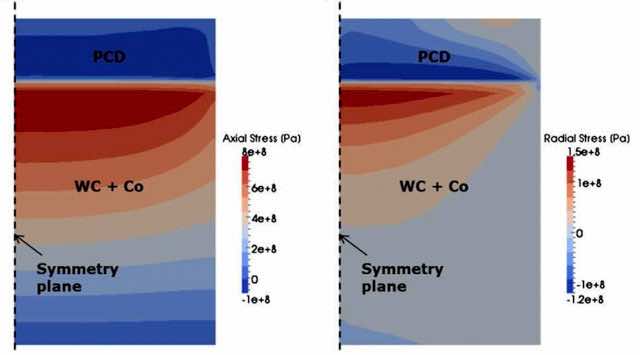
2015
In 2004, PDC bits accounted for approximately 50% of the revenue in the bit industry and nearly 60% of the footage drilled. Growth continued, and it’s estimated that PDC bits comprise 75-80% of the market and drill more than 90% of the footage. PDC bits are now used in most North American drilling applications.
The impact on the drilling industry has been dramatic, with wells taking a fraction of the time to drill, compared with 20-30 years ago. This comes from a rate of penetration (ROP) five to ten times that of older drill bits.

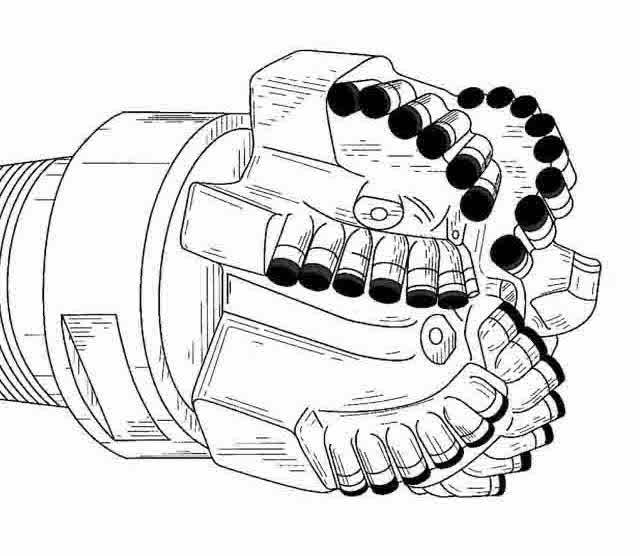
2016
Anglo American, in its annual report, concluded that 'technological developments are making the production of man-made gem synthetics commercially viable and there are increased distribution sources. The marketing of synthetics seeks to place them as being environmentally or socially superior'.
Anglo American summarises the impact of synthetics on the natural diamond business as representing a 'potential loss of polished and rough diamond sales leading to a negative impact on revenue, cash flow, profitability and value'. Any consumer buying a lab-grown diamond is a consumer who did not buy a natural diamond.
2016
Scandiamant AB, Robertsfors, Sweden closed.


2017
Element Six closed the facility on the Isle of Man.


2017
Diamond electrode cells use solid boron doped diamond (BDD) to give small to medium volume wastewater treatment systems a transformative increase in efficiency and capability.
• Effectively treat effluents that are otherwise difficult or impossible to tackle with conventional means.
• Allow discharge of treated water directly from site.
• Avoid the need to use UV and chemicals.
Photograph shows bipolar electrochemical cells.


2017
LVMH reached an agreement to sell its stake in the De Beers Diamond Jewellers (DBDJ) joint-venture company to its equal-share partner, De Beers. DBDJ is a UK-incorporated company, in which both partners hold a 50% stake. It was set up in 2001 to allow LVMH to strengthen its position in the jewelry business, by establishing and managing the De Beers jewelry retail chain, while the South African group would in turn be able to exploit the French luxury group's huge distribution network.

2018
De Beers Group launched a new company called Lightbox jewelry that markets a new brand of laboratory-grown diamond jewelry under the Lightbox name. Lightbox will be the only brand to source lab-grown diamonds from De Beers Group’s Element Six business.

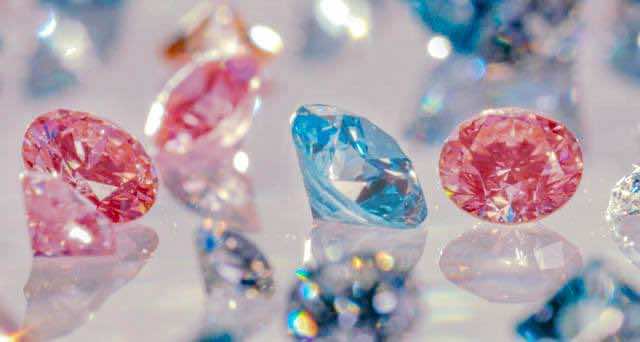
2018
Tracr is a technology platform developed by De Beers Group to underpin trust in natural diamond provenance. First launched in the R&D phase in 2018, it provides tamper-proof source assurance at scale, enabling rough diamond customers to provide a record of a diamond’s provenance.
2018
Most manufacturers grow CVD layers quickly, with a brown colour, knowing that they can be HPHT treated to improve colour appearance after growth. D-N colour equivalent CVD-grown diamonds seen at GIA from 2007 to 2018 were analysed.
The majority (74%) show features consistent with post-growth HPHT treatment with 79% in the colour range D-F undergoing HPHT treatment.
Coating is not used anymore and laboratories do not issue certificates for these types of treated diamonds.


2019
Chinese producers of both HPHT and CVD synthetic diamonds formed a sub-association under the Gems and Jewelry Trade Association of China.
China is the world’s largest producer of HPHT synthetic diamonds, with an output of more than 5 million carats of gem-quality material in 2018. The quality of Chinese CVD synthetic diamonds has improved significantly. Compared to early products, current CVD synthetic diamonds grown in China are larger and more pure and are available in a wider range of colours.
Photograph shows HPHT rough diamonds (left) and CVD rough diamonds (right).

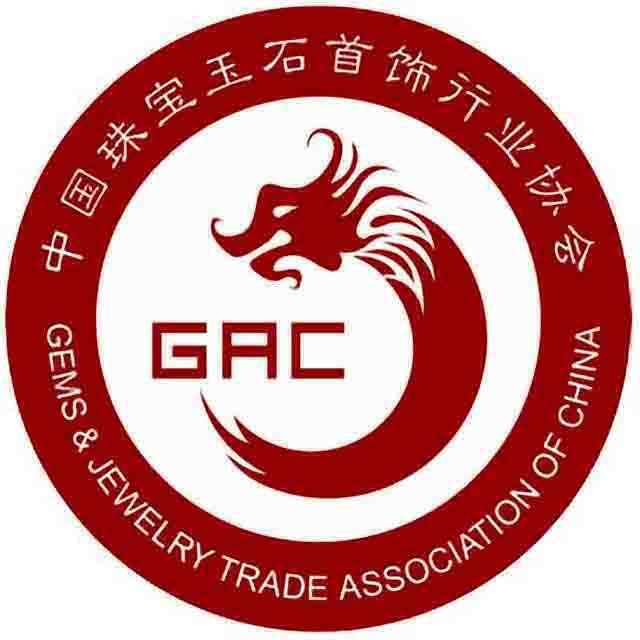
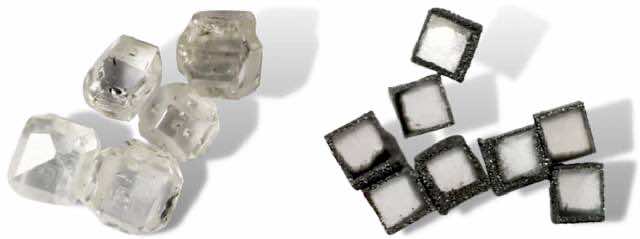
2019
China produced 15 billion carats (3,000 tonnes) of synthetic diamond. The top 3 producers were; Zhongnan Diamond, Henan Huanghe Whirlwind and Zhengzhou Sino-Crystal Diamond.
Synthetic diamonds are largely used for materials processing, of which 63% are found in stone and building materials processing, roughly 15% in the electro-mechanical industry, around 2% in geological drilling and the remaining in fields like aerospace, military & defence, medical testing and treatment, electronics & electrical appliances, and high-end equipment manufacturing.

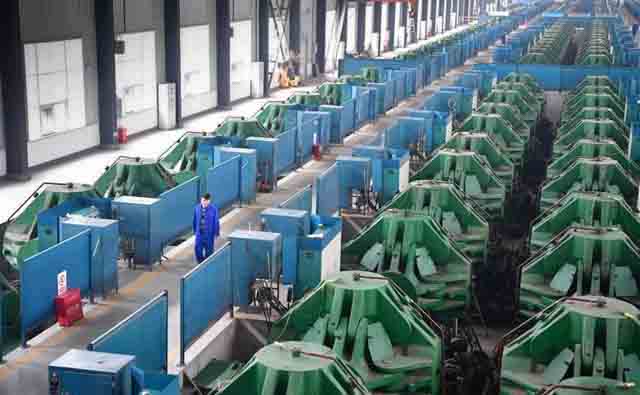
2020
Sixteen lab-grown diamond colours introduced by Swarovski, all cushion cut (a square cut with rounded corners), between 0.25 and 1.5 carats. The colours range from intense yellow (Draped Fire) to black (Disco Ink).
Swarovski, which started with colourless lab-grown diamonds in 2017, grows its diamonds mainly in the United States and Asia. It uses both chemical vapour deposition and High Pressure-High Temperature, which is generally used to grow coloured diamonds.
Many of the coloured diamonds require treatment, HPHT annealing and irradiation, post-growth. For different colours, different parameters and sequences of these treatments apply.

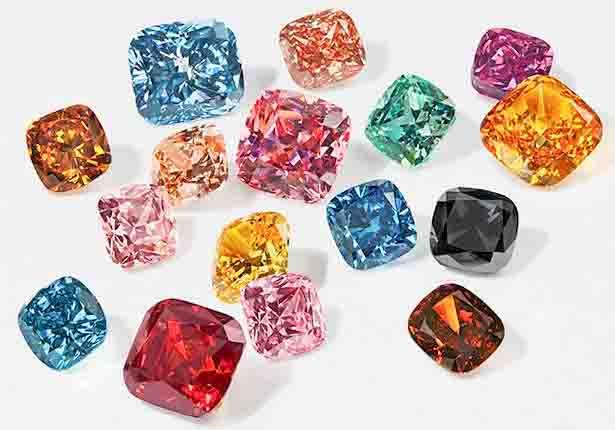
2020
The International Gemological Institute’s (IGI) Hong Kong laboratory certified the largest chemical vapour deposition (CVD) laboratory-grown diamond received to date.
With a finished weight of 12.75 carats, the diamond was fashioned from a 46.20 carat CVD-grown rough crystal.
IGI gemologists confirmed the stone was Type IIa, giving it exceptional chemical purity and transparency, with F colour and VVS2 clarity.
According to its creator, Shanghai Zhengshi Technology, it is the largest CVD lab-grown diamond ever produced.



2020
Element Six, De Beers’ lab-created diamond manufacturing division, which supplies Lightbox Jewelry, opened a new factory in Oregon, a region with cheap electricity. The new facility will support Lightbox’s recent introduction of white, pink and blue lab-created diamonds up to 2 carats and will produce 500,000 carats of rough (generating 200,000 carats of polished).
Lightbox diamonds are priced at US$800 per carat, or US$1500 for Lightbox Finest (no globally set prices for natural diamonds exist).
Stones in the standard category are near colourless (G to J ) and have VS clarity. Finest stones are colourless (D, E, or F), VVS clarity and have an excellent cut. Standard pink and blue diamonds receive electron-beam enhancement, while the pinks are also heat treated. Lightbox’s standard white stones, under 1 carat, do not receive any such treatment. The colour of Finest is improved through HPHT annealing.
The factory uses an average of 380 kWh of power to grow each polished carat (power comes from renewable sources).




2020
Lab-created diamond production reached 6–7 million carats, according to The Global Diamond Industry 2020–21: Brilliant Under Pressure, a report authored by Bain & Co.
Bain & Co. estimated 111 million carats of natural diamonds were produced in 2020, largely as a result of the COVID-19 pandemic; between 2010–2018, global production averaged approximately 130 million carats, with a peak of 152 million in 2017.
However, production capacity continues to rise, with the report noting a double-digit increase in 2020 compared with 2019, and a 15-20% increase between 2018 and 2019.
This growth is largely driven by expanded production in China, where the majority, approximately 50 to 60% of the world’s lab-created diamonds are manufactured, using the high-pressure, high-temperature (HPHT) method.
Photograph shows Chinese HPHT diamonds, 3 to 4 carats.

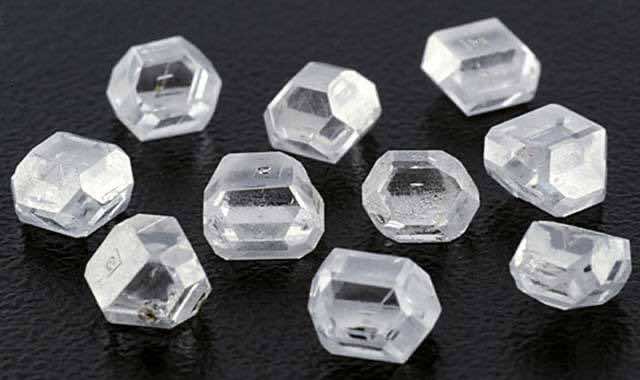
2021
Top 5 natural diamond producing countries:
• Russia - 39 million carats
Alrosa is Russia's largest diamond miner, maintaining a virtual monopoly over the sector and producing over 90% of the nation's annual output.
• Botswana - 23 million carats
The 2 most significant of the 7 mines in the country are Orapa and Jwaneng. De Beers discovered the Orapa mine in 1966.
• Canada - 18 million carats
Most of Canada's diamonds are mined in the Northwest Territories.
• Democratic Republic of the Congo - 14 million carats
A JV between Sibeka and the DRC government, is the only commercial diamond producer. De Beers markets about one-third of Sibeka's production and holds a 20% stake in the company.
• South Africa - 10 million carats
Diamonds were discovered below ground in hard rock, called blue ground.
Photographs show a map of Southern Africa diamond mines and the Koffiefontein mine in South Africa.
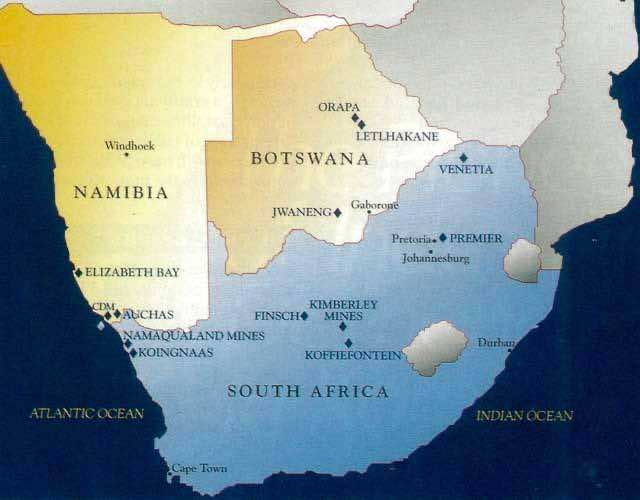
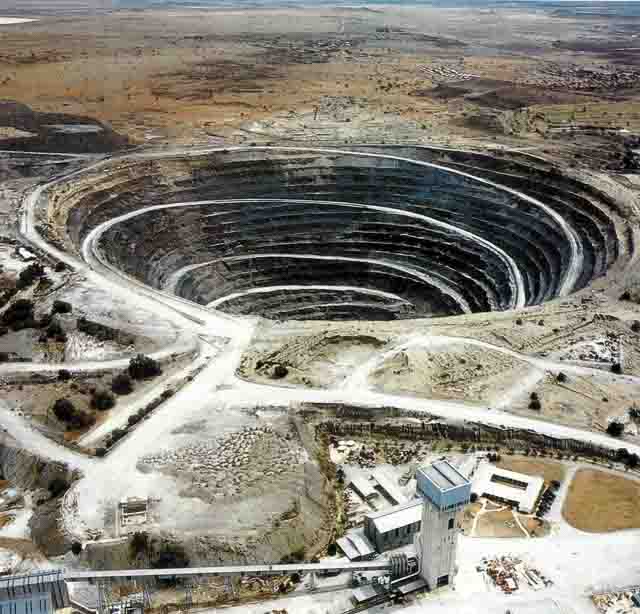
2021
Pre-tax profits at the Irish arm of industrial diamond manufacturer, Element Six, declined by 76% to US$5.22m last year due to the impact of the Covid-19 pandemic. Revenues declined by 28% at the Shannon-based firm from US$217.6m to US$159.3m in the 12 months to the end of December last.
The company is currently celebrating 60 years in Shannon and has invested €16m in the Shannon site since 2017 creating 100 jobs. Over the next 3 years, Element Six is to embark on further significant infrastructure programmes aimed at paving the way for the site’s future and improving the overall operational efficiency at its Shannon facility.

2022
De Beers implemented its biggest price increase for diamonds in years as the industry consolidates its recovery from the first pandemic-induced shutdowns.
The Anglo American unit raised prices by about 8% at its first sale of the year, according to Bloomberg. The sharpest increases of up to 20% were for smaller, cheaper stones.
(The company increased the price of its rough diamonds throughout much of 2021 as it sought to recover from the first year of the pandemic).
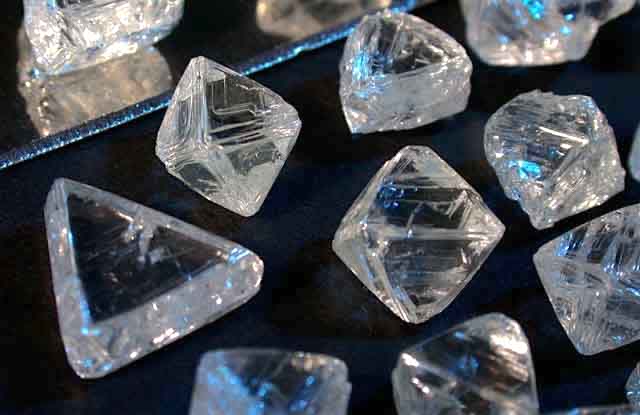
2022
The Enigma, a black carbonado diamond, believed to be the world's largest cut diamond, was sold for US$4.3m. It weighs 555.55 carats and has 55 facets.
The shape of the diamond was inspired by the Middle-Eastern palm symbol of Khamsa, that stands for strength and protection. In Arabic, Khamsa means 5, there is a theme of the number 5 running throughout the diamond.
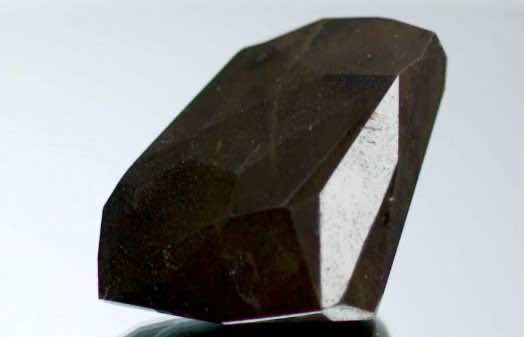
2022
The International Gemological Institute (IGI) analyzed and graded a 30.18 carat emerald cut laboratory grown diamond, the first polished lab grown diamond to exceed 30 carats. Produced by Ethereal Green Diamond and grown using a CVD process, the diamond was graded H colour and VS2 clarity.
The type IIa rough crystal from which it was processed took approximately four weeks to grow.



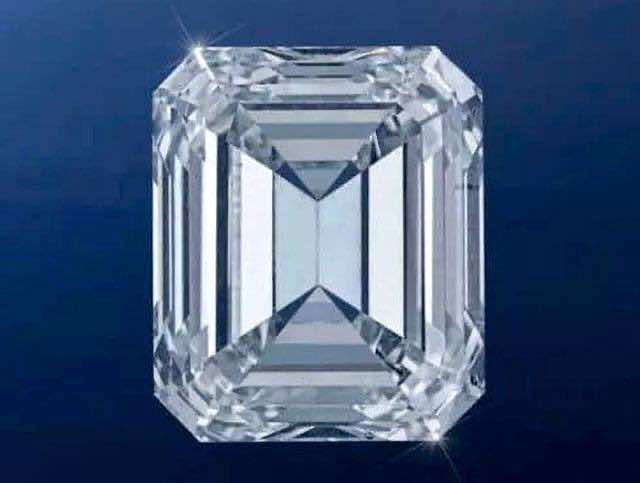
2022
The IGI announced it had seen a record-setting lab-grown blue crystal piece of rough which weighs 150.42 carats and measures 28.55 mm x 28.25 mm x 22.53 mm. This is believed to be the largest lab-grown diamond ever produced, to date! The diamond was grown in Ukraine, using HPHT, by Meylor Global. The company is working on a 200 carat diamond.

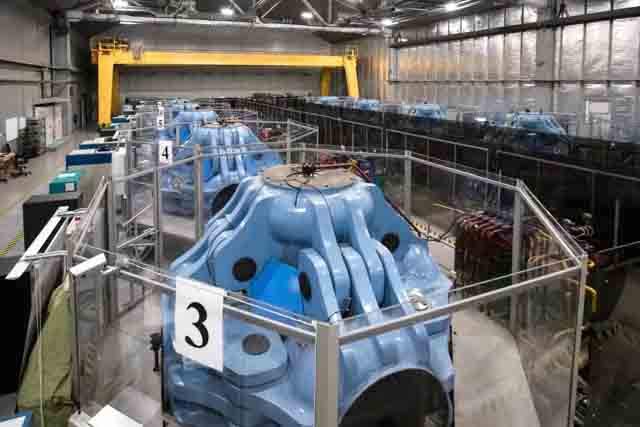

2022
Louis Vuitton Moët Hennessy (LVMH) acquired a major stake in Israeli lab-grown diamond start-up Lusix. The investment will be used to fund the construction of a solar-powered diamond facility in Israel.
Photograph shows Lusix’s 100 acre Solar Farm, located in Southern Israel.


2022
Diamond market analyst Paul Zimnisky forecasts 2022 lab-grown jewelry sales at US$9-10 billion, accounting for more than 10% of total global diamond sales.
Branding and proprietary design and custom shapes and colours will be essential for producers who want their product to compete as a luxury item. Lightbox recently added baguettes and cushion cuts to its selection of loose lab-grown diamonds, citing consumer desire for custom designs featuring fancy shapes (see photograph).
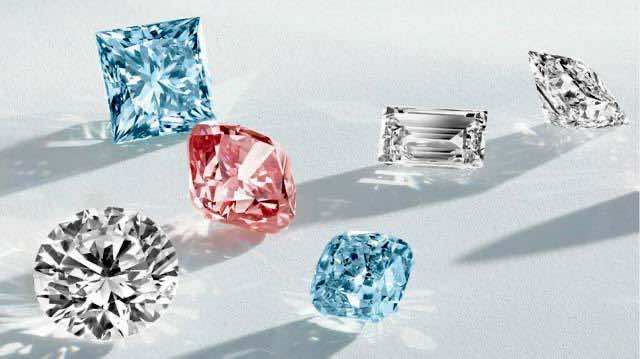
2022
According to India’s Gem & Jewelry Export Promotion Council, provisional gross exports of polished lab-grown diamonds soared 61% year-over-year between April and September 2022, nearing US$1 billion.
It is estimated that India’s natural diamond cutting and polishing factories converted 20% of their production to lab grown due to the shortage of natural rough diamonds from Alrosa.
With 1,000 chemical-vapour deposition (CVD) reactors, Greenlab has emerged as one of the largest growers in India. The company has invested in diamond growing, cutting, and polishing as well as jewelry manufacturing. The total estimated installed base of diamond-growing reactors in India is now 4,500 reactors. In the initial stages, reactors were imported from Japan, Taiwan, Germany and Russia, reactors are now being assembled and fabricated in India.
Photograph - Greenlab’s solar powered CVD diamond growing facility.

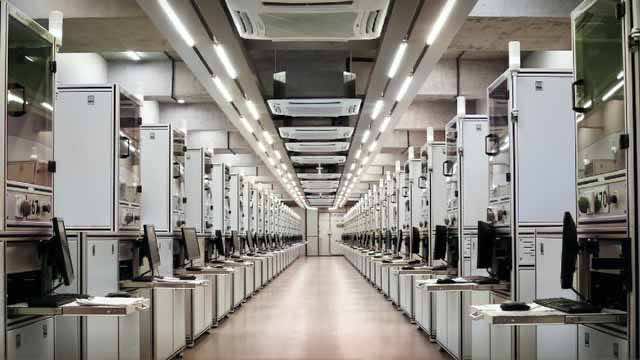
2022
Since its introduction at Bell Telephone Laboratories in 1947, solid state transistors have drastically improved and heat dissipation continues to be important.
A heat spreader transfers energy from a hotter source to a cooler heat sink. The commonest sort of passive heat spreader is a block of material having high thermal conductivity, such as copper, aluminium, or diamond. Diamond heat spreaders can reduce thermal management bottlenecks and achieve lower operating temperatures, improved performance and extended system life in a range of electronics applications. Effective heat removal is a game of heat spreading, with a material of high thermal conductive immediately adjacent to the hot part to give heat the easiest escape path. Diafilm TM220 is the world’s first diamond thermal material engineered to offer industrial users thermal conductivity in excess of 2,200 Wm-1K-1.
In 2022 the diamond heat spreader market size is estimated to be worth US$130 million.
In the diagram, the CVD diamond layer is the primary stage of heat spreading.

2022
The EU imported around €1.4 billion (US$1.5 billion) of Russian diamonds in 2022, according to Europe’s statistics office. This is down from €1.8 billion in 2021 (in 2021, Russia's diamond exports were worth US$4.7 billion, according to data from the Observatory of Economic Complexity).
Some countries, such as Belgium, which buys a significant amount of Russian diamonds, want a 'global approach' to Russian exports, as opposed to EU-specific measures.
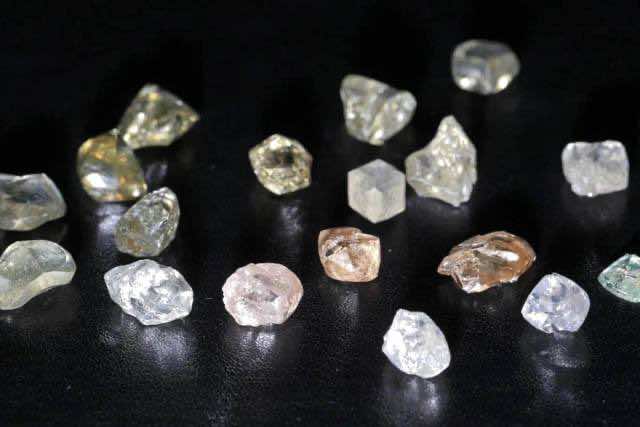
2022
The Diamond Producers Association's (DPA) data shows that the global natural diamond supply has been relatively stable over the past decade, with annual production ranging from a low of approximately 110 million carats in 2020 to a high of around 153 million carats in 2017.
The decline in supply in recent years can be attributed to several factors, including the closure of some mines due to depletion or economic reasons, as well as disruptions caused by the COVID-19 pandemic.
Russia produced more than a third of the World's rough diamonds (carats) and a little over a fifth of its value.
Botswana is the second-ranked diamond-producing country in terms of quantity (carats) mined and the top diamond-producing country by value.
South Africa was ranked fifth both in terms of production (carats) and value.
2023
The entirely digital Laboratory Grown Diamond Report (LGDR) no longer contains information consumers and retailers find less interesting, such as growth methods and post-growth treatments.
Growth method or post-growth treatment information will continue to be included in the full Laboratory Grown Diamond Report.
GIA has also increased the upper range for the service from 1.99 carats to 3.99 carats. All laboratory grown report numbers will continue to be laser-inscribed.
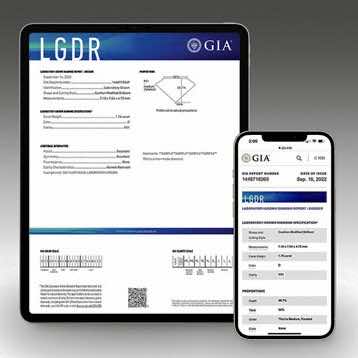
2023
Production of diamond at 13,917 carats decreased by 52% in 2020-21 as against 28,816 carats in the previous year. Of the total output, gem rough and uncut constituted 36% and the remaining 64% was industrial grade. The weight of diamond, in carats per tonne of ore, varies widely from one mine to another but generally falls between 0.3 and 1.3 (ct/t).
The total world production of diamonds decreased by about 22% from 136 million carats in 2019 to 106 million carats in 2020. The principal producers were Russia (29%), Botswana (16%), Canada (14%), Dem. Rep. of Congo (10%), Australia (9%), South Africa (8%) and Angola (7% ). During the year, a decrease in diamond production was observed in Russia, Botswana, Australia and Canada, while an increase in production was observed in South Africa and Zimbabwe.
The major diamond cutting centres are: Antwerp in Belgium, Ramat Gan in Israel, New York in the USA, Surat in India and Guangzhou and Shenzhen in China. There is a growing preference for polishing diamonds in countries where the diamonds are mined. It means that the Indian sector may face problems as India is not a large producer and depends on the import of rough diamonds.
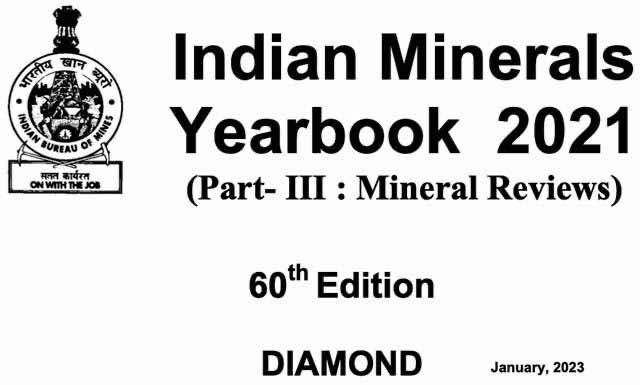
2023
India's Finance Minister announced the government’s move to focus on lab-grown diamonds:
customs duty removed on seeds and
research grants to drive lab-grown diamond industry growth.
India’s exports of polished lab-grown diamonds were (April to March periods):
2018-19 US$274 million,
2019-20 US$473 million,
2020-21 US$637 million and
2021-22 US$1.29 billion.


2023
Spinal fusion costs patients significant mobility. The alternative is a plastic or metal artificial disc that can wear over time.
The articulating surface on the latest replacement discs is made from polycrystalline diamond, resulting in a disc that lasts the life of the patient rather than the standard 10 years. The disc is designed to preserve natural spinal motion and has already been placed in more than 500 patients in Europe.
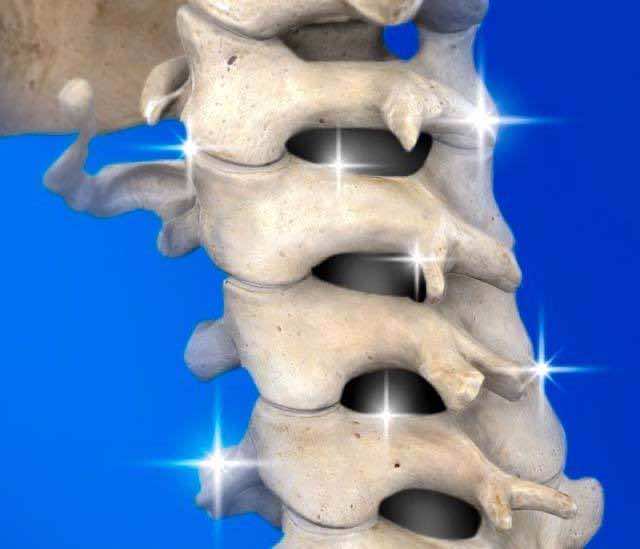
2023
Founded in 2020, HB Antwerp buys rough diamonds, 10.8 carats and above, from the Karowe Mine in Botswana (Lucara’s sole mine in Botswana). In return, Lucara will get a percentage of the final polished price, minus HB’s margin.
Botswana agreed to take a 24% stake in HB Antwerp, as it seeks to gain more value from its diamonds.
Photograph shows the Karowe diamond mine.
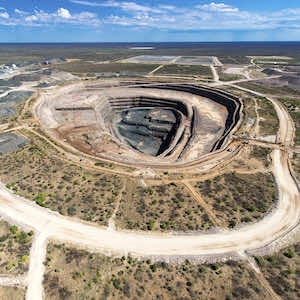
2023
Botswana, which produces more of the world’s natural diamonds than any country but Russia, has partnered with De Beers for decades. Since De Beers found diamonds in 1966, and mining revenues began to flow, life expectancy in Botswana has climbed from 37 to 61 years.
In the 2011 diamond sales and marketing agreement with De Beers, Botswana kept 25% of the rough stones extracted by Debswana (De Beers and Botswana jointly own Debswana, which mines most of the country's rough gems). Because De Beers also pays taxes and royalties on the stones it mines, Botswana’s income was more than the 25/75 split suggests.
In negotiations that concluded, just as the deadline for a new 10 year agreement expired (June 2023), Botswana will get 30% of output from Debswana. The Botswana government also said that there is a tentative agreement that this share will eventually increase to 50%. The agreement also includes provisions for De Beers to support the development of the diamond cutting and polishing industry in Botswana.

2023
In 2022, a lab-grown seller asked France’s Ministry of the Economy, Finance, and Industrial and Digital Sovereignty to modify the rule to allow the use of the term 'laboratory created' instead of 'synthetic'. But, in October 2023, following consultations with the trade, the Ministry decided that things should remain as is - a 2002 decree lists synthetic as the only acceptable qualifier for stones 'whose physical, chemical properties and crystal structure correspond essentially to those of the natural stones that they copy'.
The US Federal Trade Commission used the word synthetic in a 2021 blog post about shopping for gemstones.


2023
As recently as 2016, a 1 carat lab-grown diamond sold for 10% less than an equivalent natural diamond; by the end of 2022 the differential had widened to as much as 80%.
Recent new production capacity has been driven by declining capital equipment and production costs. For instance, off-the-shelf Chemical Vapour Deposition (CVD) machines can currently be acquired for under US$100,000.
India and China combined are estimated to account for almost 75% of global lab-grown diamond jewellery production by volume.
2023
'State of the Diamond Market' by Paul Zimnisky.
Lightbox subtly began selling lab-diamond engagement rings in mid-June in what it calls a 'small, in-market test (of lab-diamond) consumer preferences'; five years after their debut, (on a per-carat-basis) Lightbox diamonds are still estimated to retail for at least 45% less than the average generic lab-diamond on the market.
China's largest jeweler, Chow Tai Fook, said it plans to open 600 to 800 new stores in the mainland in the fiscal year ending March 2024 - this would be down from the 1,500+ opened in the recently completed fiscal year.

2023
Counterfeiting is a serious problem affecting a wide range of industries - from medicine to electronics, causing economic loss, safety concerns and health risks.
A University of Hong Kong team created diamond-based, anti-counterfeiting, labels that are unique and known in the industry as Physically Unclonable Functions (PUFs). The team made these labels by planting tiny diamonds on a silicon plate using Chemical Vapour Deposition (CVD). The diamond particles, all different in shape and size, form a unique pattern that scatters light in a unique way - a 'fingerprint' than can be scanned.

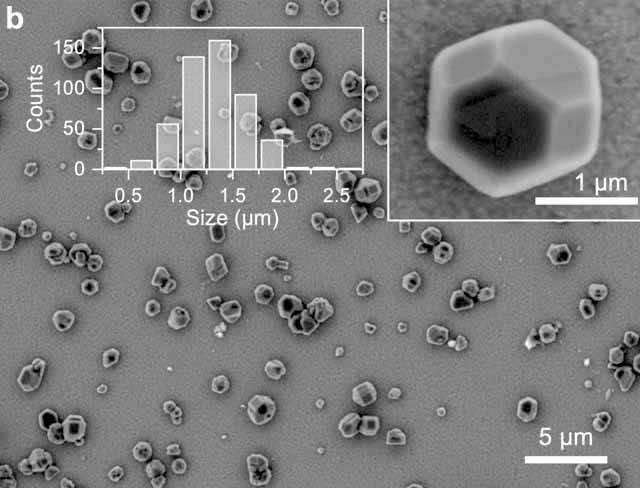
2024
De Beers Group rough diamond sales by value
(with linear trend line).
2024
De Beers is considering reducing the prices of the lab-grown diamonds it sells via its Lightbox jewellery brand. The announcement came as De Beers recorded a sharp drop in sales for 2023, partly because of the impact of synthetics on the natural market.
“The wholesale prices of lab-grown diamonds are falling sharply, leading to financial challenges at some leading lab-grown diamond producers,” parent company Anglo American noted in its 2023 results. “These price declines are expected to lead to further substantial reductions in retail prices, with De Beers’ Lightbox brand testing significantly lower prices for its products.” These reductions will “further reinforce consumers’ understanding of the fundamental differences between lab-grown and natural-diamond jewellery,” Anglo American continued.
Lightbox currently sells most of its stones for US$800 per carat at retail, with the Finest line of higher-quality items going for US$1,500 per carat. It also sells lower-quality Lightbox Basics stones for US$600 per carat.
Under the test, the standard products will retail for US$600 per carat for loose stones, while the Finest line will carry a price tag of US$1,000 per carat for both loose stones and set jewellery, a De Beers spokesperson told Rapaport News. “The test is focused on ensuring Lightbox reflects prevailing [lab-grown diamond] sector dynamics,” the spokesperson added.


2024
De Beers Diamonds with Code of Origin inscriptions now come with QR code tags. When a customer scans a code, it opens a site with multimedia content ranging from verification that the diamond is natural rather than lab-grown to identifying whether it originated in Botswana, Canada, Namibia or South Africa, the 4 countries where De Beers operates mines.
A more detailed content program, called Origin Story, is being tested at some retail stores in the USA. In scanning that QR code, the customer will be able to understand the character of their diamond, its rarity, what its four C’s are and its birthmarks (inclusions).
To qualify for the program, a diamond must be at least 0.8 carats, found at a De Beers mine, tracked on De Beers’ Tracr platform, graded by De Beers’ Institute of Diamonds and sold through a De Beers sightholder.

2024
The USA Treasury’s Office of Foreign Assets Control (OFAC) confirmed that its new sanctions on Russian diamonds will begin in March 2024. This announcement indicates that the USA is adhering to the G7 framework (strongly backed by the EU).
The new rules will ban diamonds that were mined, extracted, produced, or manufactured wholly or in part in the Russian Federation, notwithstanding whether such diamonds have been substantially transformed (cut and polished) outside of the Russian Federation.
Initially, the ban will apply to diamonds weighing 1 carat or more; the sanctions will expand to diamonds of at least 0.5 carats, in September 2024.
In the plan, every diamond is tracked on a blockchain-based ledger (‘mine to finger’) and all diamonds pass through a single 'rough node', most likely Antwerp’s Diamond Office.
While G7 certification will be free, the tracking system needed to support it will add a cost of about US$30 a carat.
While G7 statements have called the certification mechanism a 'blockchain ledger', sources describe the system set up by the GIA as more of a 'browser', which will take information from all the different tracking systems (Tracr, Everledger, Sarine etc.) and make it accessible to Customs agents.
the 4 Cs
Cost is the fifth 'C'
Colour
Typical diamonds are valued based on their absence of colour, with the most valuable and rarest stones being completely colourless. (note that there is no mention of yellow in the following GIA colour grades).
| GIA | International | Traditional |
|---|---|---|
| D | Exceptional White + | Jager / Finest Blue White |
| E | Exceptional White | River / Blue White |
| F | Rare White + | Top Wesselton / Fine White |
| G | Rare White | Wesselton / White |
| H | White | Top Crystal / Finest Silver Cape |
| I | Slightly Tinted White | Crystal / Silver Cape |
| J | Slightly Tinted White | Top Cape / Fine Cape |
However, there is another category of diamonds called fancy coloured diamonds.
The most common of all non-carbon atoms found in diamonds is nitrogen. Most diamonds contain some nitrogen, but only enough to give yellow hints. When enough nitrogen gets trapped inside the diamond’s crystal structure, the diamond can be identified as a fancy yellow diamond.
The most desirable natural diamond colour is pink. These diamonds get their colour via plastic deformation. This requires extreme pressure to deform the diamond’s crystal structure in such a way that it reflects red light. The more extreme the plastic deformation, the more saturated the colour of the diamond.
Blue diamonds form when boron gets trapped inside the crystal structure. Boron absorbs yellow light and thus reflects blue light; subtle differences in the concentration and positioning of these boron atoms result in different hues and shades of blue. The origin of natural blue diamonds is far deeper inside the Earth than other diamonds.
Green diamond colour is a result of Earth’s naturally decaying radioactive materials emitting penetrating radiation that knocks electrons or carbon atoms out of their crystal lattice position, causing the stone to reflect green light.
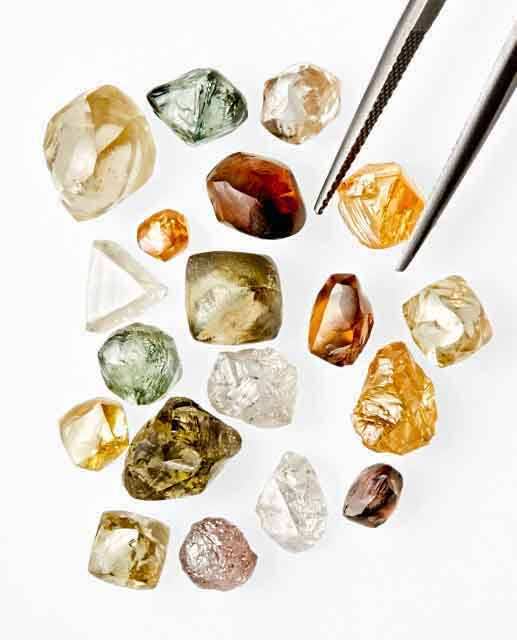


Clarity
By a skilled grader using 10x magnification.

| Grade | Description |
|---|---|
| Internally Flawless (IF) | No inclusions visible under 10x magnification |
| Very, Very Slightly Included (VVS1 & VVS2) | Inclusions so slight they are difficult for a skilled grader to see under 10x magnification |
| Very Slightly Included (VS1 & VS2) | Inclusions are observed with effort under 10x magnification, but can be characterized as minor |
| Slightly Included (SI1 & SI2) | Inclusions are noticeable under 10x magnification |
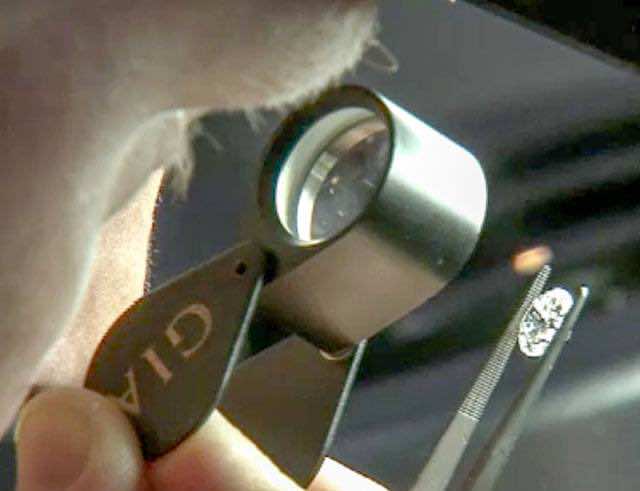
Cut
Marcel Tolkowsky in his book 'Diamond Design' (1919), published the specifications of what would later be called the Tolkowsky Brilliant. It was derived from mathematical calculations that considered both brilliance and the fire of the stone. Marcel Tolkowsky found that if a diamond was cut too deep or shallow, then light would escape from the sides or bottom of the diamond, resulting in a loss of:
brilliance (white light reflected up through the top of a diamond),
fire (coloured light reflected from within a diamond) and
sparkle (combination of fire and brilliance).
Photograph shows pages from 'Diamond Design'.
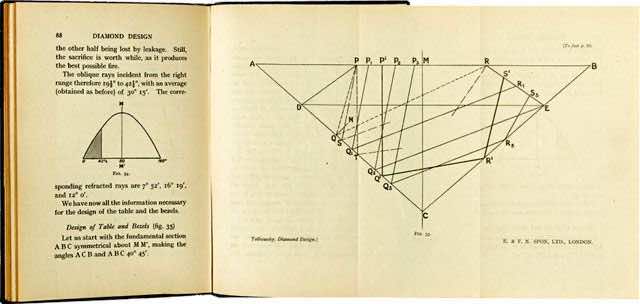
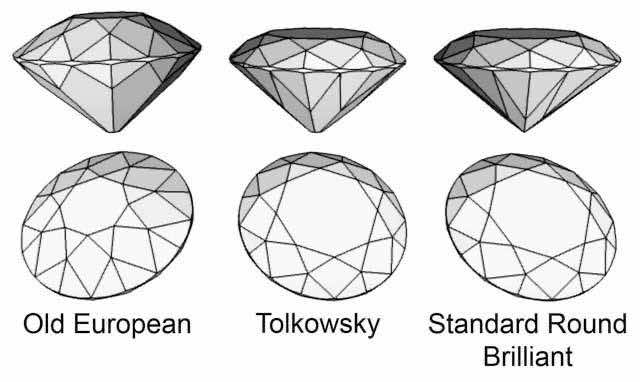
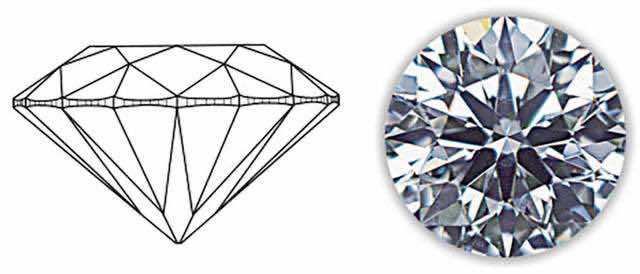
The Tolkowsky design was slightly modified to become the Standard Round Brilliant (SRB), widely used today.
| Carat | Diameter (mm) |
Height (mm) |
|---|---|---|
| 0.10 | 2.98 | 1.67 |
| 0.25 | 4.04 | 2.26 |
| 0.50 | 5.09 | 2.85 |
| 0.75 | 5.83 | 3.27 |
| 1.00 | 6.42 | 3.60 |
| 1.25 | 6.91 | 3.80 |
| 1.50 | 7.35 | 4.12 |
| 1.75 | 7.74 | 4.33 |
| 2.00 | 8.09 | 4.54 |
| 2.50 | 8.71 | 4.88 |
| 3.00 | 9.25 | 5.19 |
Carat
Carat is a term used to describe the weight of a diamond; the word originates from Ceratonia Siliqua, commonly known as the Carob tree.
In ancient times, before scales and units of mass were invented, diamond traders compared the weight of a diamond to the seeds of the Carob tree. Each Carob seed had a uniform weight, equal to 0.20 g or 200 mg and hence determined the weight of the diamond.
The metric carat equal to 200 mg was proposed in Paris in 1907.
Photograph shows carob pods and seeds.
